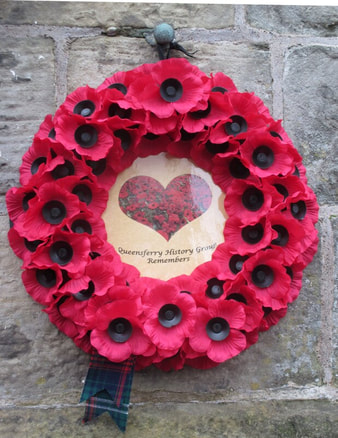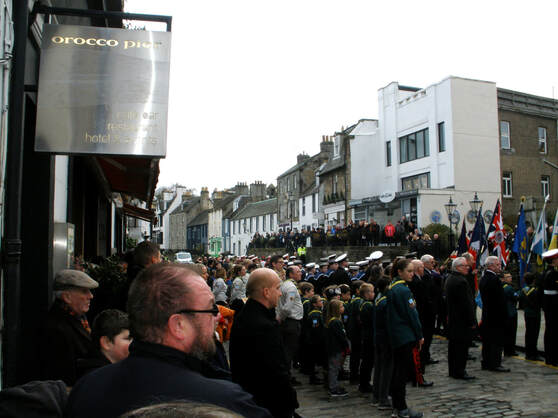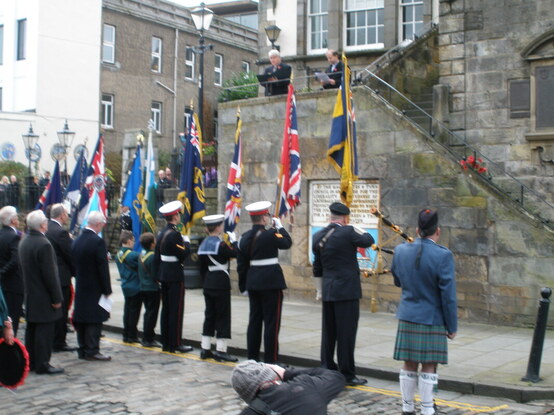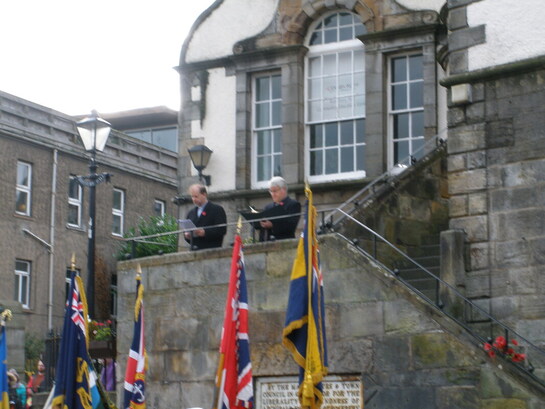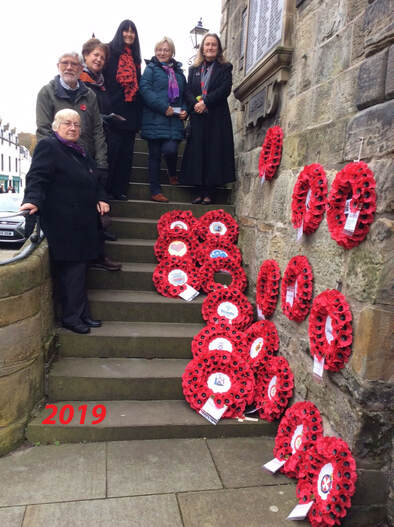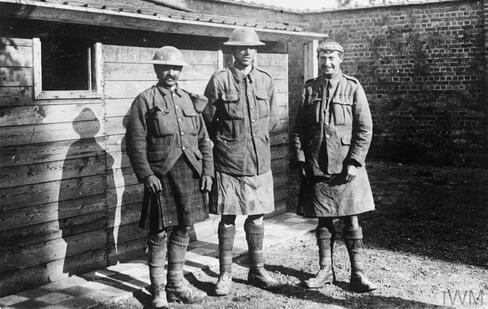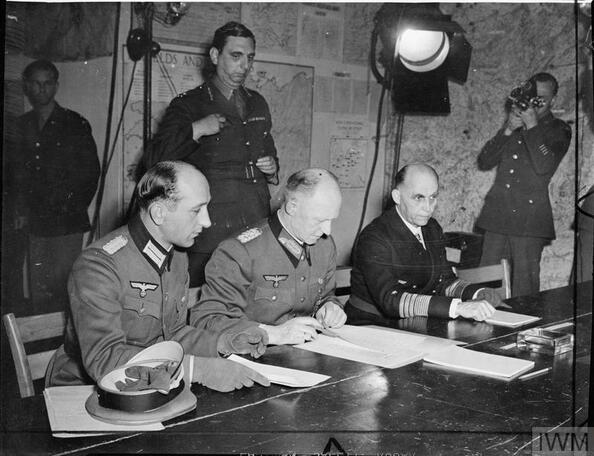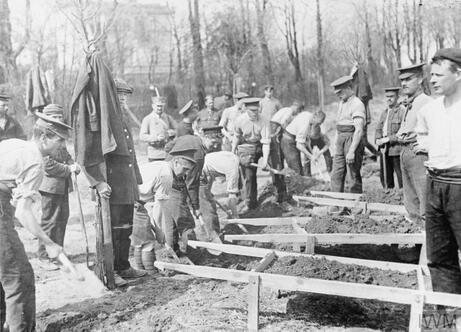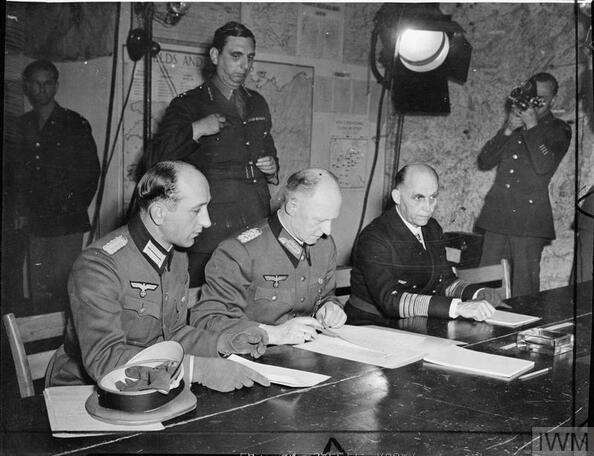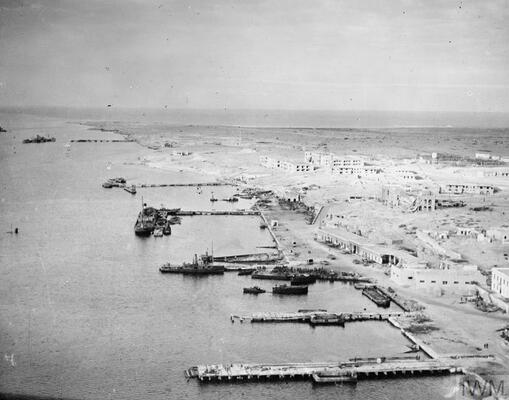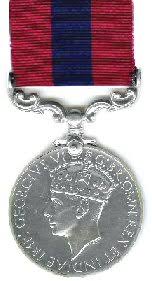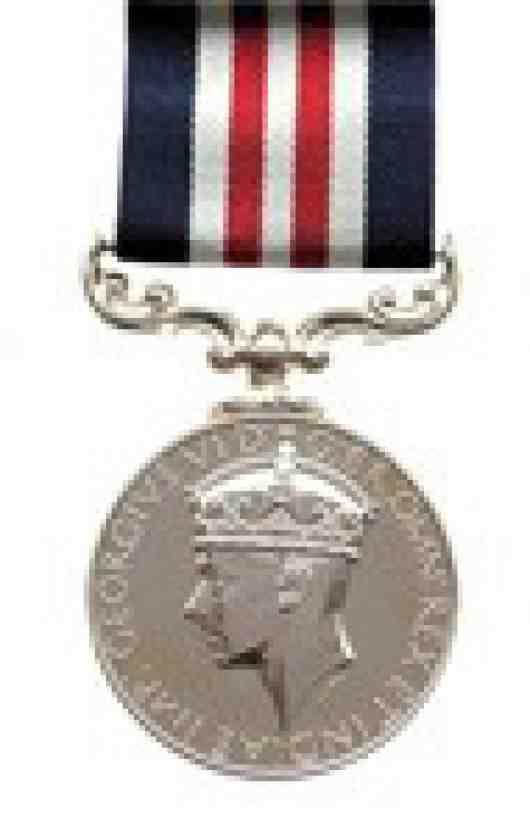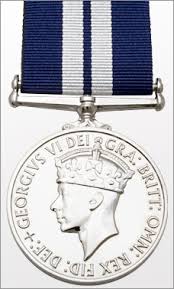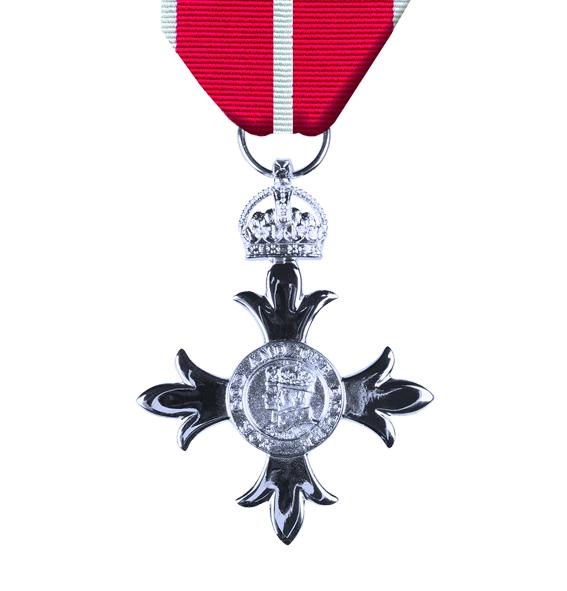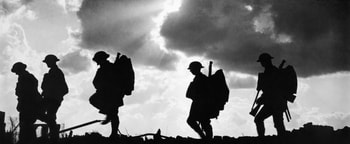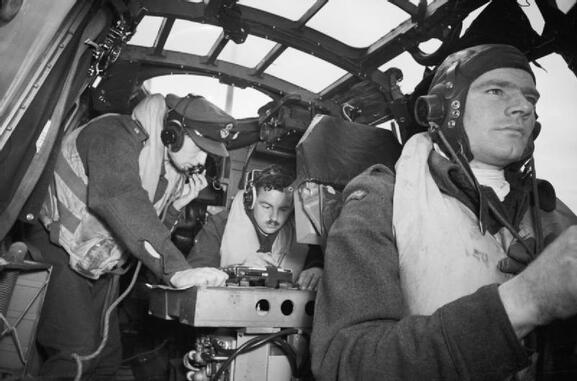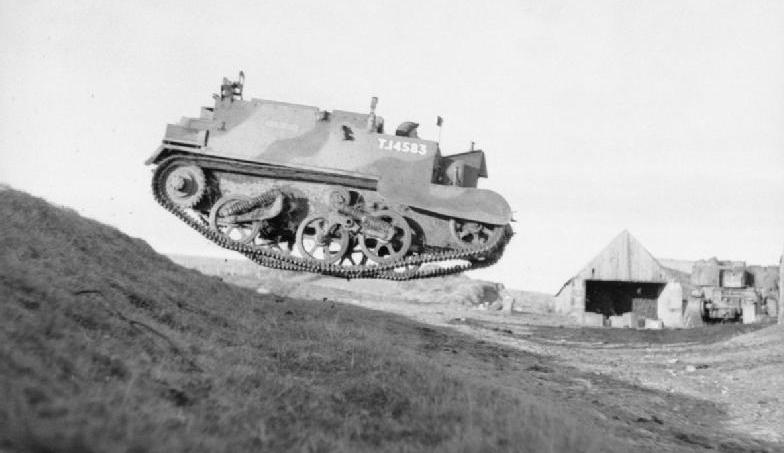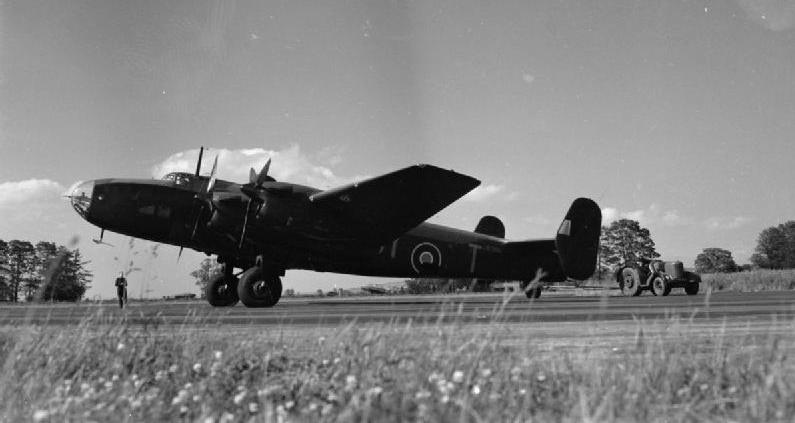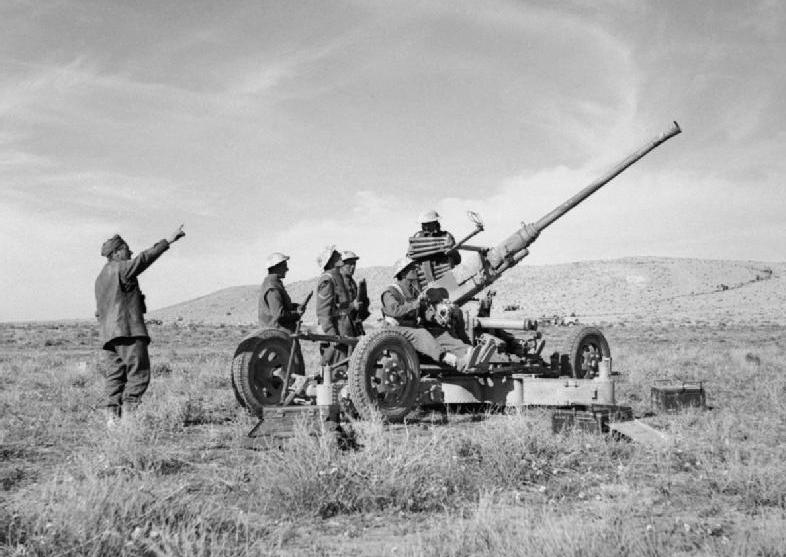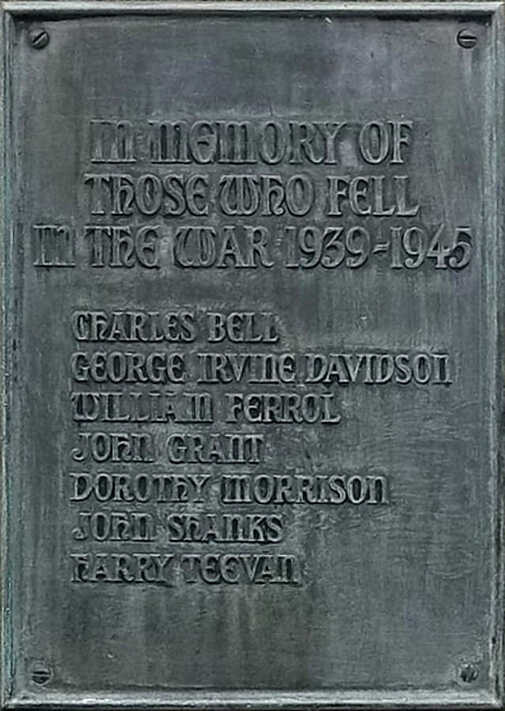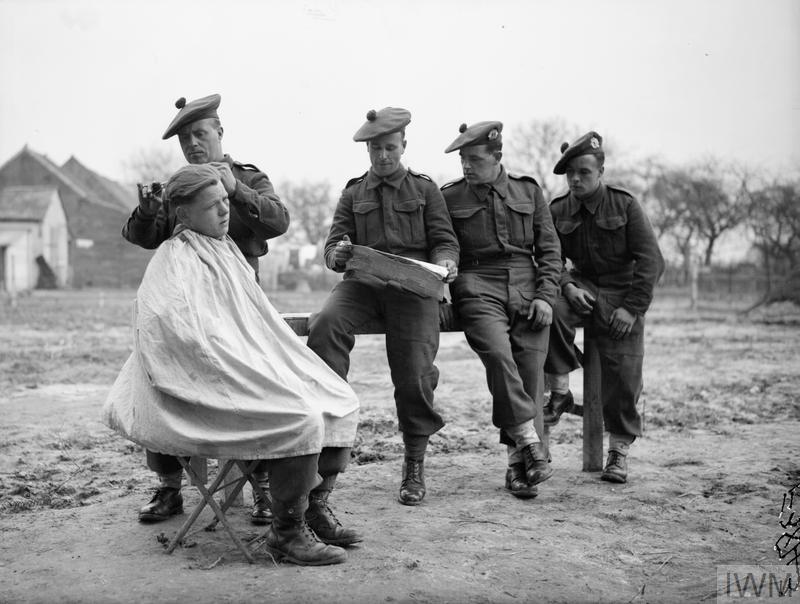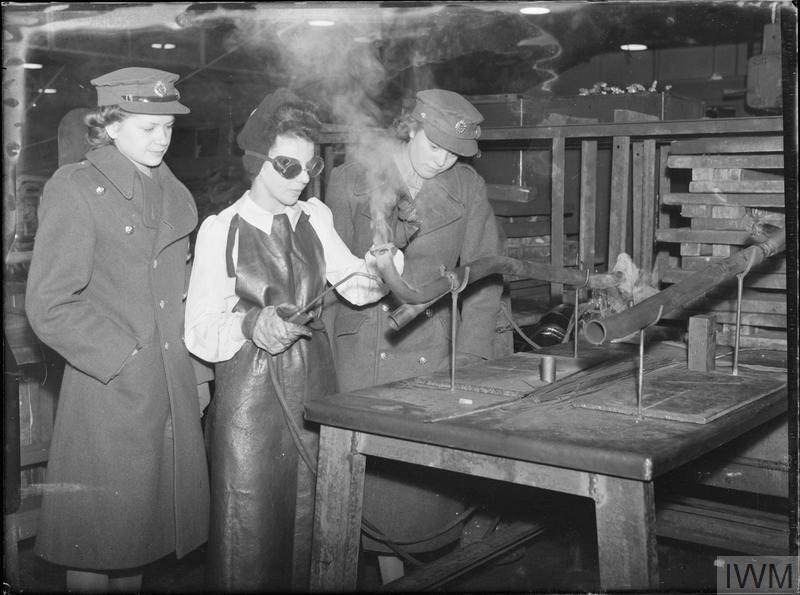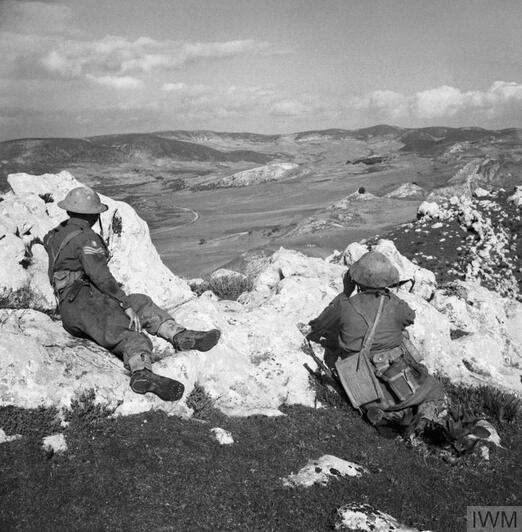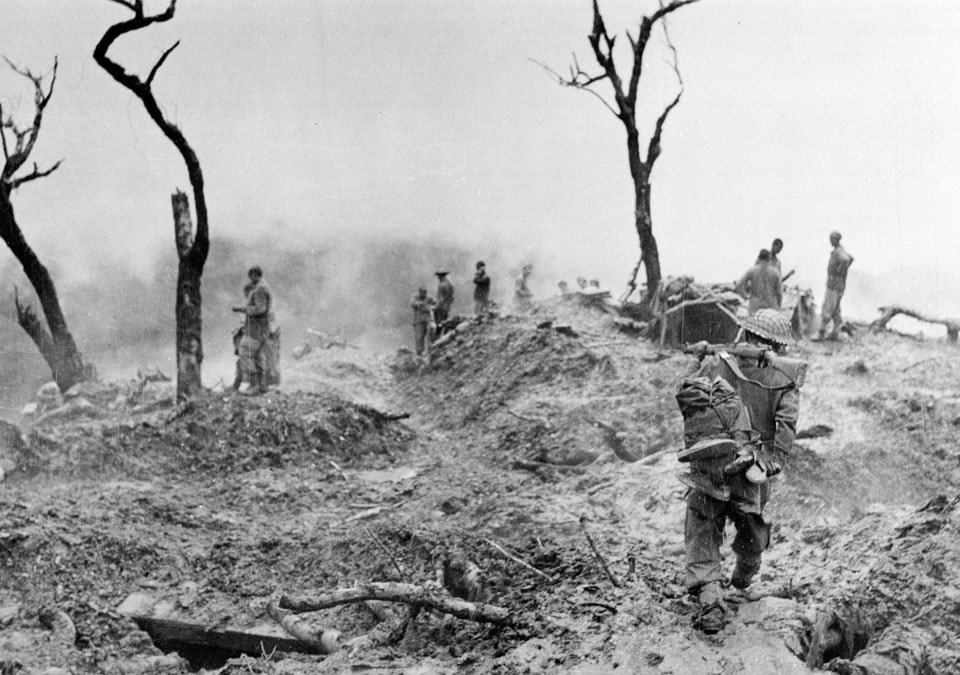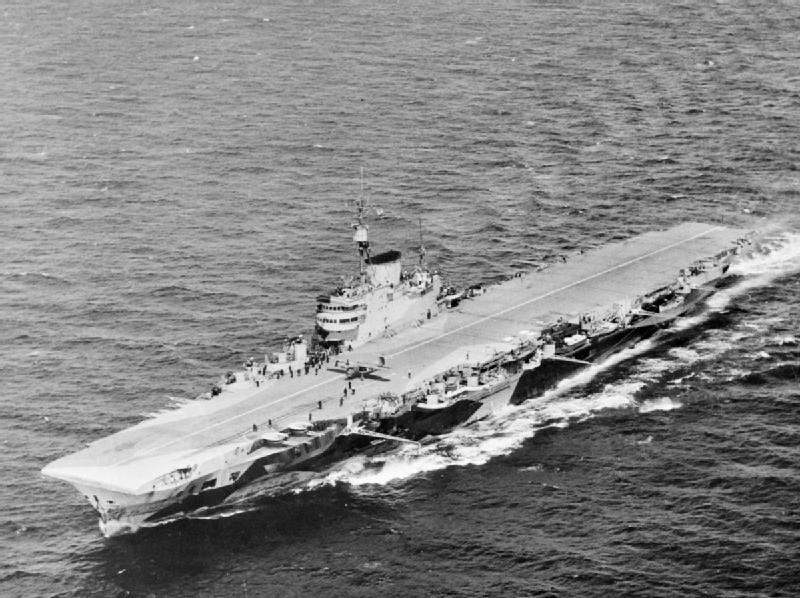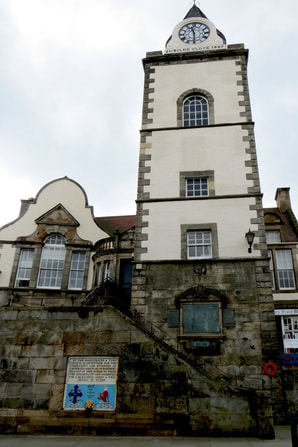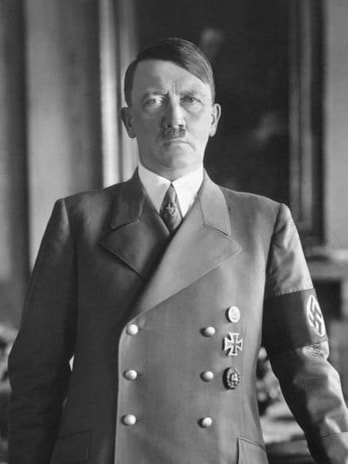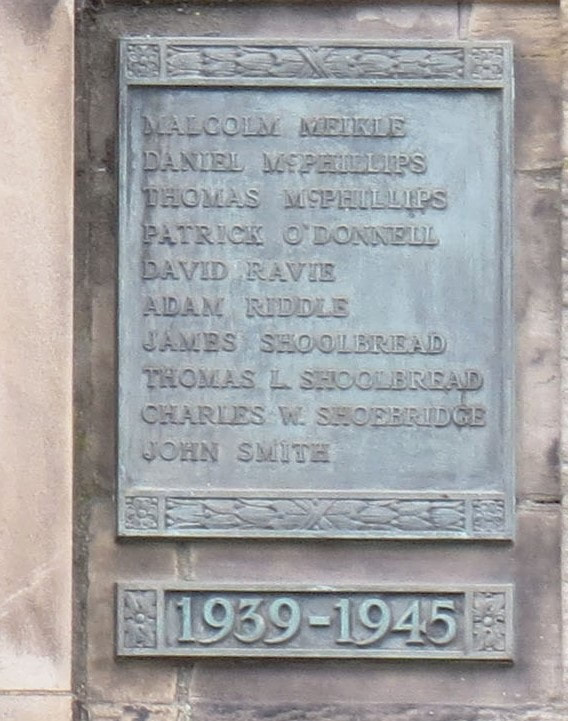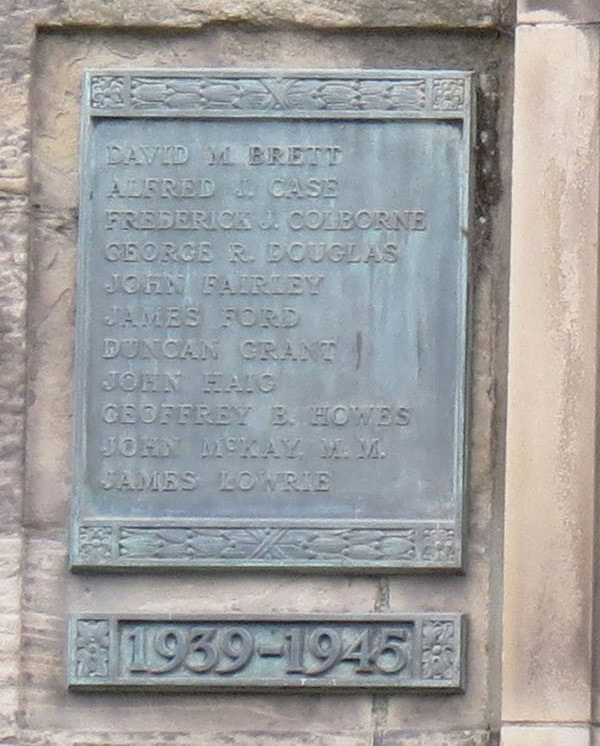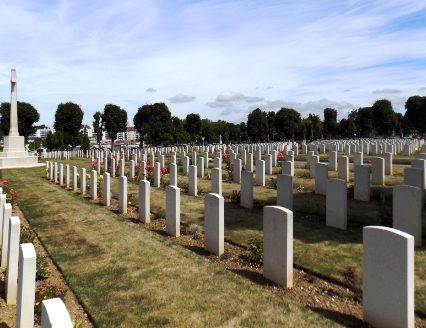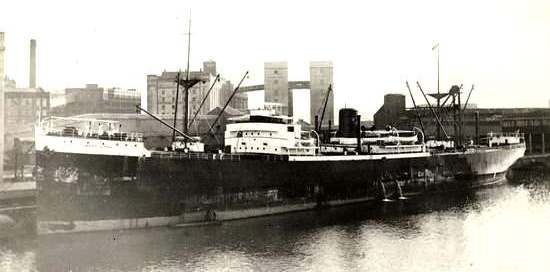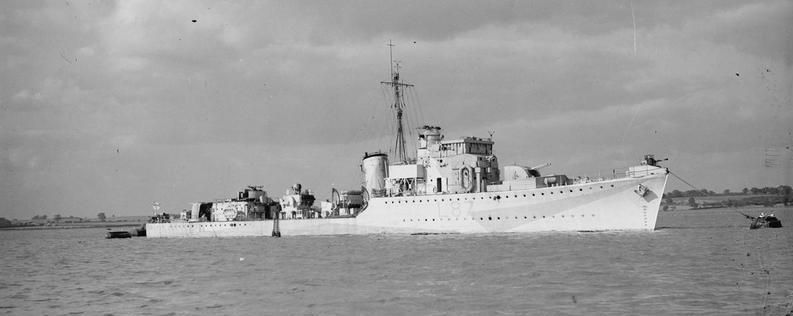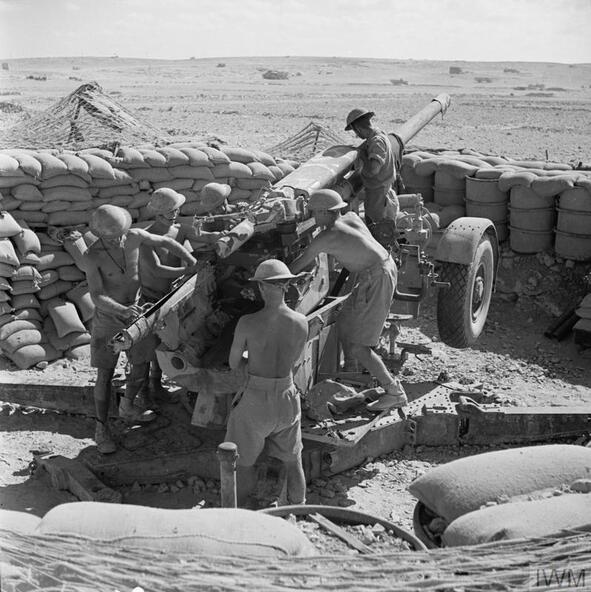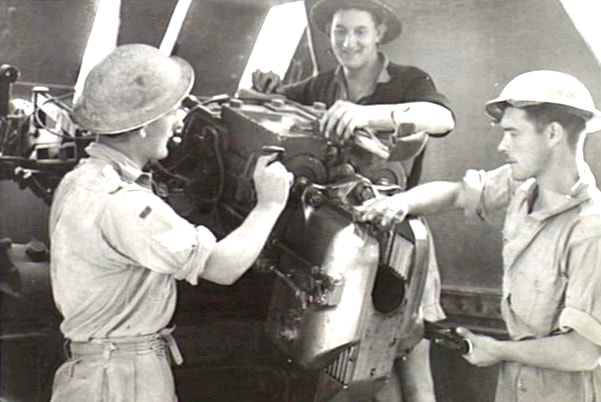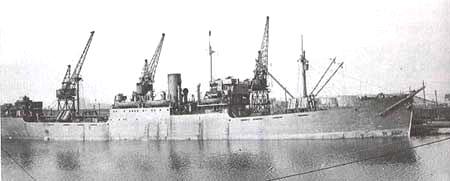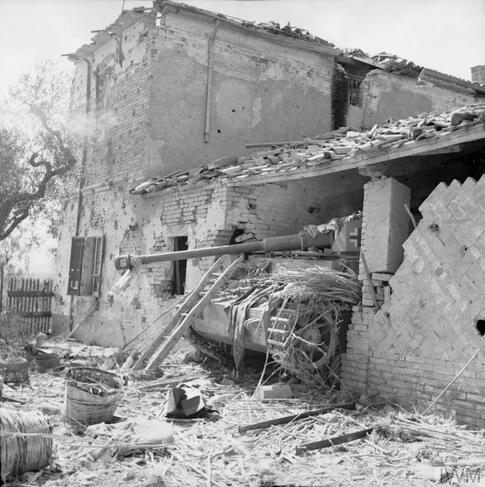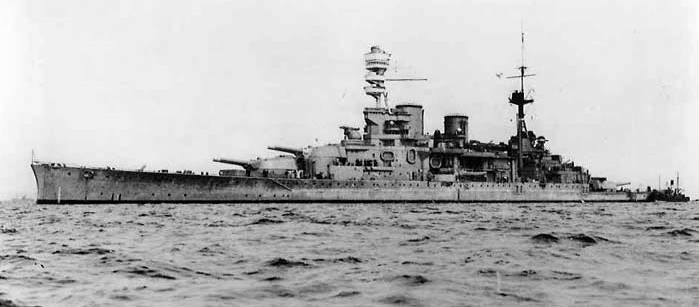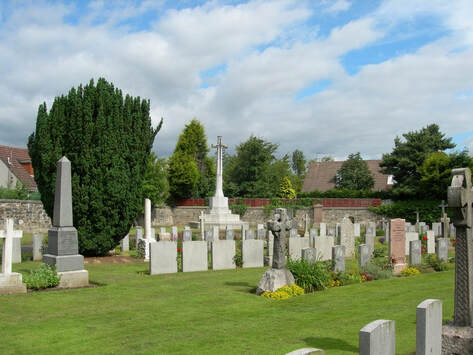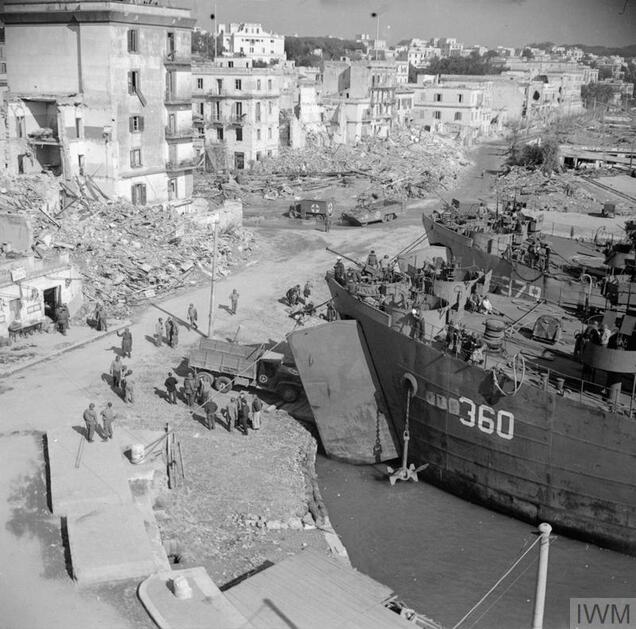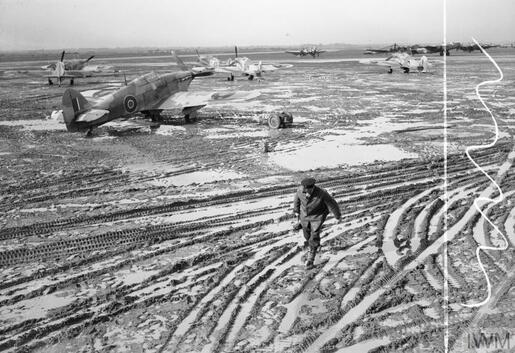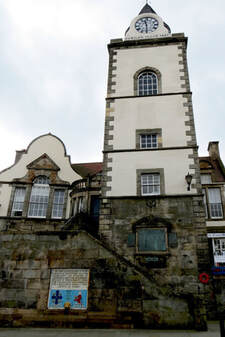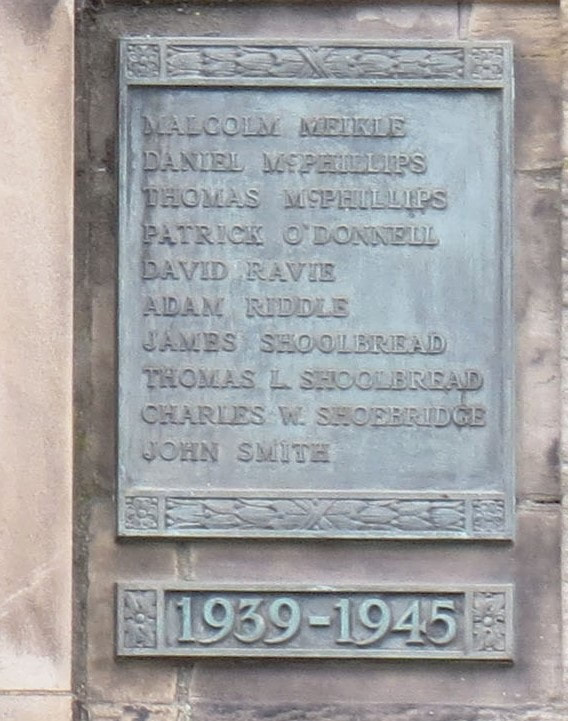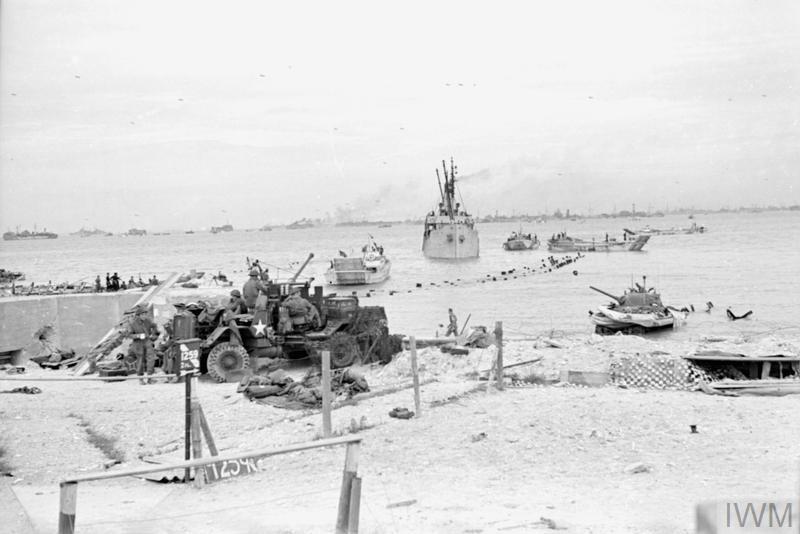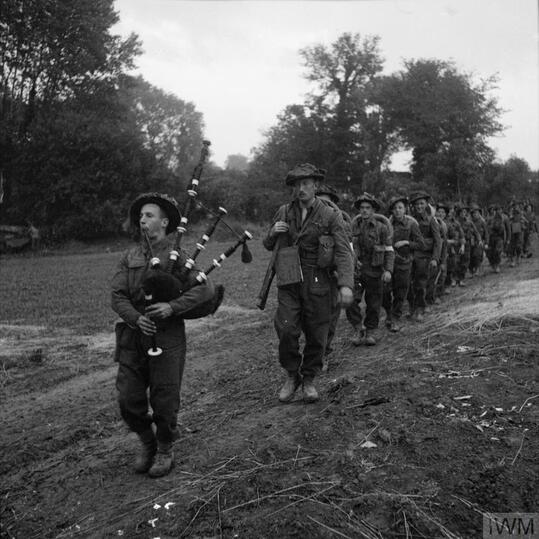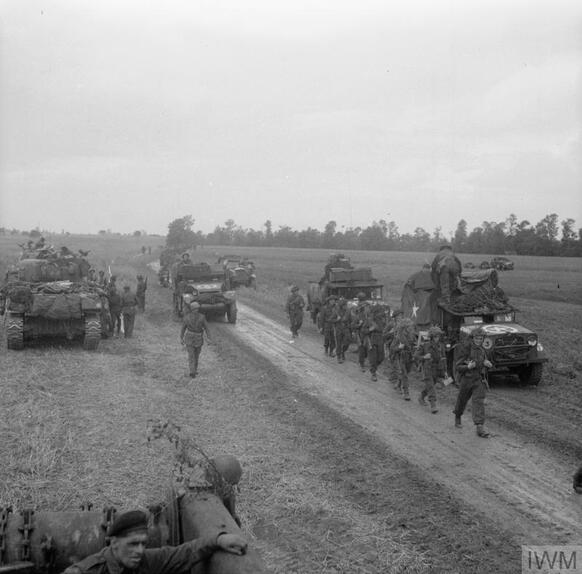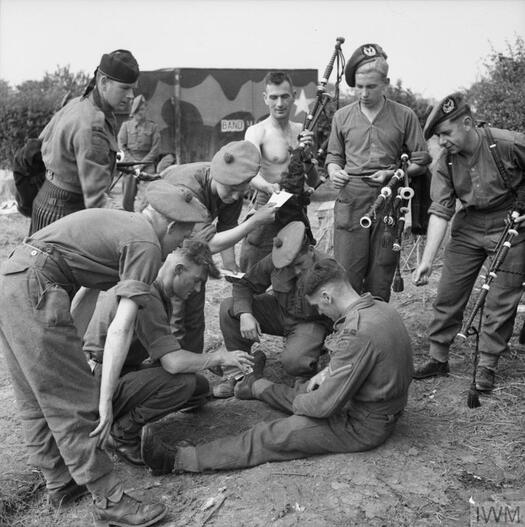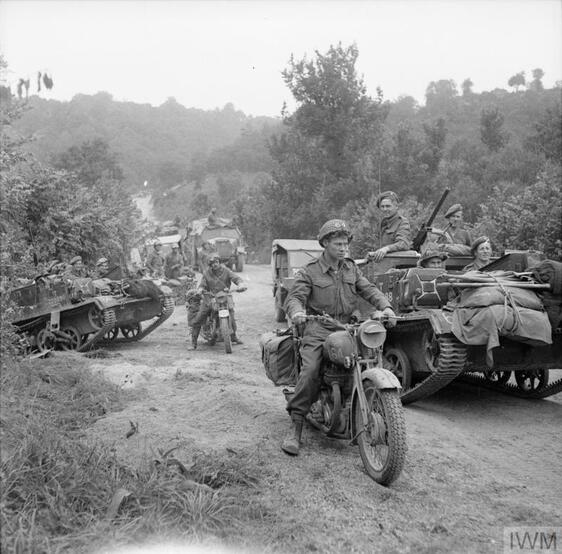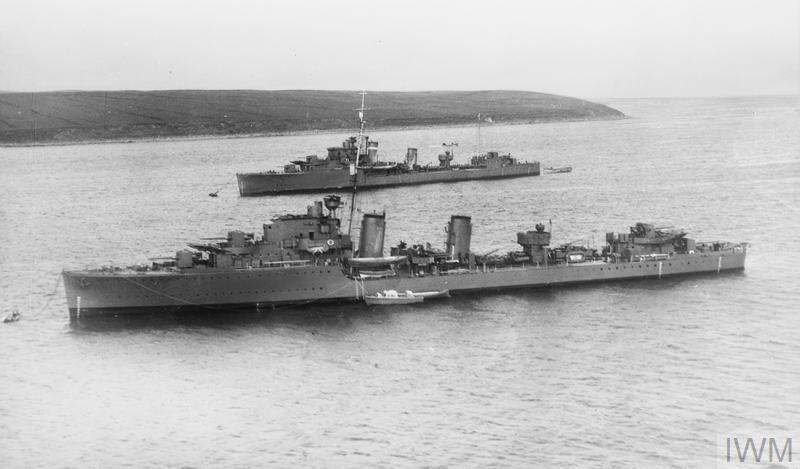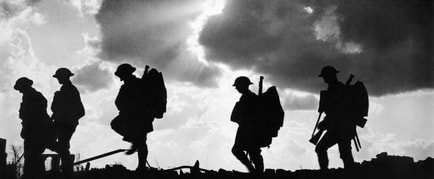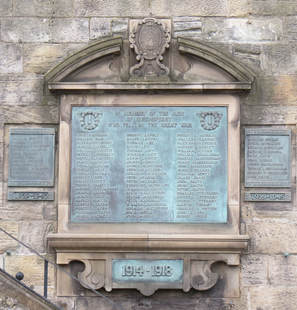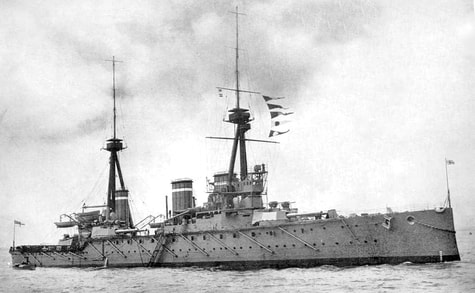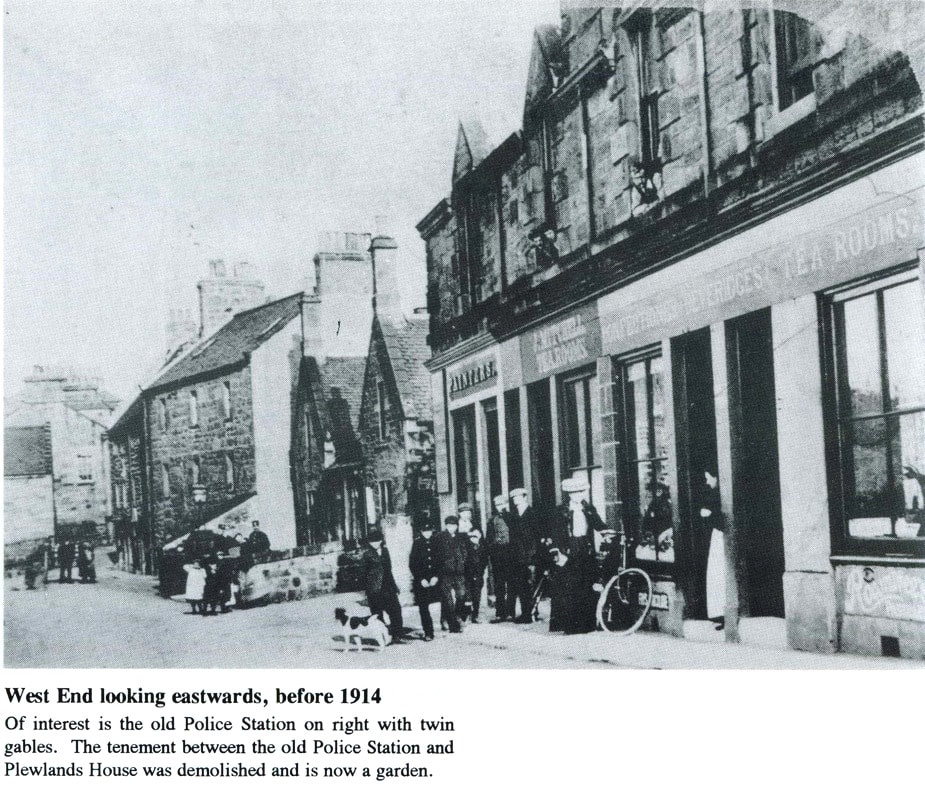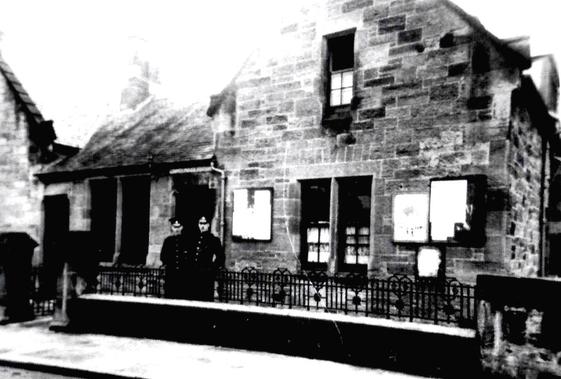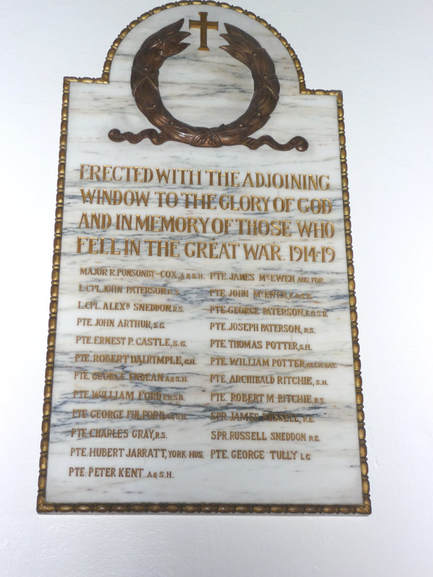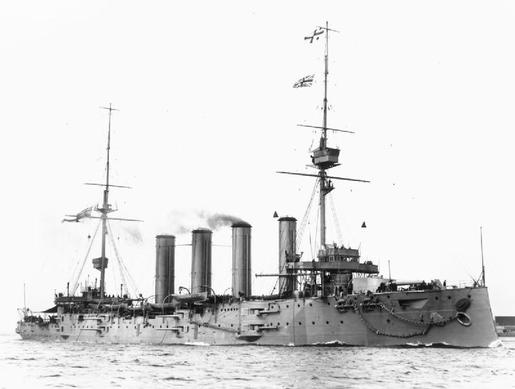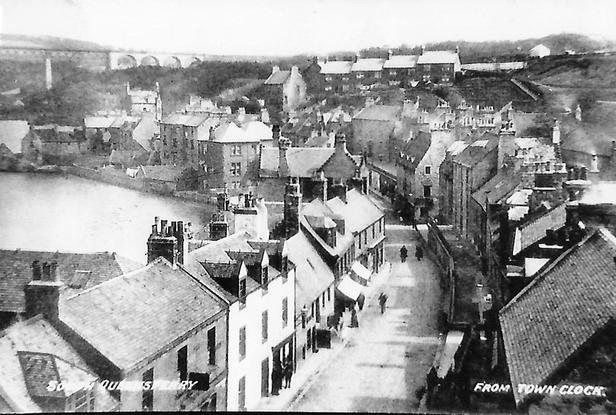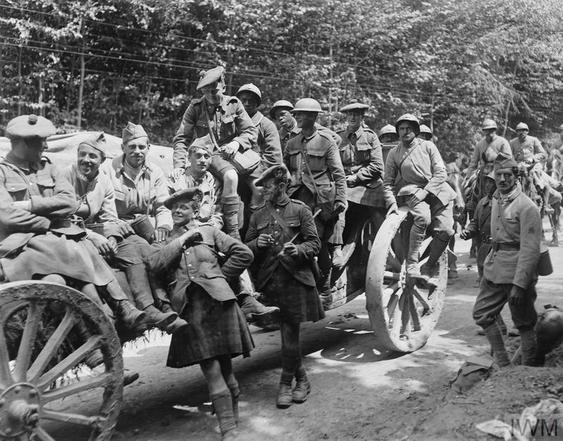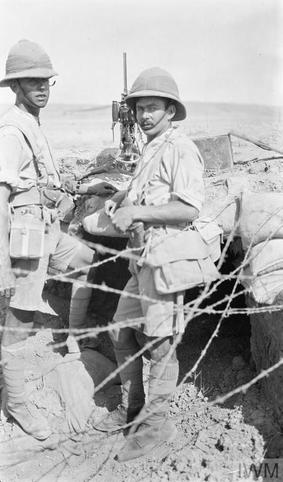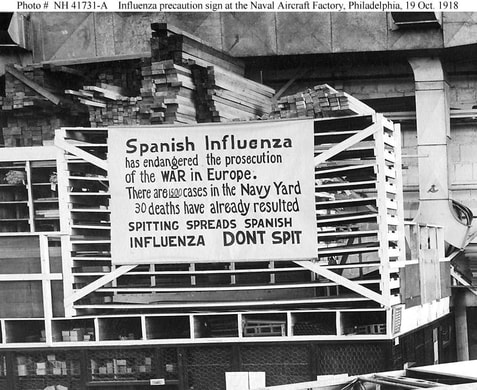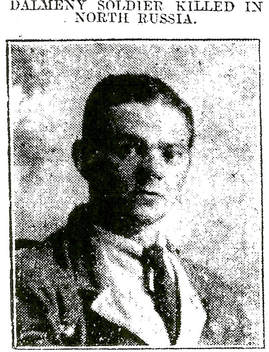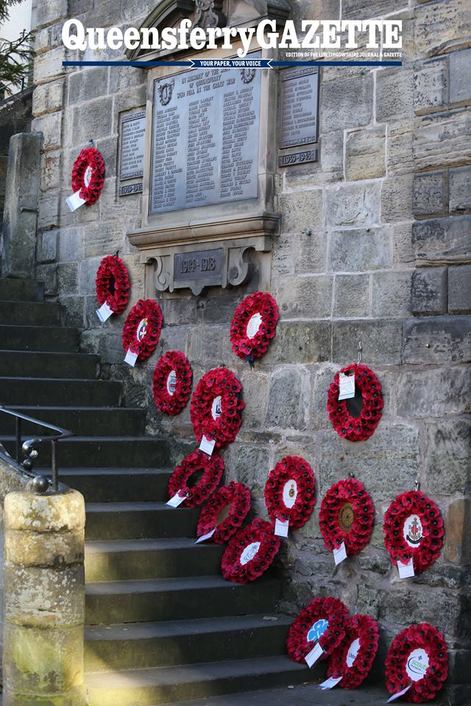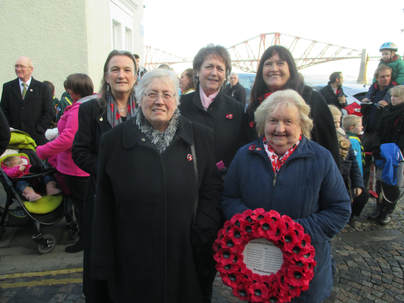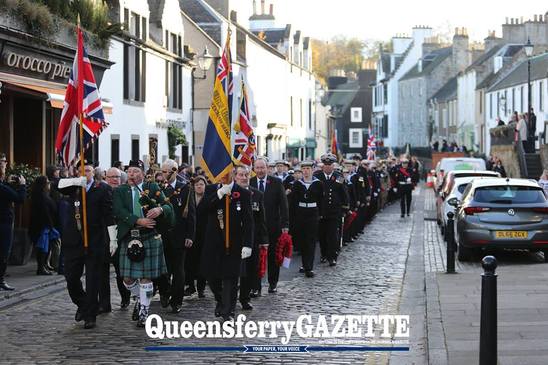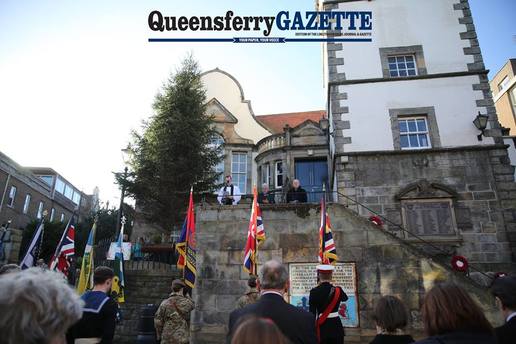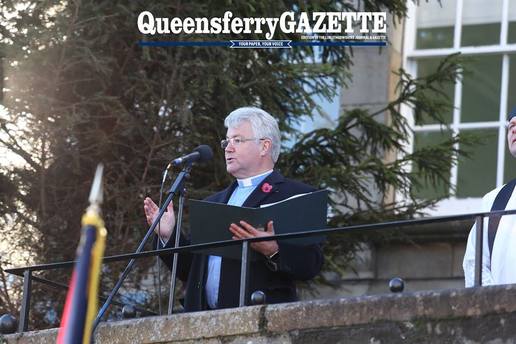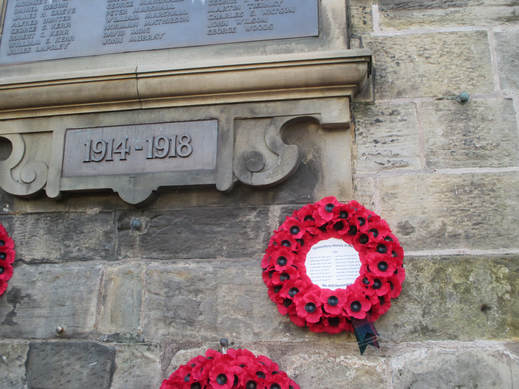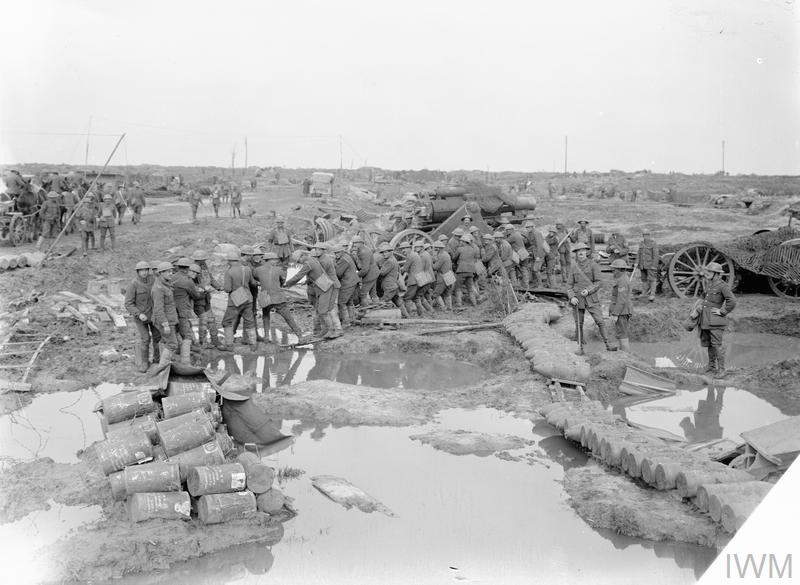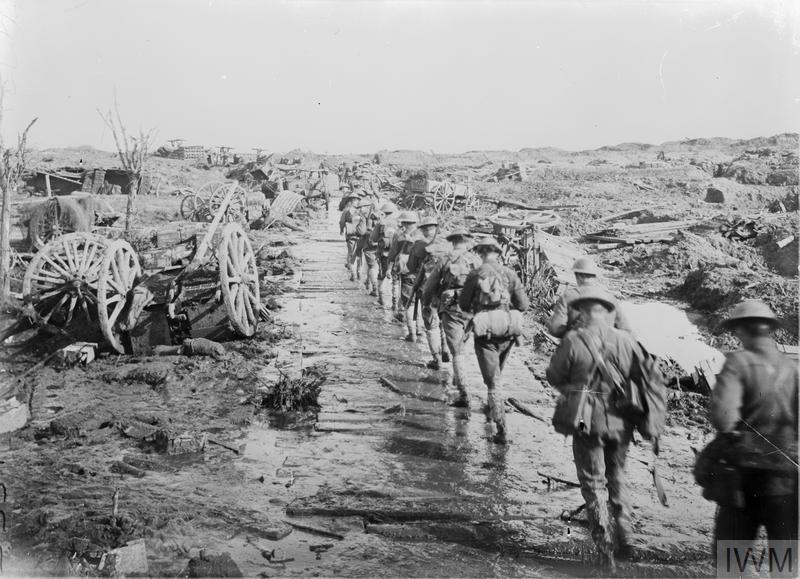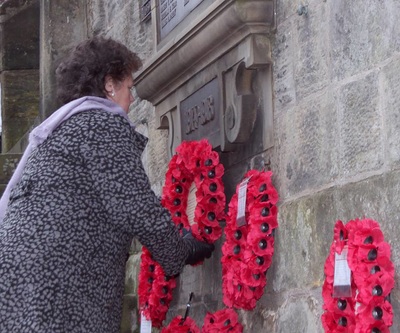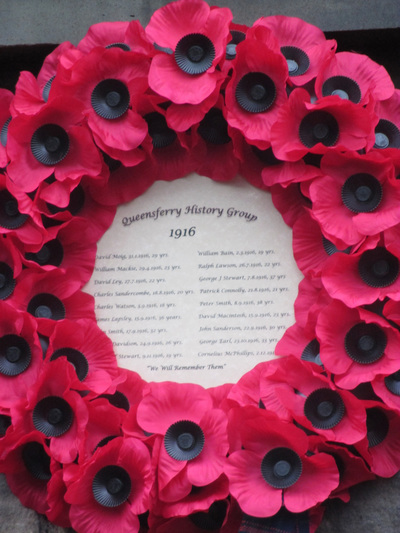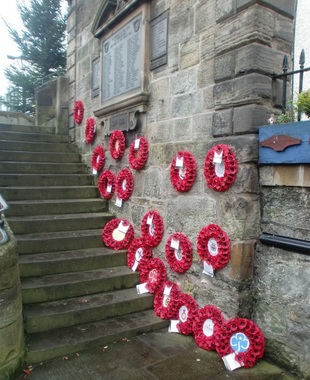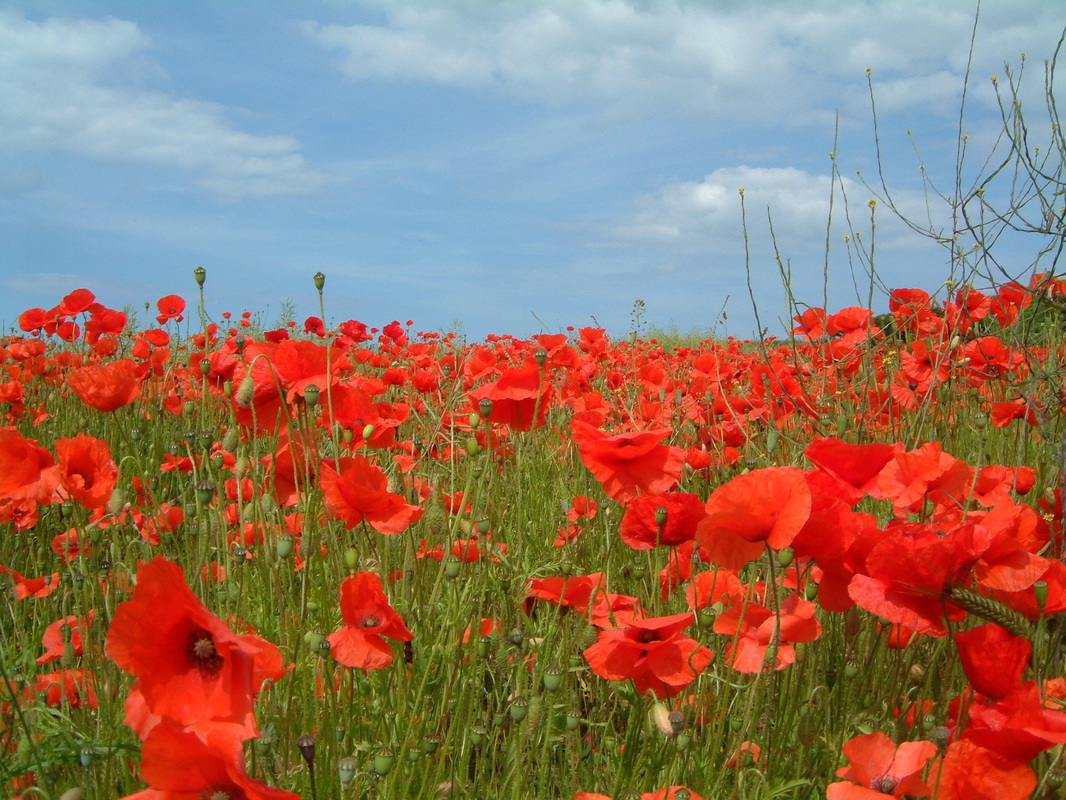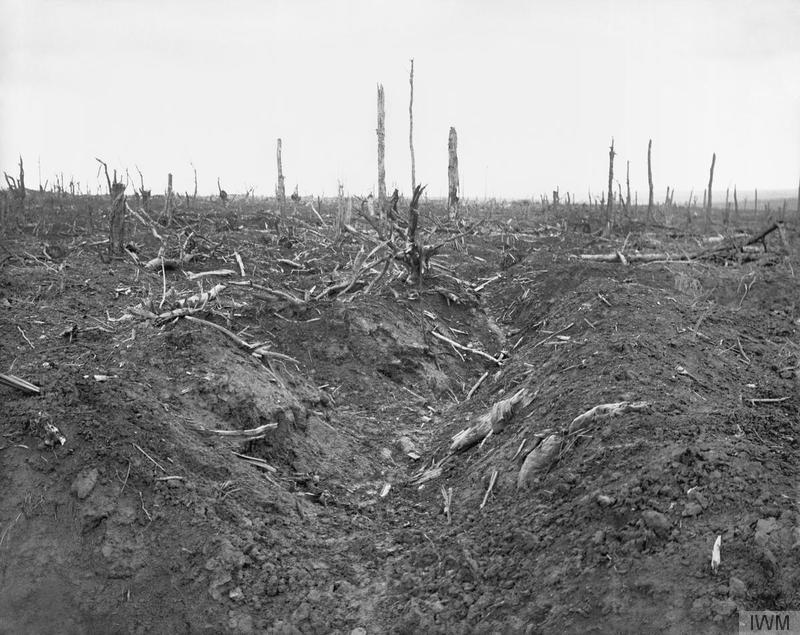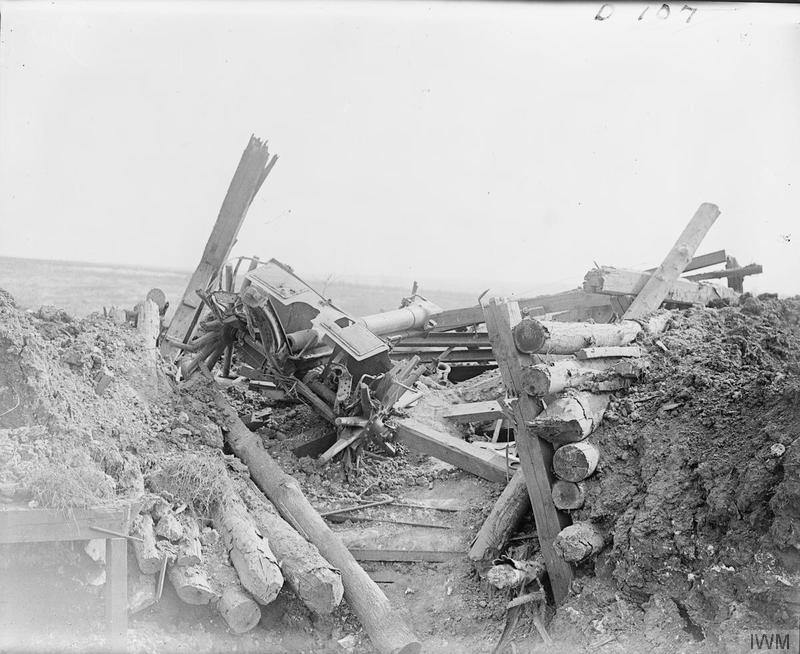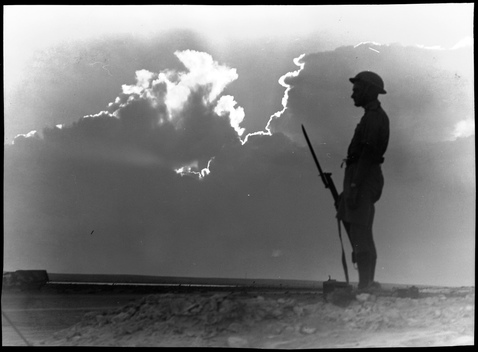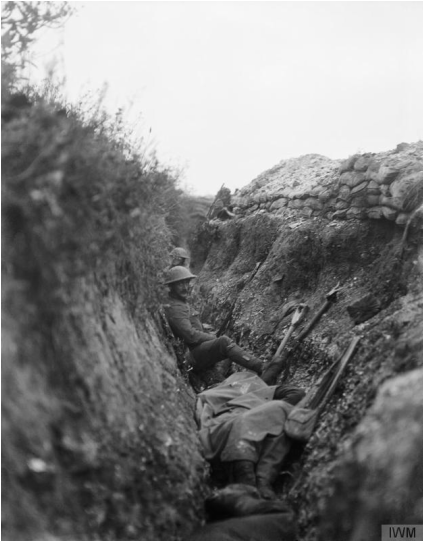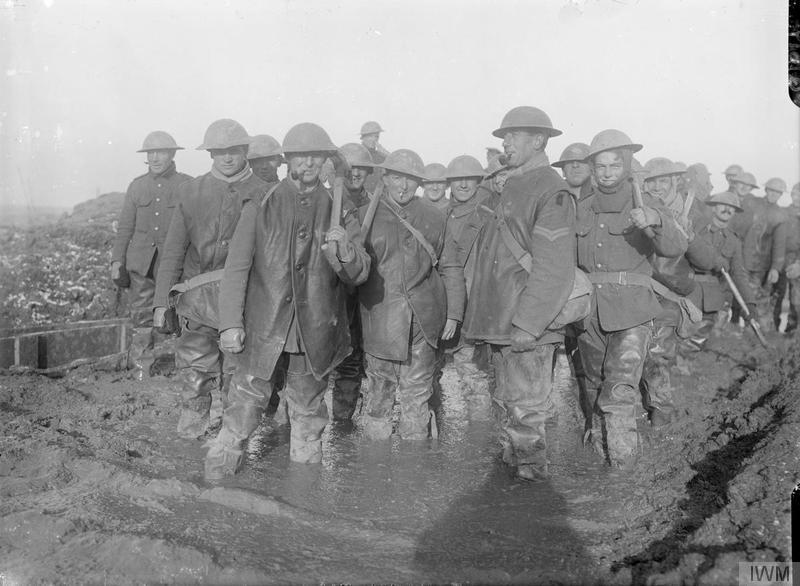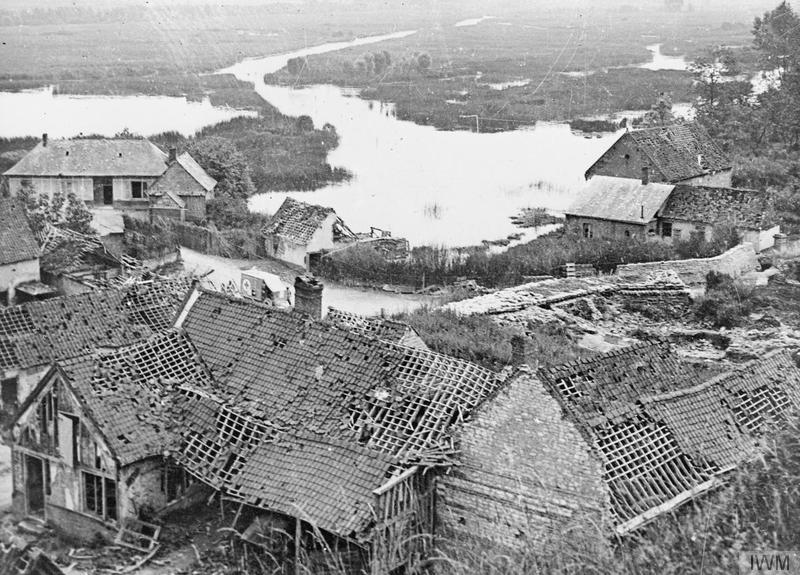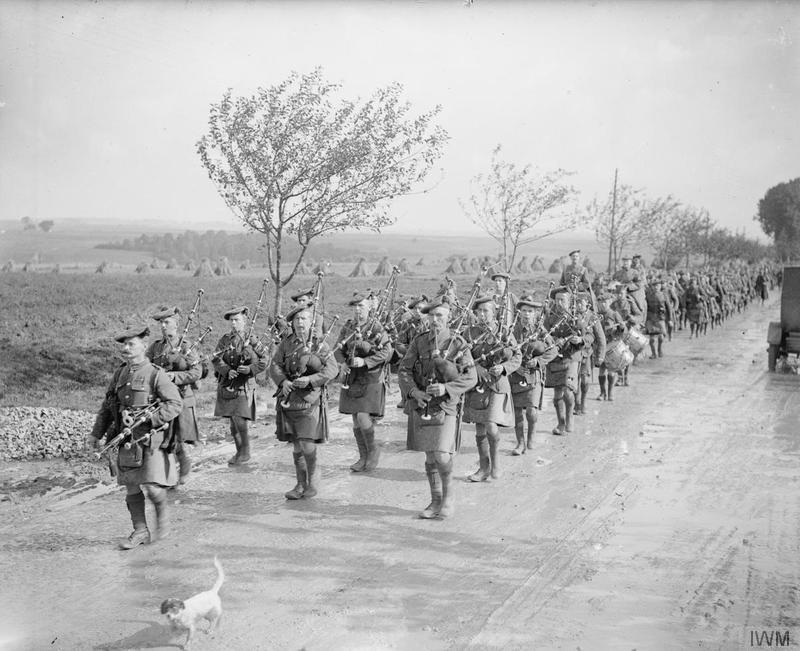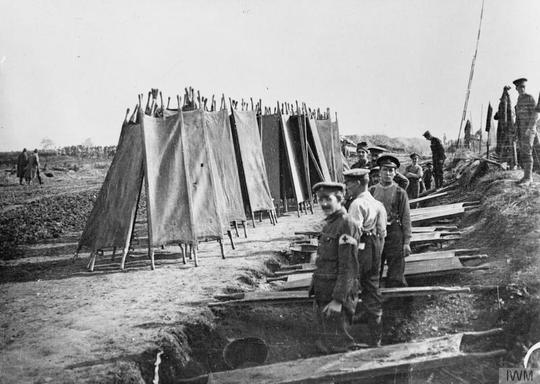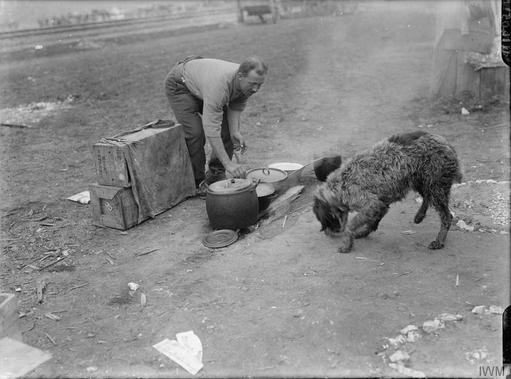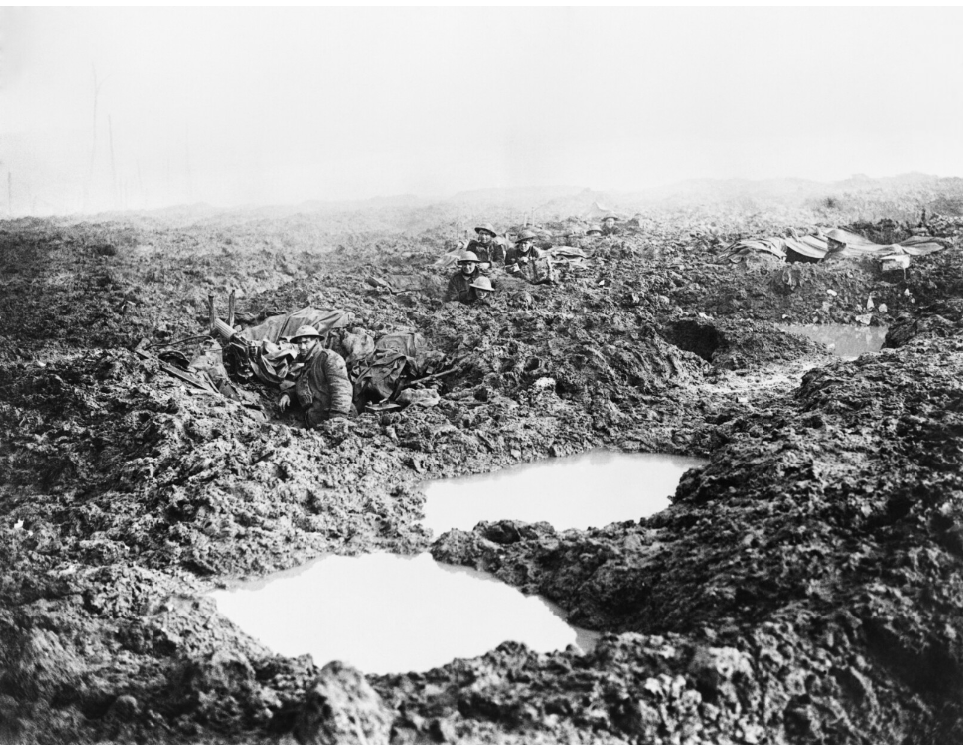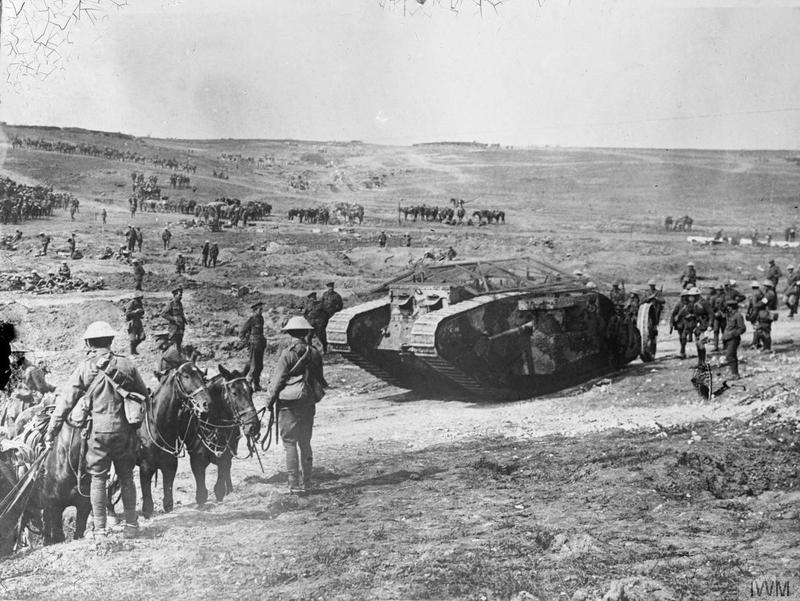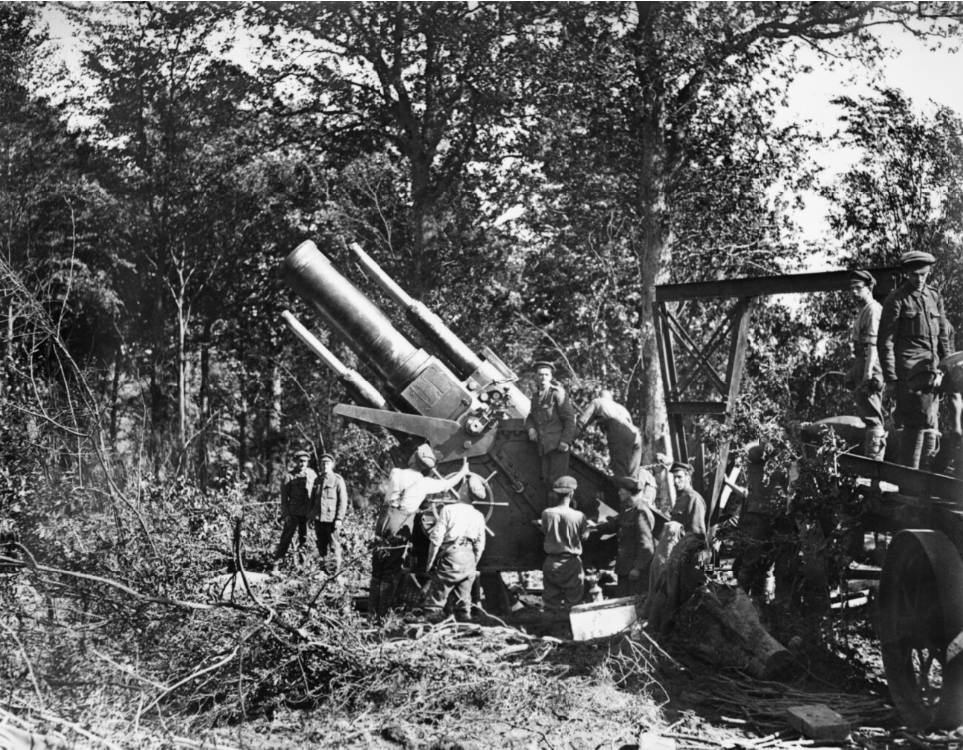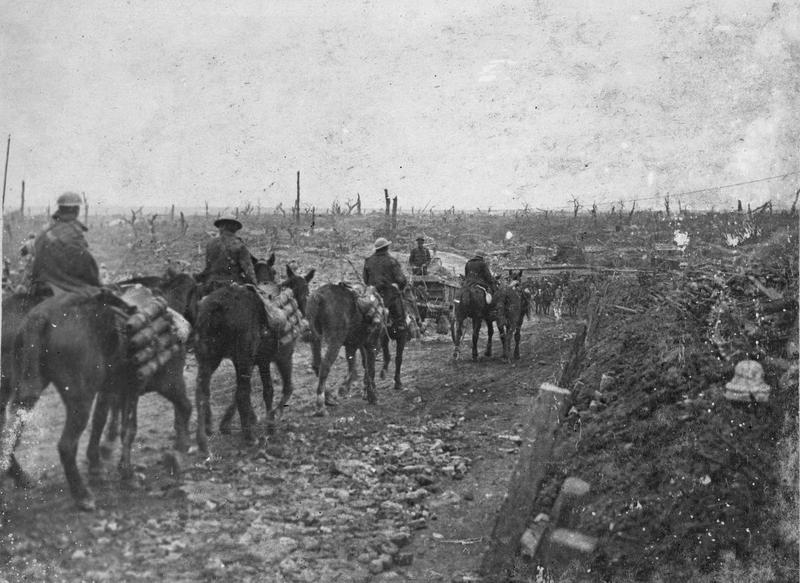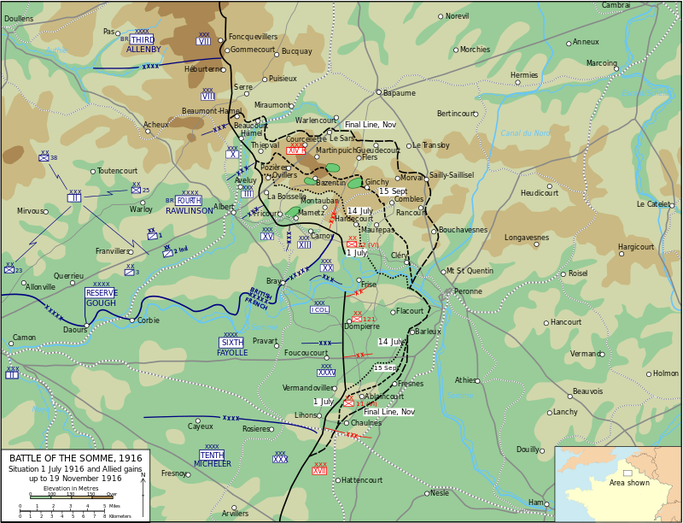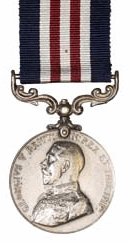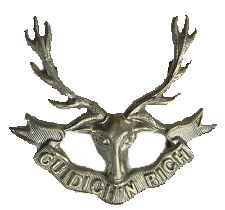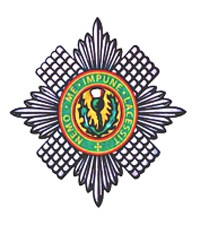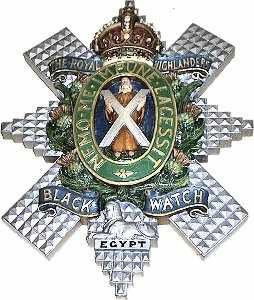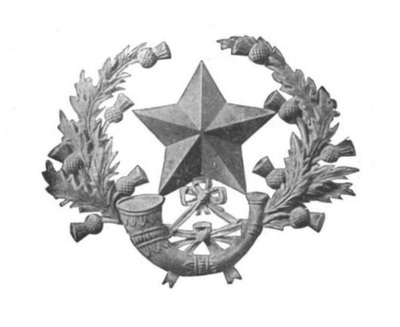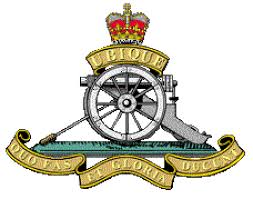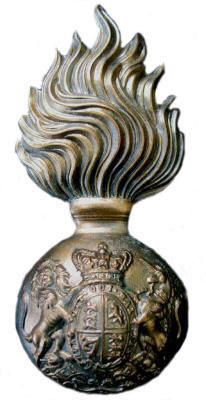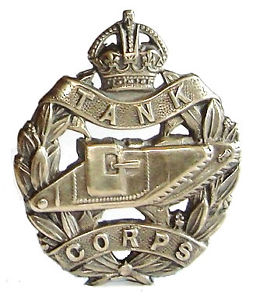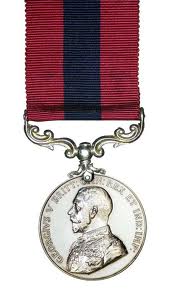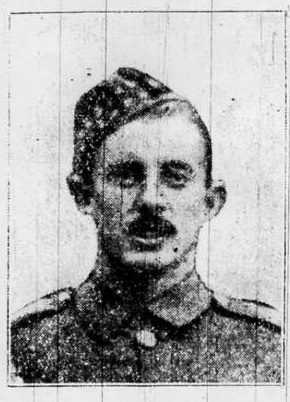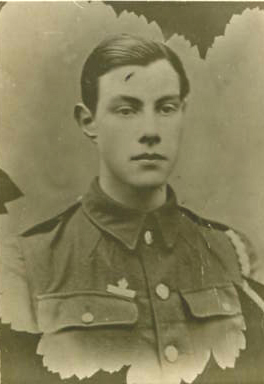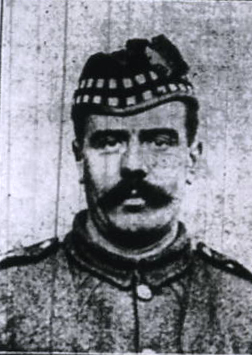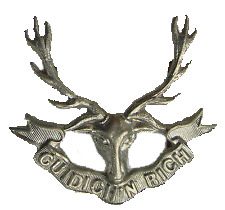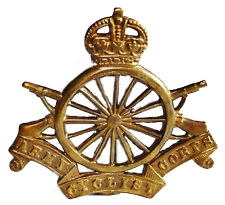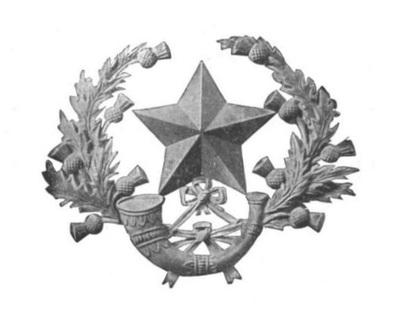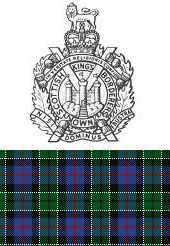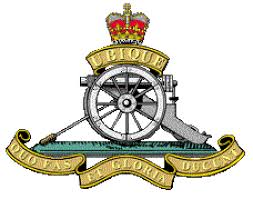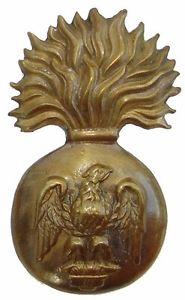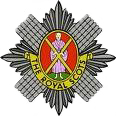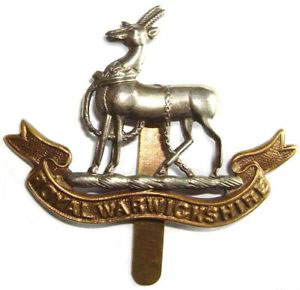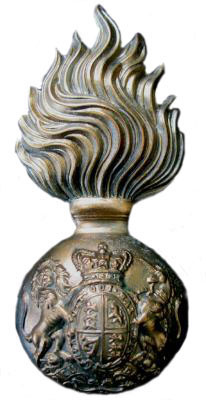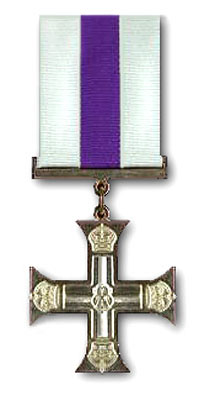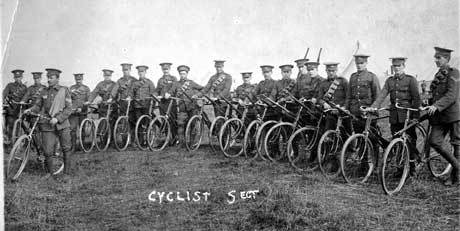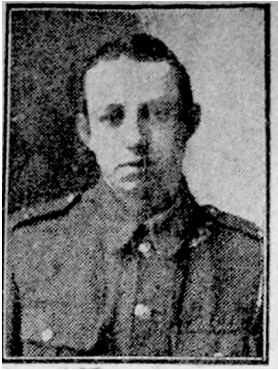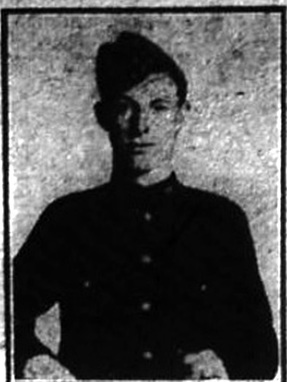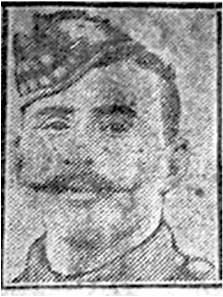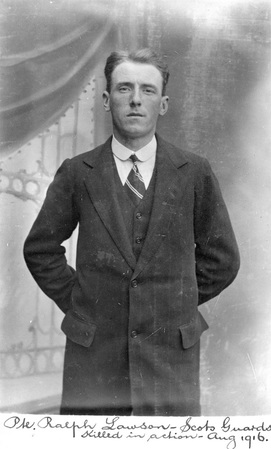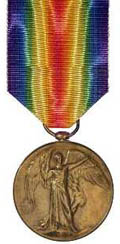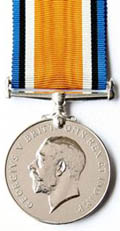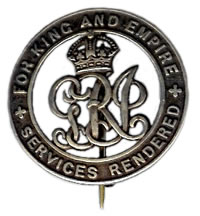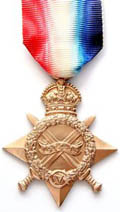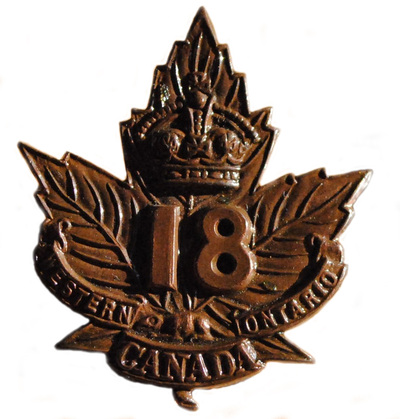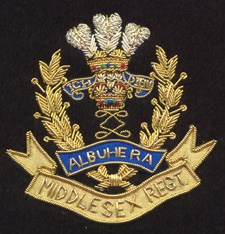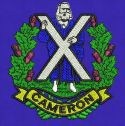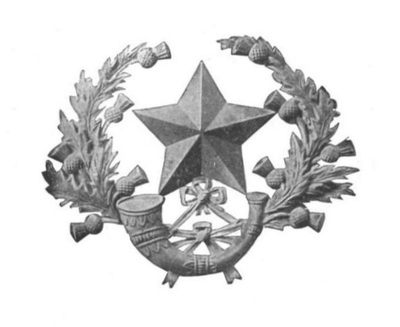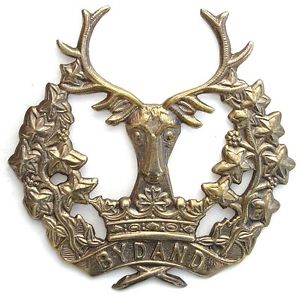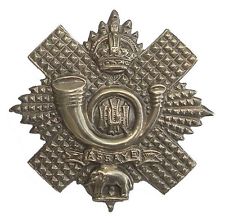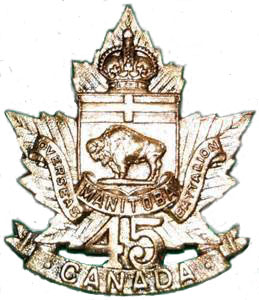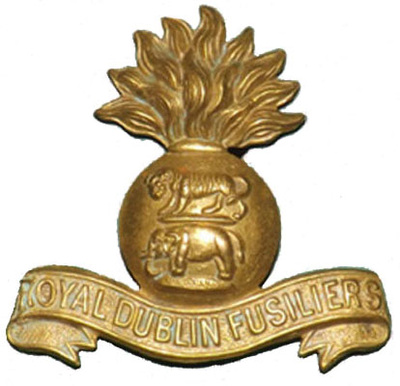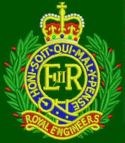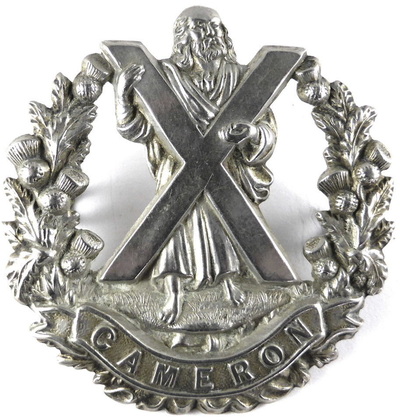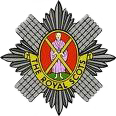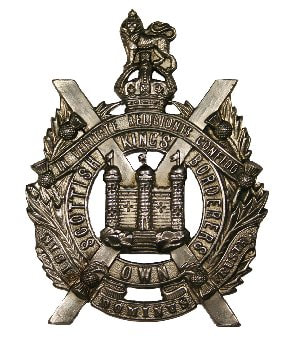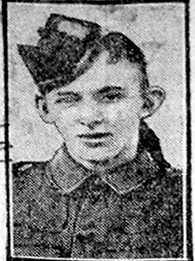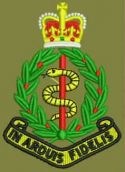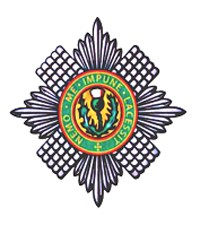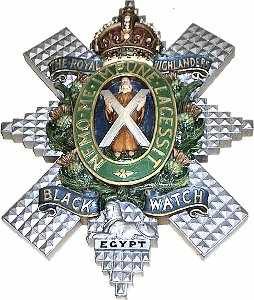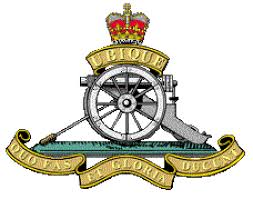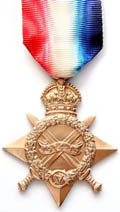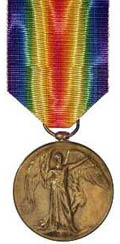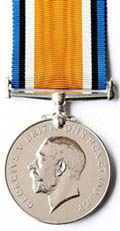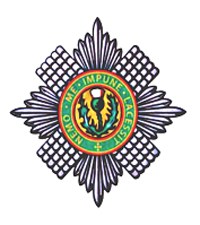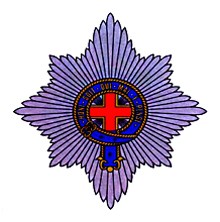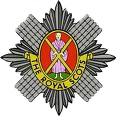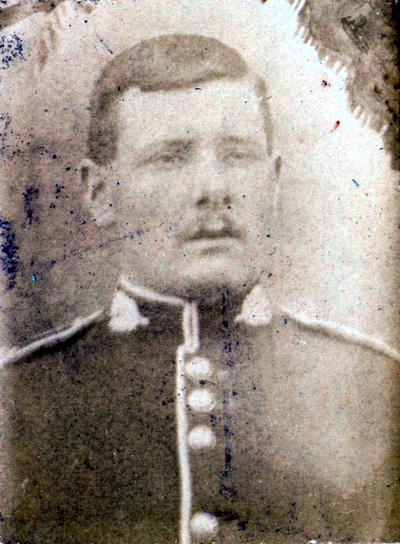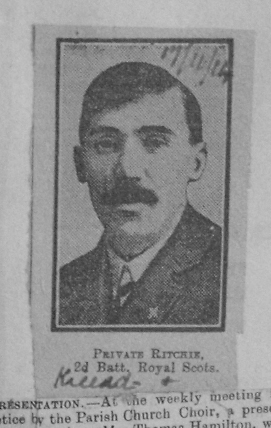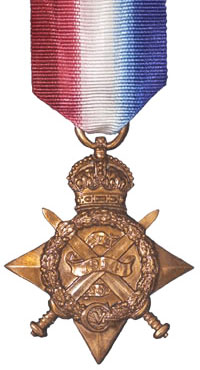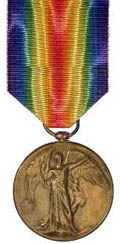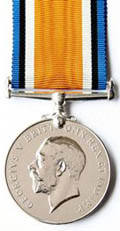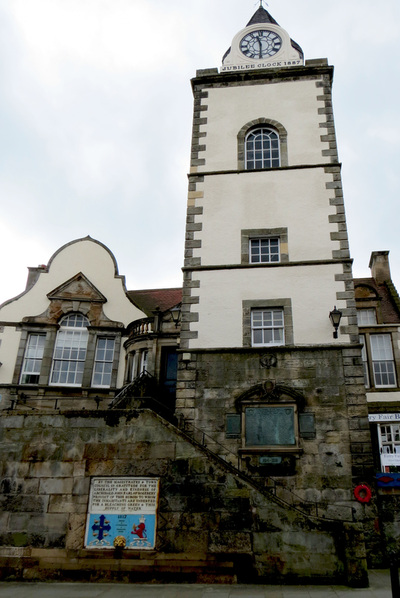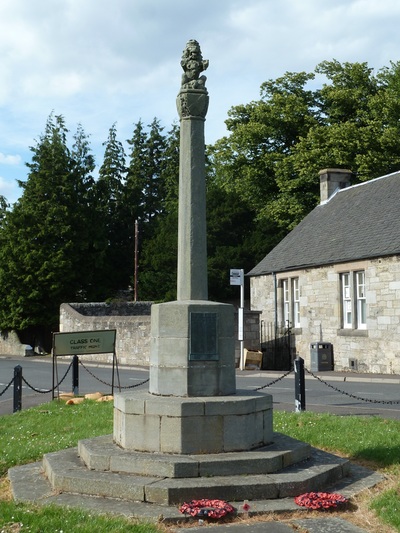|
Once again, Queensferry History Group submitted the names to be read out during the annual Remembrance Service on the steps of Rosebery Hall, beside Queensferry War Memorials. The final names of WWI were read out by Father Scott Deeley of St Margaret's Church during the interdenominational service lead by Rev David Cameron of Queensferry Parish Church also assisted by Dr Ian MacRobert of the Priory Church.
0 Comments
There were several Queensferry and Dalmeny men who were held prisoner in various camps around Europe during the First World War. We have some information on just a few of them. Corporal E. Garvie, Sergeant P. Duncan and Private John Wilson all from the Royal Scots were Prisoners of War in Germany. Private Robert Fairlie of the Kings Royal Rifle Corps, was a Butcher to trade and aged 29 when he enlisted in 1915. He was listed as missing, then as a prisoner in Germany. It was stated that Private Fairlie was taken prisoner after rendering efficient service at his post up to the time of his capture. He was repatriated at the end of the War and arrived in Dover in December 1918. Private John Scott of the Cameronians was listed as missing for some time but was later reported as a POW in Germany. The first POWs who returned in December 1918 after repatriation began, were Privates Scott, Russell, Sinclair, Harper and McHardy from Queensferry and Thomas Martin who lived in Dalmeny. Martin was firstly a POW in France before being moved to a camp in Germany. During this time he was with French POWs and later said that he was able to learn French from them. Life as a POW was often harsh with treatment varying from camp to camp. Prisoners would be put to work by the prison guards. The occasional letters and packages which arrived from home were very welcome. World War 2 Again we have information on just a few men. One remarkable story, below, was reported in the West Lothian Courier of 15.8.1941. Additional information in brackets. “Mrs McPhillips, widow of John McPhillips, of Inchgarvie Park, cherishes a proud record. She has six sons in the forces and one of them was awarded the Distinguished Conduct Medal and Bar. Regimental Sergeant Major Patrick McPhillips of the Argyll and Sutherland Highlanders, is believed to be the first South Queensferry soldier awarded the DCM and Bar in this war, ("and bar" means that the award has been bestowed multiple times). He won this in Palestine and added the bar during operations at Sidi Barrat where although wounded he carried on bravely and resolutely in the face of heavy fire. He has been in the Army for 19 years and has had considerable service in foreign strands including Jamaica and India, China and Palestine – he spent 3 years in the Middle East. Possessed of good athlete prowess he retains trophies for football and hockey for distinction in regimental sports. He is also splendid swimmer. Mrs McPhillips received a postcard from him last Tuesday. Taken prisoner at Crete, he was reported missing prior to his being reported as a prisoner of war. The other five sons are as follows Lance Corporal Thomas McPhillips also of the Royal engineers who at one time spent time in the Tank Corps. (Thomas was killed in action in Italy in February 1944, aged 36, leaving a widow). Daniel McPhillips of the Royal Scots (who was killed in action in India in April 1944 aged 27). Gunner George Mc Phillips of the Royal Artillery who incidentally met his brother Patrick in the Middle East this year (1941). Company Sergeant Major Instructor John Mc Phillips who is in the Royal Engineers. Edward McPhillips who is attached to the NAFFI .” Some of these names are mentioned below! Welcome Home The Gazette, on 8th June 1945 reported that “the Queensferry Welcome Home Committee, entertained in Rosebery Hall, men of the “Ferry Battery, Heroes of Tobruk, ex prisoners of war belonging to the burgh, men who have won honours in battle and last but not least servicemen personnel home on leave. Wives and sweethearts were there to share the honour conferred on their men folk. Provost Lawson presided over this unique gathering. It was the privilege and honour, in the name of the Magistrates, Councillors of the Burgh, Welcome Home Committee and inhabitants of Queensferry, for local boy Duncan Lamont, who was a prisoner of war in Germany for 4½ years, to convey to the men a warm welcome and heartiest congratulations on their safe return to their “Ain Folk”. The Provost then spoke of the honours the 57th Battery (Queensferry) had won in the field and that those at home were thrilled when they got the news that the men were in Tobruk during their famous siege which was one of the epic defences of the war. Major Todd, commanding officer of the 57th Battery said they were pleased to see so many of the prisoners of war, including Lieutenant Lamont, returned home and that the people of Queensferry had every reason to be proud of their Battery. The big event of the evening was the presentation of envelopes containing a gift of £5 for each prisoner of war and each honours man. The prisoners thus honoured were Company Sergeant Major W Buchanan, Regimental Sergeant Major Patrick McPhillips Lieutenant Duncan Lamont, Sergeant E Thomas, Sergeant D Sinclair, Corporal Cameron, Bombadier D Bryce, Gunner E McPhillips, (possibly Patrick’s brother Edward) Gunner J Marshall, Private J McFarlane, Private C Calder, Private J McGill, It was mentioned that there were four prisoners of war in Japanese hands. A similar gift was made to the following men who had won decorations in the war: Regimental Sergeant Major Patrick McPhillips, Argyll & Southern Highlanders – DCM- Distinguished Conduct Medal and Bar ("and bar" means that the award has been bestowed multiple times). His brother, Company Sergeant Major John McPhillips, Royal Engineers - MBE - Member of British Empire; Sergeant G Erskine, Royal Artillery - MM-Military Medal; Petty Officer Charles Andrews, Royal Navy – DSM-Distinguished Service Medal. As each name was announced there was a loud outburst of cheering, a special ovation being held for “Kiltie” McPhillips with his double row of ribbon. It was announced amidst applause that had had just completed 22 years service in the Army. A dance followed" If anyone can help with more information on these men, please contact us on our gmail address which is [email protected] © Queensferry History Group 2019
We have been remembering the men on Queensferry World War 2 Memorial the past few months and here are the last few names. Below these will be the 7 names on Dalmeny Memorial. Flight Sergeant Air Gunner George Robertson Douglas, 1920 – 1942. George was born in 1920 in Dalzeil, North Lanarkshire. His family later moved to Queensferry where his father, who was a Storekeeper in Queensferry, died in 1952. George married in London in 1940. George enlisted into the 502 Squadron Royal Air Force. In January 1942 the squadron officially moved to both Norfolk (RAF Docking) and Cornwall, where a maintenance station was set up at RAF St Eval. Until 1944 the squadron's main role was to carry anti-submarine patrols. George was killed on 30th July 1942, aged 22 and is buried in St Columbs Major Cemetery, Cornwall, grave ref: 1373. He was awarded the 1939-45 war and Star medals. Sergeant Duncan Grant, 1910 – 1942 Duncan was born in Girdwoods Land, Queensferry. His Parents married in Dalmeny Parish Church, Father a Shale Miner. He enlisted firstly into the Queens Own Cameron Highlanders, then into the 4th Regiment Reconnaissance Corps of the Royal Armoured Corps. The 4th Regiment formed in January 1941 from the anti-tank companies of the 10th, 11th and 12th brigades of the 4th Division. Duncan married an Abercorn girl, in 1937, while living in Queensferry and was employed as a Bricklayer Journeyman. He was killed on 20th October 1942, aged 32, while in action in the West Africa Campaign and is buried in Kaduna Civil Cemetery, Nigeria, Grave Ref: Row E, Grave 14. There are 10 Commonwealth burials of the 1939-45 War there. Duncan was awarded the 1939-45 War and Star medals. Sergeant Navigator (Bomber) John Davidson Haigh, 1922 – 1943 John was born in Queensferry, in 1922. He enlisted into the 102 Squadron, Royal Air Force Volunteer Reserve. He died on 12th March 1943 aged 20, when his plane crashed in the German target area. John is buried in Reichswald Forest War Cemetery, Germany, Grave Ref: 10 (X).C.12 and was awarded the 1939-45 War and Star medals. Gunner James Lowrie, 1921 – 1943 James was born in Linlithgow in 1921. His family later moved to Queensferry. He served in the 57th Battery, 14th (West Lothian) Light Anti Aircraft Regiment in the Royal Artillery. The 57th Battery was formed in 1939. The 14th regiment arrived in Egypt in 1941 and was sent straight to Lybia. By January 1943 they were in Buerat, Lybia. James died on 22nd November, 1943 aged 22 and is buried in Khayat Beach War Cemetery, North Africa, grave ref: D.C.7. He was awarded the 1939-45 War and Star medals. We now look at the 7 names on Dalmeny Memorial. Private William Cummings Ferrol, 1921 – 1940 William was born in Humbie in 1921. The family later moved to Carlowrie, Kirkliston. He enlisted into the 1st Battalion Royal Scots and was attached to the 2nd Division. He died on 21st May 1940 aged 18. He is buried in Mont-Bernanchon Cemetery at Pas de Calais, France, grave ref: row A, grave 6, one of 32 men in the Commonwealth Graves, and was awarded the 1939/45 War and Star medals. On 10th May 1940 the Germans invaded Belgium and the 1st Battalion moved forward to its pre-arranged deployment position at Wavre on the River Dyle, only some 5 miles East of Waterloo. They remained there without contact with the Germans, apart from bombing, until the night of 15th /16th May when they were ordered to withdraw as the German advance threatened to cut off the BEF from the Channel ports. The withdrawal continued with only minor contact with the enemy. By the 21st, the day William was killed, the Battalion was holding a position on the river Escaut just south of Tournai. The battalion was in continuous action all day, suffering over 150 casualties but not losing an inch of ground. Private Dorothy May Morrison, 1924 – 1942 Dorothy is the only female listed on the Dalmeny and Queensferry War Memorials. She was born in Queensferry on 8th July 1924. She enlisted into the Auxiliary Territorial Service (ATS). Dorothy died on 14th June 1942 aged 17 and is buried in Queensferry cemetery. She was awarded the 1939-45 War and Star medals. The Auxiliary Territorial Service (ATS; often pronounced as an acronym) was the women’s branch of the British Army during the Second World War. It was formed on 9th September 1938, initially as a women’s voluntary service and existed until 1st February 1949. As more men joined the War effort, it was decided to increase the size of the ATS with numbers reaching 65,000 by September 1941. Women between the ages of 17 and 43 were allowed to join, although these rules were relaxed in order to allow WAAC veterans to join, up to the age of 50. The duties of members were also extended , seeing ATS orderlies, drivers, postal workers and ammunition inspectors. Women were barred from serving in battle, but due to shortages of men, ATS members as well as other women’s voluntary services, took over many support tasks, such as radar operators, forming part of the crews of anti-aircaft guns and military police. However these roles were not without risk and there were according to the Imperial war Museum, 717 casualties during World War 2. Private John Shanks, 1920 – 1943 John was born in 1920. He enlisted into the 7th/10th Argyll and Southern Highlanders. His parents were living in Kirkliston at the time. John participated in the The North African Campaign of the Second World War which took place in North Africa from 10th June 1940 to 13th May 1943. He died on 28th March 1943, aged 23. He is commemorated in Enfidaville War Cemetery, Tunisia, on panel V.A.51. and was awarded the 1939-45 War and Star medals. Private Charles Grey Bell, 1920 – 1944 Charles was born in 1920 in Portobello. The family later moved to Dalmeny or Queensferry. Charles enlisted into the 2nd Kings Own Scottish Borderers. Until November 1942 they were at Razmak, when they left for Peshawar, both in Pakistan. After tough training they sailed with the 7th (Indian) Division to Burma in September 1943. The 2nd battalion crossed into the Arakan, and took part in the critical actions at Ngakydauk Pass and in the ‘Admin Box’, where 2 COs were killed. Later they were flown to the central front at Imphal. He died on 8th July 1944 aged 24. He is buried in Imphal War Cemetery, Burma (now Myanmar) grave ref: 3.B.3. and was awarded the 1939-45 War and Star medals. Able Seaman Harry Teevan 1926 – 1945 Harry was born in 1926 in North Berwick. His parents were living in Edinburgh at the time of his enlisting. He enlisted into the Royal Navy and was serving on HMS Indefatigable when he died on 1st April 1945 aged 18. The Indefatigable suffered a Japanese Kamikaze attack on 1st April 1945 causing severe damage, but was operational again after only 1 hour. 8 men had been killed immediately and 16 wounded. 6 would die later. Among the dead were Indefatigable’s Lieutenant Commander (Flying), an Air Engineering Officer, the Flight Deck Medical Officer, a Photographer and many in the Operations Room. Harry is commemorated on Portsmouth Naval Memorial. There is a detailed account of what happened here – htpp://www.armouredcarriers.com/indefatigable-kamikazee There are two men we are unable to verify or find information on. If you can help please contact us at our Gmail address which is [email protected]. The names are: George Grant - no information. George Irvine Davidson - a George Irvine Davidson died in Dalmeny in 1941 aged 23, but so far we have not traced a war record. He was employed as a Garage Attendant. © Queensferry History Group 2019
This month sees the 80th Anniversary of the start of World War 2. We have here a little information on how the War started and we commemorate the first men listed on our Queensferry World 2 Memorial. The Treaty of Versailles Outcome In 1919 the leaders of England, France, Italy, and the United States met to determine how to force Germany to pay for the damages resulting from World War 1. Each of the leaders had significantly different goals for the outcome of the treaty. President Wilson of the United States desired a treaty based on his 14-point plan that he believed would result in peace in Europe while France wanted to punish Germany to ensure they could not start a war again. The British people wanted a similar outcome as France, while their leader sought to find compromise between the American and French stance during the discussions. The German leadership expected a treaty based on President Wilson’s 14 points, and were ultimately not happy with the terms dictated in the Treaty of Versailles. The salient points of the treaty were: – Germany was forced to pay approximately £6,600 million in reparations for damage caused by the war. – Germany was forced to accept the blame for starting World War 1. Land was taken away from Germany and given to others and union with Austria (Anschluss) was forbidden. – Germany was not allowed to have an air force, submarines, or tanks and only six navy ships and a small army were permitted. The Rhineland also had to be de-militarized. After the treaty was signed, the Germany populace was not happy with the terms and believed them to be too rough. In the 1920s, the German people and economy were suffering and could not afford the reparation payments. The price of basic goods and food significantly rose, and dissatisfaction with the government grew. This set the stage for Adolf Hitler to rise to power in the country. The Rise of Adolf Hitler Hitler rose to the position of Chancellor of Germany in January 1933. In 1934, he started to secretly build warships, create an air force, and increase the size of the army. Compulsory military service was also implemented. Although France and Great Britain became aware of his actions, they believed that a stronger Germany might help stop the spread of Communism to Western Europe. Further testing Western powers, Hitler sent German forces into the Rhineland in 1936; however, neither Great Britain or France was ready to start another war and did nothing to stop Hitler. During 1936, Hitler created two alliances. The Rome-Berlin Axis Pact created an alliance between Mussolini (Italy) and Germany and the Anti-Comintern Pact with Japan allied the Germans with Japan. After these alliances were created, Hitler began to retake land previously taken from Germany after World War 1. After Hitler took Austria in March 1938. Austria asked for help from France and Britain but as Hitler said he was not interested in taking any other countries, no action was taken. 6 months later he demanded to have Czechoslovakia. The Munich Agreement was made with Prime Minster Neville Chamberlain . This agreement meant he could take Czechoslovakia as long as he took no other countries, but when Hitler invaded Poland on 1st September, action had to be taken. Britain and France declared war against Germany on 3rd September 1939. The result was six long years of World War II. There is an excellent website which is the source of most of this information. For more information on World War 2 please click on button below. Queensferry's World War 2 Memorial For the past few months we have been commemorating the men who lost their lives in 1944 and 1945. This month we look at the first Queensferry casualties on our Memorial. Queensferry's first listed casualty of World War 2 was - Corporal Adam Spiers Riddell (1918 - 1940) There is some confusion over the spelling of Adams surname. Commonwealth War Records have him as Adam Riddell, as do his birth and marriage records, the Queensferry War Memorial has him as Adam Riddle. He was born in 1918, in High Street, Queensferry. His parents were living in Glasgow although his mother was born in Queensferry. When Adam was born, his father was a Grocer but serving as a Private in the Army Ordnance Corps. Adam served with the 4th Reserve. M.T. (Mechanical Transport) Company, Royal Army Service Corps. The Royal Army Service Corps (RASC) was a corps of the British Army. It was responsible for land, coastal and lake transport; air despatch; supply of food, water, fuel, and general domestic stores such as clothing, furniture and stationery (but not ammunition and military and technical equipment, which were the responsibility of the Royal Army Ordnance Corps); administration of barracks; the Army Fire Service; and provision of staff clerks to headquarters units. The ASC Mechanical Transport Depot Companies filled a variety of administrative, recruitment, induction, training and re-supply roles. The Base Depots were based in the United Kingdom or at the port of entry to a theatre of war, such as France where Adam was serving. Advanced Depots were located further up the lines of communication. Adam died in France on 6th January 1940, age 21. Records show it was caused by a traffic accident. He is buried in Sainte Marie Cemetery, Le Havre, France. Grave Ref: Divn. 64. Plot 6. Row G. Grave 6 and he was awarded the 1939/45 Star and War medals. Able Seaman Alfred James Newman Case, 1897- 1940 Alfred was born in 1897 in Yarmouth. His father was a Fisherman in Grimsby who died in 1919 while serving as a Mate in the Mercantile Marines on Steam Trawler “Helcia”. Alfred married in Falkirk in 1919 while living in Grangemouth but had moved to Queensferry by 1928. Alfred had a long Naval career, first as a ‘Boy’ in the Royal Navy from 1913 – 1914 aged 16 -17, becoming an Ordinary Seaman in November 1915 aged 18, when he signed on for 12 years. He became an Able Seaman in May 1916. His occupation was a ‘Rope Worker’. Between 1914 and 1927 he served HMS Ganges, (a training ship based in Shotley, Suffolk), Pembroke (Shore Barracks), Indomnitable 1914 - 1916, Edgar (training ship), Warspite (1918), Theseus (Depot Ship), Actaeon (Torpedo Training Ship), Vernon (Torpedo Training School), Columbine (Port Edgar). He was awarded the 1915 Star, Victory and British War Medals for his service during World War 1. We do know that Alfred was Able Seaman in the Royal Navy, serving on HMS Willamette Valley when he died on 29th June 1940 aged 42. HMS Willamette Valley, was a Special Service Ship, it was hit by 3 torpedoes from U 51, before it sunk on 29th June, with 25 survivors. The ship U51 was sunk by a torpedo from HMS Cachalot two months later with no survivors. Commonwealth War Graves Commission has recorded him wrongly as Albert, not Alfred. He is commemorated on the Chatham Naval Memorial, panel 35, column 1 and was awarded the 1939/45 Star and War Medals. Able Seaman Geoffrey Basil Howes, 1903 – 1941 Geoffrey was born in 1903 in Norfolk. He was employed as a Farm Hand, as was his Father. He married a Queensferry girl, in Dalmeny Manse in 1925. At that time he was serving in Port Edgar, at the Royal Naval Base HMS Columbine, a depot for Torpedo Boat Destroyers of the Grand Fleet. A ‘Career Sailor’, he served as “Boy” in the Royal Navy from March 1919 and as Able Seaman from May 1921. He was serving on HMS Eglinton at the time of his death. Geoffrey died on 24th February 1941 aged 37, from accidental drowning, at Harwich Pontoon, while returning on leave. He is buried in Shotley Royal Navy Cemetery, Grave Ref: 1.D.4. Geoffrey was awarded the RN Long Service and Good Conduct medal in 1936 and the 1939/45 Star and War Medals. Gunner Patrick O’Donnell, 1901 - 1941 Patrick was born in 1901 in Dalmeny. His father was a Shale Miner. He enlisted into the 57th Battery, 14th Light Anti- Aircraft Regiment, Royal Artillery. During the 1930s the increasing need for anti-aircraft (AA) defence for Britain's cities was addressed by converting a number of TA infantry battalions into AA units. The 4th/5th Royal Scots was one of the battalions selected, becoming a searchlight (S/L) regiment in 1938. The A Company provided the basis for a new 14th (West Lothian, Royal Scots) Light Anti-Aircraft Regiment of the Royal Artillery (RA). 57 LAA Battery was raised at South Queensferry on 17th January 1939. (Wikipedia) The Western Desert Campaign (Desert War), took place in the deserts of Egypt and Lybia and was the main theatre in the North African Campaign during the Second World War. In 1941, the 14th Lt. A.A. Reg. was involved in the siege of Tobruk (10th April – 27th November). It seems likely this is where Patrick died on 1st July 1941 aged 39. Patrick is buried in Grave Ref: 4.F.5. Tobruk War Cemetery, Algeria and was awarded the 1939/45 Star and War medals. Tobruk is a Mediterranean port with an excellent deep water harbour. During the war it was important to Allied and Axis forces alike, for the reception of supplies and reinforcements. In January 1941, it was taken from the Italians by General Wavell's forces, and after the clearance of the demolitions in the harbour the port was usable and proved invaluable. When Rommel commenced his drive across Cyrenaica towards Suez it was deemed essential that Tobruk be held, and the resulting siege lasted from 11 April to 10 December 1941, when the Axis forces were driven back. Tobruk War Cemetery incorporates the burial ground used during the siege. Many battlefield graves in the desert have been brought into the cemetery. There are now 2,282 Commonwealth servicemen of the Second World War buried or commemorated in Tobruk War Cemetery. Gunner John Fairley, 1904 – 1941 John was born in 1904 in Ladybank, Collessie, Fife. His father was a Railway Bridge Painter. John married in Dalmeny Church in 1934 and was living in Queensferry. He enlisted into the 57th Battery, 14th Light Anti- Aircraft Regiment, Royal Artillery. During the 1930s the increasing need for anti-aircraft (AA) defence for Britain's cities was addressed by converting a number of TA infantry battalions into AA units. The 4th/5th Royal Scots was one of the battalions selected, becoming a searchlight (S/L) regiment in 1938. The A Company provided the basis for a new 14th (West Lothian, Royal Scots) Light Anti-Aircraft Regiment of the Royal Artillery (RA). 57 LAA Battery was raised at South Queensferry on 17th January 1939. (Wikipedia) The Western Desert Campaign (Desert war), took place in the deserts of Egypt and Lybia and was the main theatre in the North African Campaign during the Second World War. In 1941, the 14th Lt. A.A. Reg. was involved in the siege of Tobruk (10th April – 27th November). John died on 5th December 1941 aged 37, listed as missing, presumed killed during action. He is commemorated on Column 35, Alamein Memorial, Egypt, and was awarded the 1939/45 Star and War medals. The Alamein Memorial forms the entrance to the El Alamein War Cemetery in Egypt. The memorial commemorates nearly 12,000 servicemen of the British Empire who died in the Western Desert campaigns of the Second World War including the Battle of El Alamein (1942). © Queensferry History Group 2019
Commemorating More WW2 Men, listed on Queensferry Memorial, Who Died in 1944, 75 Years ago.1/8/2019 This month we have 3 more men who died during 1944, and our 1 man who died in 1945. Next month we will start listing earlier deaths during WW2. 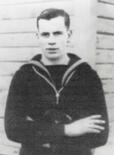 Leading Seaman David Ravie - 1919 - 1944 David was born in Queensferry in 1919. He was nicknamed “Popeye” working on board boats on the River Forth before war broke out. When children came from Glasgow to Butlaw Camp in Queensferry, for holidays, he was Master of Ceremonies for the entertainment. He then enlisted into the Royal Navy and was serving on SS Nairung, a steam merchant, built in 1941, as DEMS Gunner (DEMS is a Defence Equiped Merchant Ship), when he died, lost at sea on 18th August 1944 aged 25. The SS Nairung, was on route to Bombay from Durban, carrying general cargo, including ammunition. On 18th August she was torpedoed and sunk, with no survivors, by U-862 roughly 1000 metres northeast of Mozambique. The master, 82 crew members and eight gunners, one of which was David, were lost. The ship blew up in such a violent explosion that some crewmen aboard the U-boat thought that they had been struck by their own torpedo, while debris struck the U-boat without damaging her. David is remembered with honour on the Chatham Naval Memorial and is named on his Mothers headstone in Queensferry Cemetery. He was awarded the 1939/45 Star and War Medals. Private David Moubray Brett, 1921 – 1944 David was born in Edinburgh in 1923. His father served in the Black Watch during WWI and his parents were living in Queensferry by the time of David’s death. David enlisted into the 2nd Royal Scots. Most of 1941 passed without active duty for the regiment, and with growing concerns about the stability of the Far East, the 2nd Battalion, based at Hong Kong, moved into defensive positions around the colony. These fears materialised on December 8th when the Battle of Hong Kong began a few hours after the attack on Pearl Harbour; the Royal Scots fought heroically, but the result was inevitable and the whole battalion had been killed, wounded or become POWs by the time of the surrender of the Colony on Christmas Day 1941. A new 2nd Battalion (originally the 12th) was formed in May 1942 and they served in Italy and Palestine. The 2nd Battalion moved to Gibraltar in April 1943. On 3rd September 1943, the Allies invaded the Italian mainland. The 2nd Battalion moved back to Italy in July 1944, where it saw action in the Italian Campaign. This is where David was killed in action on 25th August 1944 aged 21. He is buried in Florence War Cemetery, Italy. Grave ref: ll.A.1. and was awarded the 1939/45 Star and War Medals. The site for the war cemetery was selected in November 1944 for burials from the hospitals established in and around Florence but the greater part of those buried here lost their lives in the fighting in this area from July to September 1944. Florence War Cemetery now contains 1,632 Commonwealth burials of the Second World War. 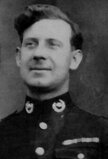 Marine Charles William Shoebridge, 1899 – 1944 Charles was born in 1899 in Chatham, Kent. He enlisted into the Royal West Kent Regiment saying he was 19, when he was only 16. He was discharged, then enlisted into the Royal Marine Light Infantry on his 17th Birthday and served with them until his death in 1944. He married in Queensferry in 1927, having met his wife, a Dairymaid, in the dairy in Brewery Close. They met when he came up with the canisters to collect the milk for his ship, HMS Repulse. (which was sunk in 1941). Charles died tragically on Christmas Day, 1944, aged 44, in Orkney. He and his friend were in the recreation quarters and a fight broke out between his friend and another man. Charles went to intervene to try to stop the fight and was stabbed. He died from his wounds in the Military Hospital in Kirkwall, Orkney. The press later reported that police had detained a man on a charge of Murder. He is buried in Grave No: 184 in Queensferry Cemetery. Charles was awarded the 1914/15 Star, British War and Victory Medals for his service in WW1. In October 1932 he was awarded the RN Long Service Medal and Good Conduct Medal. He would also have been awarded the 1939/1948 Star and War Medals. And in 1945 - Pilot Officer Pilot Thomas Louis Benoit Shoolbread 1921 - 1945 Thomas was born in 1921 in Queensferry. His birth is registered as Schoolbread, not Shoolbread, however Parents marriage states Shoolbread. Thomas enlisted into the Royal Air Force Volunteer Reserve. By the end of 1941 more than half of Bomber Command aircrew were members of the RAFVR. Most of the pre-war pilot and observer NCO aircrew had been commissioned and the surviving regular officers and members of the RAFO filled the posts of flight and squadron commanders. Eventually of the "RAF" aircrew in the Command probably more than 95% were serving members of the RAFVR. In August 1941, RAF Cranfield became a night flight training centre and was such until the end of the war. Thomas died on 4th January 1945, age 23, at Wavendon, near RAF Cranfield, Buckinghamshire and is buried in Grave Ref: 1083, Queensferry Cemetery. Queensferry Cemetery contains 180 First World War burials, almost all of them naval. There are also eight burials of the Second World War. He was awarded the 1939/45 War and Star Medals. © Queensferry History Group 2019
Last month we commemorated those who died during the Battle of Normandy 1944. This month we commemorate a few others who died during 1944, 75 years ago, and are on Queensferry's War Memorial. The remaining 1944 deaths will follow next month. Corporal Thomas Ley McPhillips of the 23rd Field Company, Royal Engineers,was born in 1907 in Smithsland, Queensferry. His father was a Shale Miner. Thomas married in Edinburgh in 1940. He was a Bridge Painter at the time, living in Queensferry. The Battalion participated in the Battle of Anzio, Italy, 22nd January 1944 – 5th June 1944 and this is where Thomas died, on 29th February 1944, age 36. Thomas is buried in Beach Head War Cemetery, Anzio, Italy. Grave ref: V.H.10 and was awarded the 1939/45 Star and War Medals. The site of the cemetery originally lay close to a casualty clearing station. Burials were made direct from the battlefield after the landings at Anzio and later, after the Army had moved forward, many graves were brought in from the surrounding country. Beach Head War Cemetery contains 2,316 Commonwealth burials of the Second World War, 295 of them unidentified. Among the greatest achievements of the RE’s were the construction and operation of the Mulberry Harbour in its support for the Battle of Normandy 1944. The Mulberry Harbour was built for D-Day in June 1944. The Mulberry Harbour’s purpose was to ease and speed up the unloading process so that Allied troops were supplied as they advanced across France after breaking out from Normandy. The success of D-Day could only be maintained if the advancing troops were supplied and more men landed. The Mulberry Harbour was one of the greatest engineering feats of World War Two. Thomas's brother Daniel, of the 1st Royal Scots, died in Kohima, Burma, India, in April 1944 aged 27. They lost 3 uncles during WWI, who are commemorated on Queensferry War Memorial. Private Daniel Waddock McPhillips of the 1st Royal Scots, was born in Queensferry in 1916. His Father was a Shale miner. Daniel died on 17th April 1944 aged 27. He is buried in Kohima War Cemetery, Burma, India, Grave Ref: 3.B.1 and was awarded the 1939/45 Star and War Medals. The Japanese advance into India was halted at Kohima in April 1944 and Garrison Hill, a long wooded spur on a high ridge west of the village, was the scene of perhaps the most bitter fighting of the whole Burma campaign when a small Commonwealth force including the Ist battalion Royal Scots, held out against repeated attacks by a Japanese Division. The Battalion’s casualties for April 1944 were fifteen soldiers killed, two officers and thirty-five soldiers wounded and one soldier missing. Daniel’s brother Thomas of the 23rd Field Company, Royal Engineers, was killed in Italy in February 1944 aged 36. They lost 3 uncles during WWI, who are named on Queensferry Memorial. 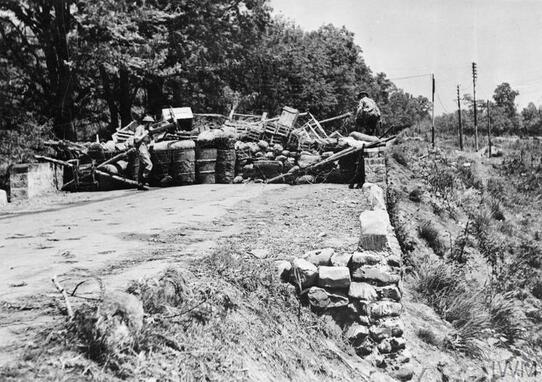 © IWM (IND 3465) Image - In spite of difficult monsoon conditions, British and Indian troops have forced the Japanese to withdraw from Kohima and have cleared the entire Kohima-Imphal road of the enemy. Sharp fighting is still continuing as the Allies drive the remaining Japanese from their positions in the surrounding country. This image shows a Japanese road block being hurriedly dismantled by men of the West Yorkshire Regiment within rifle shot of the enemy. Fusilier Frederick John Colborne of the 2nd Battalion Royal Scots Fusiliers, was born in Queensferry in 1918. His father was a Tug Master. The Battalion was part of the, 5th Infantry Division through most of WW2. Early October 1939 they went to France as one of the independent infantry brigades and were part of the British Expeditionary Force. The 2nd Battalion fought in Persia (now Iran) and Iraq (1942-43), and Sicily and Italy (1943-44), including the Battle of Anzio (1944) during the latter campaign - Operations in January 1944 landed troops behind the German lines at Anzio, but defences were well organised, and a breakthrough was not actually achieved until May. In February 1945, it deployed to North West Europe to take part in the invasion of Germany. Frederick died on 17th April 1944 aged 25. He is buried in Beach Head War Cemetery, Anzio, Grave ref: X.H.8. The site of the cemetery originally lay close to a casualty clearing station. Burials were made direct from the battlefield after the landings at Anzio and later, after the Army had moved forward, many graves were brought in from the surrounding country. Beach Head War Cemetery contains 2,316 Commonwealth burials of the Second World War, 295 of them unidentified. Sergeant Wireless Op. /Air Gunner James Shoolbread, of the 36th Squadron Air Force Volunteer Reserve, was born in Ardrossan in 1915. His parents later moved to Queensferry. He married in Rosyth in 1941, recorded as an Insurance Agent involved in War Service as a Wireless Operator in the Royal Air Force, living in Queensferry. James died, on 4th March 1944 aged 28, while on convoy escort duty in Algeria on board a Wellington/14-F26-HF265. The plane crashed near the drome due to low cloud and the entire crew of 6 men were killed. He is buried at Dely Ibrahim War Cemetery, Algeria, Grave Ref: 4.C.8. He was awarded the 1939/45 Star and War Medals. When war broke out in 1939 the Air Ministry employed the RAFVR as the principal means for aircrew entry to serve with the RAF. A civilian volunteer on being accepted for aircrew training took an oath of allegiance ('attestation') and was then inducted in to the RAFVR. Normally he returned to his civilian job for several months until he was called up for aircrew training. During this waiting period he could wear a silver RAFVR lapel badge to indicate his status. By the end of 1941 more than half of Bomber Command aircrew were members of the RAFVR. Most of the pre-war pilot and observer NCO aircrew had been commissioned and the surviving regular officers and members of the RAFO filled the posts of flight and squadron commanders. Eventually of the "RAF" aircrew in the Command probably more than 95% were serving members of the RAFVR. Dely Ibrahim War Cemetery contains 494 Commonwealth burials of the Second World War and 11 war graves of other nationalities. There are also 25 non-war graves, mostly of merchant seamen whose deaths were not due to war service. © Queensferry History Group 2019
Queensferry’s War Memorial is on the wall of the outside stairs at Rosebery Hall on the High Street. As well as the 66 names of the Queensferry men who died in World War I, already researched by the History Group, there are 21 names of men who died in World War 2. There were 12 men in the Army, 5 men in the Navy and 4 men in the Airforce. As 6th June sees the 75th Anniversary of the start of the Battle of Normandy, commonly known as D-Day, this month we are commemorating our 4 men who died there and will follow up over the next few months with information on other names on the Memorial. Battle of Normandy Code name Operation Overlord From D-Day to D-Day + 84: June 6 to August 29, 1944 85 days of fighting The D in D-Day is the same as the H in H-Hour. It refers to military vocabulary. It is also possible to say : Y-Year. Soldiers use the first letter of the word in order to say : THE moment. Here, in the case of the landing of Normandy, it means THE moment of the attack. It is a code name and thanks to this code there is no need to say the exact date. Thus it is possible to say “D-Day + 5” for : the date of the attack + 5 days. This code avoids the enemy intelligence to find too easily the right date or the right hour of the offensive. - The Battle of Normandy The Battle of Normandy, which lasted from June 1944 to August 1944, resulted in the Allied liberation of Western Europe from Nazi Germany’s control. Codenamed Operation Overlord, the battle began on June 6, 1944, also known as D-Day, when some 156,000 American, British and Canadian forces landed on five beaches along a 50-mile stretch of the heavily fortified coast of France’s Normandy region. The invasion was one of the largest amphibious military assaults in history and required extensive planning. By late August 1944, all of northern France had been liberated, and by the following spring the Allies had defeated the Germans. The Normandy landings have been called the beginning of the end of war in Europe. -www.history.com/topics/world-war-ii/d-day Queensferry Men involved in The Battle of Normandy Private Malcolm Meikle, 1909- 1944 Malcolm was born on 23rd September 1909 in Muirs Land, Queensferry. He married in Queensferry Parish Church, on 22nd April 1939, while employed as an Explosives Worker, where, is not specified, but possibly in the shale mines. He enlisted into the 1st Battalion, Gordon Highlanders. In 1940, the 1st Battalion along with the 5th Battalion, were with the 51st (Highland) Infantry Division during the Battle for France, when they were trapped and had to surrender, at Saint-Valéry-en-Caux. In August 1940, both 5th & 1st Battalions were quickly reformed along with the same division and fought with distinction in North Africa and Sicily. On 6th June 1944, they returned to North West Europe on D-Day, and fought their way, along with the 2nd Battalion, from Normandy, through France, Belgium and the Netherlands. Malcolm died in Normandy, during the Western Europe Campaign on 19th June 1944 aged 35. He was awarded the 1939/45 Star and War Medals. Malcolm is buried in Banneville-La -Campagne War Cemetery, Calvados, France, Grave Ref: 1.C.18. The Allied offensive in north-western Europe began with the Normandy landings of 6 June 1944. For the most part, the men buried at Banneville-la-Campagne War Cemetery were killed in the fighting from the second week of July 1944, to the last week in August. The cemetery contains 2,170 Commonwealth burials of the Second World War, 140 of them unidentified, and five Polish graves. Sergeant John McKay, 1906-1944 John was born in Queensferry on 30th May 1906 and he married in Edinburgh in 1935. He served in 1st Battalion Gordon Highlanders. In 1940, the 1st Battalion along with the 5th Battalion, were with the 51st (Highland) Infantry Division during the Battle for France when they were trapped and had to surrender at Saint-Valéry-en-Caux. In August 1940, both 5th & 1st battalions were quickly reformed along with the same division and fought with distinction in North Africa and Sicily. On 6th June 1944, they returned to North West Europe on D-Day, and fought their way, along with the 2nd Battalion, from Normandy, through France, Belgium and the Netherlands. John was killed in action on 11th July 1944, aged 38, in Normandy, during the Western Europe Campaign. In 1943 John was awarded the Military Medal for acts of gallantry and devotion to duty under fire in the Middle East. He was also awarded the 1939/45 Star and War Medals. He is buried in Ranville War Cemetery, Calvados, France, Grave Ref: V111. E.7. This cemetery contains 2,236 Commonwealth burials of the Second World War, 90 of them unidentified Some 82 regiments and corps from the British Army are represented here. 203 men were killed on D-Day, Tuesday 6th June 1944. All identified casualties in this cemetery (with the exception of 11 German forces casualties) were killed, or died, between May and September 1944. Guardsman John Ford, 1903- 1944 John was born in Muirs Land, Queensferry on 24th August 1903. He enlisted into the 2nd Scots Guards, in November 1921 aged 18, while employed as a Labourer. During the Second World War the principal centres of attention for the Scots Guards were North Africa, Italy, and the moves through France, Belgium, Holland and Germany in 1944 and 1945 until the German surrender. In North Africa, as part of the 22nd Guards Brigade, the 2nd Battalion took part in fighting against the Italians in Egypt followed by tough fighting in Libya, then also controlled by Italy. In North Africa, in March 1943, the 2nd Battalion took part in the defensive Battle of Medenine, Tunisia, after the Germans had counter-attacked the Allies. In September 1943, the 2nd Battalion, as part of the 201st Guards Brigade of the 56th London Division, took part in the Landings at Salerno, Italy. At the Battle of Monte Cassino, Italy, 17th January – 18th May 1944, the 2nd Battalion suffered heavy casualties in tough fighting. They then moved through France, Belgium, Holland and Germany in 1944 and 1945 until the German surrender. In 1940 John received the General Service Medal along with the Palestine Clasp and in 1942 he received the Long Service and Good Conduct Medal. He was also awarded the 1939/45 Star and War Medals. John died at home, on 6th August, aged 41, cause unknown, and his death was notified to the War Office Casualty Branch. He is buried in Queensferry Cemetery, Commonwealth Grave Ref: 1101. Queensferry Cemetery contains 180 First World War burials, almost all of them naval. There are also eight burials of the Second World War. Petty Officer Stoker John Smith, 1899 - 1944 John was born around 1899, records are unclear as to where. He later married and his wife was living in Queensferry during his war service. John enlisted into the Royal Navy and was serving on HMS Isis. In 1943 Isis sank the German Submarine U-562. John was missing presumed killed on 20th July 1944, aged 45, when Isis struck a mine and sunk off the Western sector of the Normandy landing beaches. Isis was active off the Normandy coast during and after the landings. Its guns joined the naval bombardment of German defences on shore and it escorted troop ships and supply vessels. It patrolled the waters for enemy submarines. Isis struck a mine, exploded and sank on 20th July 1944 off the western sector of the Normandy landing beaches just 5 miles off shore, in only 21 metres of water. She was the last interwar standard destroyer lost in the war, with eleven officers and 143 ratings lost, and 45 survivors rescued after several hours in the sea. John is commemorated on Portsmouth Naval Memorial, panel 85, column 2 and is also listed on Portsmouth Cathedral Memorial. John was awarded the 1939/45 Star and War Medals. © Queensferry History Group 2019
During our research for information on the Queensferry and Dalmeny men who are listed on both memorials, we came across a number of men with a Queensferry connection who are not on the memorial. There could be several reasons why this is so, and this is the next step in our research journey. If anyone has any information on the men below, or indeed anyone they know of, who perhaps should be on the memorial, but isn't, please email us at [email protected]. Also please be aware we are still trying to identify some of the men on Queensferry and Dalmeny Memorials whose information is proving difficult to find. We would also be grateful for any information on them. They are Queensferry - John McLean, Dalmeny - R Campbell, J Cullen, J C Nelson and A Rutherford. The criteria for inclusion on a particular memorial are varied and summarised in the following quote from the www.roll-ofhonour website:- "The criteria for inclusion on a war memorial was set by the memorial committee and the resons why men were included or excluded is now lost with their records. A man could be included on a memorial because he was born, resident, attended school or worked there or that his next-of-kin lived there, or didn't live there in the case of exclusion. To find the reasons why people were included you need to search out the minutes of the memorial committee meetings and local newspapers of the time." We do know that the Queensferry memorial was not unveiled until November 1927. Our ultimate hope is to get some recognition for the "Forgotten Men". It is to be noted that only army servicemen are on the Queensferry and Dalmeny memorials, and we find several Naval men among our lost souls. It may be that in many cases, they were born in Queensferry because their fathers served in the Royal Navy and were based at Port Edgar, so their time in Queensferry may be short. It is most likely these men, and others, are not on Queensferry War Memorial because of the possibility that there were no living relatives in the area at the time of collating the names to be put on the memorial. This does not mean to say that Queensferry should not honour them with remembrance. Below you can read information found on just six of the men. This research is still ongoing. Any helpful information is most welcome. Private William Coull of the 8th Battalion Seaforth Highlanders was born on the Loan, Queensferry on 10th January 1886 the only son (with 4 older sisters) to George Coull, a Quarry Labourer, and Mary Sommerville. They married in Linlithgow. In the 1871 census his father was living in West Terrace, in the 1881 and 1891 census the family were living on the Loan. In the 1901 census they were living in Rosebery Buildings and in 1911 his father was in the High Street, Queensferry. William enlisted in Airdrie and was killed in France on 25th September 1915, aged 29. he was awarded the 1914/15 Star, Victory and British War Medals. He is commemorated on the Loos Memorial, France. Leading Seaman Ronald Stuart Clark, of the Royal Navy, serving on HMS Invincible, was born in Clark Place, Queensferry. His parents were Thomas Archer Clark, Warrant Officer of the Royal Navy, and Annie Emily Cammack. They were married in Devonport, Devon. Ronald signed up to the Royal Navy in 1912 aged 18 and died on 31st May 1916 as a direct result of enemy action. He was involved in the Battle of Jutland on board HMS Invincible, and his ship was sunk. Of her entire compliment, 1026 officers and men were killed, with only 6 survivors, picked up by HMS Badger. Ronald was awarded the 1914/15 Star, Victory and British War Medals. He is remembered on the Portsmouth Naval Memorial. Sapper Robert Kerr of the 66th Company Royal Engineers, was born in Linlithgow on 14th April 1892. His Parents were Thomas Kerr, a Ploughman and Janet Kerr (also maiden name) who were married in Livingston. Robert married Mary Brown in 1915 in Edinburgh. He was a Police Constable living in Bo'ness at the time and Mary was living in Catherine Terrace (commonly known as "The Brickies"), Queensferry. Robert served in Queensferry as Police Constable for some time, but was in Bo'ness when he enlisted. He was killed in Belgium on 10th August 1917 aged 25. He is rememberd on the Ramcapelle Road Military Cemetery in Belgium and his name is also on Queensferry Parish Church Memorial and the Masonic Memorial of St Margarets Lodge. However his name is not on the Queensferry War Memorial. His wife Mary died of Tuberculosis in 1924, in Queensferry. Private Thomas Potter of the 2nd Battalion Seaforth Highlanders was born on 11th April 1884 in Woodend, Abercorn. His parents were Peter Potter, a Quary Labourer and Agnes Chapman. They married in 1882 in Woodend. In the 1891 census, the family were living in Abercorn. Peter enlisted in Queensferry and his Parents were living in Hopetoun, Queensferry at this time. Peter was killed in action in France on 13th October 1914. He was awarded the 1914 Cross, Victory and British War Medals and is buried in Meteren Military Cemetery, Nord, France. He is remembered on the Abercorn War Memorial. His brother William, also on the Abercorn Memorial, enlisted into the New Zealand Cyclist Battalion and died of wounds in Belgium on 30th March 1918. His parents are listed as the late Peter and Agnes Potter of Society, Hopetoun, Queensferry. Father died in 1917 in Edinburgh Royal Infirmary, usual address, Society, Hopetoun, Queensferry and Mother died in 1922 in Abercorn. Signal Boy Frederick Thomas Simkins of the Royal Navy, serving on HMS Good Hope, was born in East Terrace, Queensferry, on 5th February 1897. His parents were Frederick Simkins, 2nd Yeoman of Signals, Royal Navy, and Ruth Fuller. They married in 1895 in Sussex. In the 1901 census, the family were in Gravesend, father then a Coastguard. Frederick died on 1st November 1914, aged 17, as a direct result of enemy action. HMS Good Hope was sunk by the German East Asia Squadron off the coast of Chile, with all hands lost. Frederick's body was never recovered for burial and he is commemorated on the Portsmouth Naval Memorial. He was awarded the 1914 Star, Victory and British War Medals. Private James Scott McLean, of the 1st Royal Scots, was born the youngest of four sons, on 18th June 1889 in Kirkliston. His parents were Donald and Mary Mclean and they married in Govan. The family moved from Glasgow to Catherine Terrace, Queensferry and it is believed Donald worked on the construction of the Forth Rail Bridge. He died in 1903. In 1909 James was a Shale miner in Dalmeny, when he married Jane King. By 1911 James and Jane were living in Kelty, Fife with their children and in the 1911 census, his mother Mary was still living in Catherine Terrace, supported by her sons. She died in 1917, shortly before James. By 1920, his brother Lauchlan was living in Catherine Terrace. His brothers Lauchlan and Archibald did not enlist but his brother Donald enlisted and survived the war. James was killed in action in Ypres, Belgium on 9th October 1917 aged 28. He is commemorated on the Tyne Cote Memorial in Belgium and was awarded the Victory and British War Medals. We do have more names we are researching and may add to this list later on.
©Queensferry History Group 2018 QUEENSFERRY MEN Sergeant Mounsey Robert Gardner of the 13th Royal Scots, died on 30 January, aged 32, at home, from wounds sustained during battle in France. Private Thomas Duncan of the 9th Black Watch, was killed on 28 March, aged 19, during battle in France. Gunner William Scott of the 179th Royal Field Artillery, was killed on 21st April, aged 24, during battle in France. Corporal William McArthur of the 13th Royal Scots, was killed on 24th July, aged 29, during battle in France. He was awarded the Distinguished Conduct Medal for bravery. 2nd Lieutenant Adam Lindsay of the 10th Royal Scots, died on 1st August, aged 33, from wounds sustained during battle in France. Lieutenant Robert Murray Elder of the 5th Royal Scots, was killed on 11th August, aged 22, during battle in France. Corporal Peter Marshall of the 11th Tank Corps, reported missing (possibly wounded and taken prisoner) then listed as died, on 3rd September aged 23, in France . Private James Sandercombe of the 17th Royal Scots died on 25th September, aged 36, of wounds sustained during battle in France. Private Robert Cooper Kerr of the 4th Royal Scots, was killed on the 27th September, aged 24, during battle in France . Private Peter McLeary of the 1st Cameronians, was killed on 23rd October, aged 19, during battle in France. Not all those who died, died in battle. The 'Spanish Flu' was taking a grip of the men. The 'Spanish Flu' killed more people worldwide, than died in World War I. Private Robert Fossett of the 7th Machine Gun Corps died of pneumonia on 24 October, aged 29, during battle in Mesopotamia. He was awarded the Distinguished Conduct Medal for bravery in battle. Private Martin Tearney of the Depot Royal Scots, died in the Edinburgh Royal Infirmary of Influenzal Pneumonia on 5th December, aged 30. DALMENY MEN Private George Shearlaw Young of the 1st Scots Guards, was killed on 27th February, aged 21, during battle in France. Private Robert Todd of the 9th Royal Scots, was killed on 22nd March, aged 30, during battle in France. Private Andrew Campbell of the 8th Black Watch, was killed on 24th March, aged 27, during battle in France. Private John Duthie Swayne of the 7th Seaforth Highlanders, was killed on 11th April, aged 18, during battle in France. Lance Corporal Charles Moodie of the 1st Royal Scots, was killed on 7th June, aged 23, during battle in France. Private Alexander Hallyburton of the 1/6th Black Watch, was killed on 24th July, aged 30, during battle in France. Private William Trotter of the 1/8th Cameronians, was killed on 29th July, aged 18, during battle in France. Sergeant James Reilly of the 8th North Staffordshire Regiment, was killed on 4th November, aged 20, during battle in France. Corporal John Livingston of the 2/10th Royal Scots, was killed on 11th November, aged 23, during battle in Archangel, Russia. 1919 onwards (all on Queensferry Memorial) Lance Sergeant Thomas Ley of the 17th Royal Scots died of Tuberculosis, at home, on 6th December 1919, aged 33. He held the Military Medal for Bravery during his war service. Private David Fossett of the 1st Black Watch was killed on 20th January 1921, aged 25, in Allahabad, India. Private John McArthur of the 1st Royal Scots, died at home, of Tuberculosis, on 5th May 1921. Private James McArthur of the Seaforth Highlanders, and brother of John (above), died at home, of Tuberculosis, on 8th January 1923, aged 28. ©Queensferry History Group 2018
Remembrance Sunday on 12th November was a beautiful crisp, sunny day. As in previous years there was a good turn out of community groups and representatives from armed forces who formed the parade for the walk along the High Street to the area at the front of Rosebery Hall where Queensferry's War Memorial is located. Local People also gathered to remember those lost and those affected by wars past and present. The service of Remembrance was conducted by Rev. David Cameron assisted by Father Deeley and Rev. Terry Harkin. Last year saw the centenery commemorations of significant First World War events such as the battle of Jutland and the Somme Offensive. This year the focus has been on the battle of Arras and the battle of Passchendaele (Ypres). As with so much of the history of World War I the massive losses are hard to imagine or comprehend. The 39 days of the Battle of Arras, alone, had a casualty list of 4,076 men. Queensferry History Group has researched the stories behind the men listed on both the Queensferry and Dalmeny Memorials. Since 2014 the group has prepared a list for the annual Remembrance Service, of the casualties for each year of the war from both communities. It is always moving to hear the names of the men being read out in the centre of the town that they would all have been familiar with and from where they left, never to return. Information from "The Voice", monthly newsletter of Queensferry Heritage Trust, with some input this month from Queensferry History Group.
©Queensferry History Group 2017 This month we are commemorating the men we lost in the third Battle of Ypres, 31st July to 6th November 1917, often known as Passchendaele however Passchendaele was the last phase (of 9) of this Battle. It became infamous not only for the scale of casualties, but also for the mud. Queensferry Memorial – 4 men Private James Henderson Grieve, 13th Battalion Royal Scots. Killed in Ypres on the first day of the Battle, during the phase-the Battle of Pilckem (31st July - 2nd August), on 31.7.1917 aged 40. After several weeks of changeable weather, heavy rainfall began in the afternoon of 31 July and had a serious effect on operations in August, causing more problems for the British who were advancing into the area devastated by artillery fire and which was partly flooded. Private Melville Christie, 2nd Battalion Kings Own Scottish Borderers. Killed in Ypres on 7.11.1917 aged 30. The West Lothian Courier of 30.11.1917 states that he was one of a party trying to help a man from another regiment who had been stuck in mud up to his chest for more than 36 hours. This was near a pillbox which was a target for enemy shelling. He was looking for planks of wood to help the man get out of the marsh when a shell landed on top of the pillbox. A large piece of shrapnel hit him in the back and killed him. He had only been 9 days in the fighting line when he met his death. Private Alfred Hunter, 1st Battalion Kings Own Scottish Borderers, died from wounds received in Ypres during the phase-the Battle of Poelcapelle (9th October) on 14.10.1917 aged 30. Private John Murray, 8th Battalion Seaforth Highlanders, died from wounds received in Ypres during the phase-the Battle of Langemark (16th - 8th August) on 22.8.1917 aged 39. Dalmeny Memorial – 3 men 2nd Lieutenant William Campbell, 9th Battalion Royal Scots, killed in Ypres during the phase-the Battle of Pilkem (31st July - 2nd August) on 31.7.1917 aged 21. He was awarded the Military Cross Campbell for an act or acts of exemplary gallantry during active operations against the enemy. Gunner Henry John Iorns, 3rd Battery, 7th (London) Brigade, Royal Field Artillery, died from wounds in Ypres on 10.10.1917 aged 31. Reported ‘missing’ then died of wounds. Sergeant Robert Robertson, 9th Battalion Black Watch (Royal Highlanders), died from wounds in Ypres after the phase–the Battle of Langemark (26th – 18th august), on 26.8.1917 aged 39. Robert also served in South Africa in 1902 and in India from 1904 – 1908. © Queensferry History Group 2016
South Queensferry held it's annual Remembrance Service for those who have lost their lives to War, in front of the War Memorial on Rosebery Hall. The Service was led by Ministers from the three main churches in Queensferry, Father Deely, Reverend Terry Harkin and Reverend Graham Leitch. There was a good attendance and 19 wreaths were laid. Queensferry History Group submitted the names of the 19 men who are commemorated on the Memorial and lost their lives in 1916, 100 years ago this year. We have researched the lives and history of these men and have come to feel as if we knew them. We also laid our wreath in remembrance. © Queensferry History Group 2016 Below is a list of the men who died in 1916 who are listed on Queensferry Memorial and Dalmeny Memorial. 'We Will Remember Them'. Queensferry Memorial - Private David Moig, Gordon Highlanders, 31st January, aged 29. Private William Bain, Gordon Highlanders, 2nd March aged 19. Lieutenant William Mackie, Royal Scots, 29th April aged 23. Guardsman Ralph Lawson, Scots Guards, 26th July, aged 22. Private David Ley, Royal Scots, 27th July, aged 22. Lance Sergeant George J Stewart, Canadian Infantry, 7th August aged 37. Private Charles Sandercombe, Royal Scots, 18th August aged 20. Private Patrick Connolly, Royal Scots, 21st August aged 21. Private Charles Watson, Royal Scots, 3rd September aged 18. Private Peter Smith, Royal Dublin Fussiliers, 8th September aged 38. Private James Lapsley, Middlesex Regiment, 15th September, aged 36. Sergeant David Macintosh, Canadian Infantry, 15th September aged 23. Private John Smith, Cameronians, 17th September aged 32. Private John Sanderson, Royal Scots, 22nd September aged 30. Corporal James Davidson, Royal Engineers, 24th September aged 26. Private George Earl, Royal Scots, 23rd October aged 33. Corporal George T Stewart, Royal Engineers, 9th November aged 19. Private Cornelius McPhillips, Royal Scots, 2nd December, aged 40. Dalmeny Memorial - James Beveridge, Lance Corporal, of Royal Scots, died 18th July 1916 aged 29. James Cameron, Private, of Queens Own Cameron Highlanders died 14th June 1916 aged 19. Hugh McDiarmid, Private, of Queens Own Cameron Highlanders, died 22nd November 1916, aged 27. William Mackie, 2nd Lieutenant, of Royal Scots, died 29th April 1916 aged 23 . Robert Middleton, Private, of Royal Scots, died 11th May 1916 aged 30. James Scott, Private, of Highland Light Infantry, died 16th September 1916 aged 22. © Queensferry History Group 2016
During the month of July 1916, 3 of our men died in the Somme Offensive – The Battle of Delville Wood 15th July – 3rd September 1916. James Beveridge, (Dalmeny), of 2nd Royal Scots, was killed in the Battle of Delville Wood, on 18.7.1916 aged 29. John Sanderson of 2nd Royal Scots, was killed in the Battle of Delville Wood, on 22.7.1916 aged 30. Ralph Lawson of 2nd Royal Scots, was killed in the Battle of Delville Wood, 26.7.1916 aged 22. During August, we also lost 3 of our men during the Somme Offensive - The Battle of Pozieres 23rd July – 3rd September 1916. George James Stuart of 6th Manitoba Canadian Infantry, was killed in the Somme Offensive, possibly Pozieres, on 7.8.1916 aged 37. Charles Sandercombe of 2/10th Royal Scots, was killed in the Battle of Pozieres, 18.8.1916 aged 19. Patrick Connolly of 2/10th Royal Scots, was killed in the Battle of Pozieres, 21.8 1916 aged 21. Other action was going at this time and a further 8 local men died during 1916 - David Moig of 1st Gordon Highlanders, was killed on 31.1.1916 aged 29, in Trench warfare in “The Bluff” at the Ypres-Comines Canal. William Bain of 1st Gordon Highlanders, died on 2.3.1916 aged 20, in the trenches near Vierstraat, Begium. William Mackie of 3/6th Royal Scots, died on 29.4.1916 aged 23, in Craigleith Military Hospital from Sarcoma of left lung and Cardiac Respiratory Failure. Robert Middleton (Dalmeny) of 13th Royal Scots was killed on 11.5.1916 aged 30, during the Actions of Spring, most likely on defence of the Kink position, near Loos, where the Germans captured some 500 yards of British trenches. James Cameron (Dalmeny), of 6th Queens Own Cameron Highlanders, was killed on 14.6.1916 aged 19, during the Actions of Spring, on the Western Front, France. David Ley of 3rd Royal Scots, died on 27.7.1916, aged 22, in Edinburgh Infirmary, of Emphysema and Septeciamia. He had served in India and France and was discharged as no longer fit for service on 16.7.1915 aged 21 due to loss of hearing in left ear, the result of exposure to shell fire worsening an aggravated ear condition left from childhood measles. John Smith of 11th Cameronians, was killed on 17.9.1916 aged 32, in Salonika, Greece. Cornelius McPhilips of 3rd Royal Scots, died of Pneumonia on 2.12.1916 aged 40 in Edinburgh Infirmary. He was discharged from the Army on 27.1.1916 as unfit for War Service due to wounds received on 28.5.1915 during Trench warfare in France and was daily attending Hopetoun House Convalescent Hospital. Later Somme deaths will follow in the months ahead or can be found below. © Queensferry History Group 2016
The Somme Offensive 1st July- 18th November 1916 “141 Days of Horror” Named “141 Days of Horror”, the Somme Offensive was one of the largest battles of WW1 in which more than 1,200,000 men were wounded or killed, making it one of the bloodiest battles in human history. On the first day alone, the British had suffered 60,000 casualties, of whom 20,000 were dead: their largest single loss, which to this day remains a one day record. Sixty per cent of all officers involved on the first day were killed. Since early January 1916, Haig was preparing for a British offensive but in June came under strong pressure to mount a counter attack at Verdun, which was under siege by the German Army from 21st February until 18th December 1916. Haig was therefore forced to undertake an offensive near to where the British and French lines met, near Bray-sur-Somme in Picardy, although he would have preferred to attack further north and to have had longer with which to prepare his new army. The British Commander, General Haig, planned an offensive on the Somme that was designed to break through the German trench lines and open up a drive on Berlin that would end the war in 2 weeks. Intended to be a decisive breakthrough, the Battle of the Somme instead became a byword for futile and indiscriminate slaughter, with General Haig's tactics remaining controversial even today. The attack was launched upon a 30 kilometre front, from north of the Somme river between Arras and Albert, and ran from 1 July until 18 November, at which point it was called off due to the worsening weather conditions. With winter closing in, the fight was suspended. Haig deemed the soldiers had done enough and resolved to resume the offensive in February. In March 1917, the Germans made a strategic retreat to the Hindenburg line rather than face the resumption of the Battle of the Somme. The French were anxious for it to begin as they were under heavy pressure from a major German offensive at Verdun, which had started February 1916. The Somme Offensive would, it was expected, force the Germans to withdraw some troops from Verdun, thus easing the pressure on the French there. This didn't happen - the Somme Offensive was contained with locally available reserves and the Germans didn't move any troops from Verdun to help defend against the Somme Offensive. So the German reaction to the Somme Offensive was to contain the British attack without giving up too much ground. British commanders were so confident that they ordered their troops to walk slowly towards the German lines. Once they had been seized, cavalry units would pour through to pursue the fleeing Germans. As the 11 British divisions walked towards the German lines, the machine guns started and the slaughter began. Although a few units managed to reach German trenches, they could not exploit their gains and were driven back. By the end of the day, the British had suffered 60,000 casualties, of whom 20,000 were dead: their largest single loss which to this day remains a one day record. Sixty per cent of all officers involved on the first day were killed. The British offensive was a disastrous failure. After more than 4 months, the British had gained a strip of land 20 miles long and at its furthest penetration 7 miles deep. There was no breakthrough and British casualties were around 420,000. It was a baptism of fire for Britain's new volunteer armies. Many 'Pals' Battalions, comprising men from the same town, had enlisted together to serve together. They suffered catastrophic losses: whole units died together and for weeks after the initial assault, local newspapers would be filled with lists of dead, wounded and missing. The next two months saw bloody stalemate, with the Allies gaining little ground Torrential rains in October turned the battlegrounds into a muddy quagmire and in mid-November the battle ended, with the Allies having advanced only 8km (five miles). Only in the sense of relieving the French at Verdun can the British have claimed any measure of success. The British (this includes Commonwealth soldiers, a breakdown listed below) suffered around 420,000 casualties, the French/Belgian 204,000 casualties and the Germans around. 500,000 casualties The Somme offensive saw the first Canadian troops at the front. The British force included the commonwealth armies of the Australian Imperial Force, South African 1st Infantry Brigade incorporating a Southern Rhodesian contingent, Canadian Corps, New Zealand Division and Newfoundland, with a total allied casualty list of over 600,000 men. (Casualty Figures have not been included as they tend to vary from report to report). The Somme Offensive was noted for the first tanks being used at the ‘front’. On 15th September 1916, during the Battle of Fleurs Courselette, tanks, known as ‘Mark 1’, were in battle for the first time. This first batch of tanks was hot, noisy and unwieldly and suffered mechanical malfunctions on the battlefield. Out of 48, only 21 made it to the front. Nevertheless, people realised the tanks potential. 100 years later, the tank has altered beyond all recognition, but the basic principles of firepower, protection and mobility remain unchanged. The Battle of the Somme had several phases - Albert, 1st -13th July; Gommecourt 1st July; Bazentin Ridge, 14th – 17th July; Fromelles, 19th -20th July; High Wood, 20th – 25th July; Delville Wood, 15th July – 3rd September; Pozieres, 23rd July – 3rd September; Guillemont, 3rd – 6th September; Ginchy, 9th September; Flers-Courcelette, 15th – 22nd September; Morval, 25th – 28th September; Thiepval, 26th – 28th September; Le Transloy, 1st – 18th October; Ancre Heights, 1st October – 11th November; Ancre, 13th – 18th November. (Those highlighted in red are where Queensferry and Dalmeny men lost their lives). . The following men are listed on Queensferry and Dalmeny memorials. They lost their lives during the Somme Offensive. Queensferry and Dalmeny lost 15 men during the Somme Offensive. Lance Corporal James Beveridge, Royal Scots, -18.7.1916 aged 29, most likely during the Battle of Delville Wood, (15th July – 3rd September 1916). Private John Sanderson, Royal Scots – 22.7.1916 aged 30, most likely during the Battle of Delville Wood, (15th July – 3rd September 1916). Guardsman Ralph Lawson, Scots Guards – 26.7.1916, aged 22, most likely during the Battle of Delville Wood, (15th July – 3rd September 1916.) Private Charles Watson, Royal Scots – 3.9.1916 aged 18, most likely during the Battle of Delville Wood, (15th July – 3rd September 1916). Lance Sergeant George James Stewart, Canadian Infantry – 7.8.1916 aged 37, most likely during the Battle of Pozieres, (23rd July – 3rd September 1916). Private Charles Sandercombe, Royal Scots – 18.8.1916, aged 20, most likely during the Battle of Pozieres, (23rd July – 3rd September 1916). Private Patrick Connolly, Royal Scots – 21.8.1916 aged 21, most likely during the Battle of Pozieres, (23rd July – 3rd September 1916). Private Peter Smith, Royal Dublin Fusiliers -8.9.1916, aged 38, most likely during the Battle of Guillemont (3rd – 6th September 1916). Private James Lapsley, Middlesex Regiment – 15.9.1916, aged 35, most likely during the Battle of Flers Courcelette, (15th –22nd September 1916). Sergeant David Mackintosh, Canadian Infantry – 15.9.1916 aged 23, most likely during the Battle of Flers Courcelette, (15th –22nd September 1916). Private James Scott, Highland Light Infantry – 16.9.1916 aged 22, most likely during the Battle of Flers Courcelette, (15th –22nd September 1916). 2nd Corporal James Davidson, Royal Engineers – 24.9.1916 aged 26, died of wounds received on 20.9.1916, during the Battle of Flers Courcelette, (15th –22nd September 1916). Private George Charles Earl, Royal Scots – 23.10.1916 aged 33, most likely during the Battle of Le Transloy, (1st October – 11th November 1916). Corporal George Thomson Stewart, Royal Engineers – 9.11.1916 aged 19. Most likely during the Battle of Le Transloy, (1st October – 11th November 1916). Private Hugh MacDairmid, Cameron Highlanders – 22.11.1916 aged 27, most likely from wounds sustained during the Battle of Le Transloy, (1st October – 11th November 1916). Find out more about the men in Archive - February 2015, under 'Memorials'. Also in our queesferry-at-war website, link below © Queensferry History Group 2016
-
While we have managed to research details of most of the men on Queensferry and Dalmeny Memorials, there are still some we are having difficulty with. Maybe you are related to, or have knowledge of, some of the following men, and can help us identify them correctly. We would be very grateful if you contacted us with anything you think might help. John Mclean - As far as we can see, John McLean, on the Queensferry Memorial and the Old School Memorial, was born John Henderson McLean, on 16th May 1893, in Brachla, Cawdor, Nairn. His Father was Thomas Mclean, a Cooper Journeyman, and his Mother was Mary McLean, ms Grierson. They were married on 14th July 1880 in Edinburgh. As Edinburgh City Archives have a John Mclean on the Old School register, born in Kent Road, Glasgow, on 19th May 1893, with a Father Thomas, either wrong information was given on the register, or there were two John Mcleans. As no further information can be found on a John McLean born in Kent Road, Glasgow, we will go with John Henderson Mclean. In 1901 the Family were living in Brachla, Cawdor, Nairn. John was 7 years old. His father, Thomas was 46, and a Cooper. His Mother Mary was 44. His Siblings all born in Cawdor, Nairn; –Jane, 17, a scholar; William, 15,; Margaret, 14; Mary, 12; Alexander, 10. In 1905, Thomas Mclean, a Cooper, was tenant of House and Garden in Morton Terrace, Queensferry. Thomas's Father died of Pneumonia, on 8th February 1909, aged 54 years, in Lilybank House, Queensferry. He was a Foreman Cooper. His son Andrew was present. In the 1911 census, Thomas, aged 17, an Engineer Apprentice in Oilworks, presumably Dalmeny, was living in Lilybank, Stoneycroft Road, with his Mother Mary, now a widow and his Siblings; Brother Andrew, 29, a Clerk in Gasworks, born in Edinburgh; other Siblings all born in Cawdor, Nairn; Sister Jane, 27, a Domestic Servant; Sister Margaret, 24, and Brother Alexander, 20, a Railway Clerk. John's Mother Mary died on 24th September 1925, aged 71, in Priory house, Queensferry. The cause was- Fatty Degeneration of Heart, Syncope (Fainting) and Fractures of both bones in left leg which she had for 2 months. Her Son Andrew McLean was the informant, - his home address was in Perth. We are finding War information on John McLean difficult to track down. Only 40% of Army Service Records survived enemy bombing in WW2. There are a few 'John Mcleans' with not enough information to say place of enlistment, or birth, or birth year, age at death, or Parents names, any of which would help us to track down the correct person, but we will keep looking, unless anyone out there can help with information! There is information on a John MacLean born in Nairnshire, No:1632, who enlisted into the 4th Battalion Queens Own Cameron Highlanders, in Cawdor, Nairn, and was killed in action on 28.9.1915, aged 22. As his father is listed as John Maclean, this is the wrong man! We can find no information on a John Mclean enlisting locally. We have a few men in both Queensferry and Dalmeny Memorials who, through process of elimination, we believe to be the correct men, but we cannot find that vital 'link' to Queensferry or Dalmeny. Queensferry David Moig, (see Queensferry Memorial 1916), has his name on the Queensferry Parish Church Memorial, we believe we have the correct man, however no other Queensferry link has been found so far. Norman Mathieson, (see Queensferry Memorial 1917), also on Queensferry Parish Church Memorial, so far has no Queensferry link other the Dalmeny W Russell, we believe, again by process of elimination, to be William Russell, however no Dalmeny link has been found. (See Dalmeny Memorial 1915) R P Brown, we believe, by process of elimination, to be Robert Phorson Brown, however we can find no Dalmeny link. (See Dalmeny Memorial 1915) P Anderson we believe by process of elimination, to be Peter Anderson but have not yet found a Dalmeny link.(See Dalmey Memorial 1917) For Dalmeny we cannot establish the identity of the following men - J Cullen, R Campbell, J Nelson, A Rutherford. As the Dalmeny Memorial does not give the first name of the men it is almost impossible to correctly identify them particularly when we can find no Dalmeny link for any of these men, either through registers or war information. Queensferry and Dalmeny 1919 and beyond.(not including WW2) and appeal for help with "Problem Men".1/5/2015 There are 4 men on Queensferry Memorial who died 1919 and beyond and none on the Dalmeny Memorial, as far as we are aware at this time. Private David Fossett No:2745147, of 1st Black Watch (Royal Highlanders - The fearsome reputation of these kilted soldiers led to their acquiring the nickname "Ladies from Hell" from the German troops that faced them in the Trenches). David entered the Theatre of War on 12.10.1914. He was born on 7.1.1896 in Brown's Close, Queensferry, to Robert, a Shale Miner and Catherine ms McArthur. They married in 1880 in Queensferry. David had 2 Brothers and 1 Sister. Brother Robert of 7th Company Machine Gun Corps, was born on 17.12.1889, and he died, of Pneumonia, aged 29, in 24.10.1918, in Mesopotamia (see 1918's). In 1901 aged 5, David was living in Browns Close with his Parents and Siblings. Father now a Butcher. In 1911, aged 15, David was a Merchant's Message Boy and living in 21 West Terrace, Queensferry, with Parents and Brother John, who were both General Labourers. After the War, the regular Battalions (1st and 2nd) served in Garrisons in India and Germany. In 1919 they were in Baluchistan, India, and moved to Allahabad in 1921. Allahabad was an important junction on the main line of the East Indian Railway. This is where David died from a gunshot wound to the head, on 20.11.1921, aged 25. It is presumed he is buried in India but his Grave or Memorial is not recorded, and we have found no record of any medals awarded. Lance Corporal Thomas Ley No:40887, of 17th Battalion Royal Scots entered France on 1.2.1916. He was born on 16.12.1884 in Exchange Street, Dundee. He died from Tuberculosis, on 6.12.1919, aged 34, in Post Office Close, Queensferry. He is commemorated on Queensferry Memorial, Queensferry Parish Church and Queensferry Primary School Memorials. His Parents were George, a Tay Bridge Worker at the time, and Margaret Ley ms Smith. They married on 18.11.1881, at Montrose. Thomas had 5 Brothers and 2 Sisters. Brothers William born 1891, of Royal Scots, died in 1917 in France, David born 1893, of Royal Scots Special Reserve, died in 1916 aged 22. In 1891, age 6 he is living in West Terrace, Queensferry, lodging with a Margaret Marshall, with his Parents, Father now a shale Miner, and Siblings. Thomas' Mother died suddenly, probable cause, Heart Failure, on 27.6.1904 aged 43, in Harbour Head, Queensferry. Thomas married on 9.8.1907 at Kirklands, Dalmeny, Thomas Ley 22, a Miner, of Smith’s Land, Queensferry and Margaret McArthur 21, of Hill Square, Queensferry , a Domestic Servant. He died from Tuberculosis, at home, in Post Office Close, Queensferry, on 6.12.1919 aged 34. Thomas was awarded the Victory and British War Medals, and the Military Medal. Thomas is listed as a' Lieutenant Sergeant' in the Royal Scots, No:40887, when awarded the Military decoration, which was awarded to T. Ley for acts of gallantry and devotion to duty under fire or for individual or associated acts of bravery which were insufficient to merit the Distinguished Conduct Medal. Conferment of the medal was announced in the London Gazette issue 30389. M.M.; Awarded for bravery in the field.16/11/1917, page 11968, and Thomas Ley earned the right to add the letters M.M. to his name. Private James McArthur, No:1052, of Seaforth Highlanders (Depot at Fort George) enlisted in Edinburgh on 29.12.1914. He was a Shale Miner at the time. James was born on 12.10.1894 in Hill Square, Queensferry. He died of Pulmonary Tuberculosis and Myocarditis on 8.1.1923 aged 28 in Hospital, Edinburgh. His usual address was 9 Hill Square, Queensferry. His Parents were John, a Greengrocer and Emily McArthur ms Fossett. They married on 30.10.1874 in Queensferry. John, 20, a General Labourer and Emily Fossett 17, a Field Worker, both of Queensferry. James' Siblings were William-1879, of Royal Scots, who died in 1918 in The Somme, France, John-1881, of Royal Scots Fusiliers, who died in 1921 at home, Peter-c1884, Margaret-c1886, (Married to Thomas Ley, 1894-1919, see 'Memorials'), Elizabeth-c1888 (married to Michael Quigley, 1884 – 1917, see 'Memorials' ), Robert-c1890, Alexander-c1892, Ellen-c1898 and Colin-c1901 who died in 1923 of Tuberculosis. In 1901 James is living in Hill Square, Queensferry, with his Parents, Father, now a Florist, and Siblings. In 1911, aged 16, an Apprentice Riveter, he is living in West Terrace, Queensferry with Mother and Siblings. James' Father died of Stomach Cancer on 10.10.1915 aged 57, in Brown's Close, Queensferry. James became physically unfit for Army Service and was discharged on 3.5.1918, (Dementia aggravated by Military Service). On 22.5.1918, he was admitted to West House Hospital, Morningside, Edinburgh. Report from hospital says 'completely silent for months, unemotional, apathetic of surroundings'. His condition worsened and then he developed Tuberculosis and died 6 months later, on 8.1.1923 aged 28. We do not know where James is buried but he was awarded the 1914 Star, Victory and British War Medals. Private John McArthur No:7840, of 1st Battalion Royal Scots, entered the Theatre of War on 14.8.1914. John was born on 16.3.1881 in West Terrace, Queensferry. He died of Tuberculosis, on 5.5.1921, aged 40 in Brown's Close, Queensferry. His Parents were John, a Greengrocer and Emily McArthur ms Fossett. They married on 30.10.1874 in Queensferry. John, 20, a General Labourer and Emily Fossett 17, a Field Worker, both of Queensferry. Johns Siblings were William-1879, of Royal Scots, who died in 1918 in The Somme, France, James – 1894, of Seaforth Highlanders, who died in Hospital in Edinburgh, of Tuberculosis, in 1923, Peter-c1884, Margaret-c1886, (Married to Thomas Ley, 1894-1919), Elizabeth-c1888 (married to Michael Quigley, 1884–1917), Robert-c1890, Alexander-c1892, Ellen-c1898 and Colin-c1901 who died in 1923 of Tuberculosis. In 1891, John aged 10, is living in West Terrace, Queensferry, with his Parents, Father a Fruit Merchant, and Siblings. In 1901 John, aged 19 a General Labourer, is living in Hill Square, Queensferry, with his Parents, Father, now a Florist, and Siblings. James' Father died of Stomach Cancer on 10.10.1915 aged 57, in Brown's Close, Queensferry. The 1st Battalion Royal Scots were involved in the Second Battle of Ypres in 1914, then moved to Salonika in December 1915, where they were in battle until 1918. John died at home, in Brown's Close, Queensferry, of Tuberculosis, on 5.5.1921, aged 40. It is unclear where John was buried, but he was awarded the 1914/15 Star, Victory and British War Medals. Can you help us with our "Problem Men"? The criteria for inclusion on a particular memorial are varied and summarised in the following quote from the www.roll-ofhonourwebsite. "The criteria for inclusion on a war memorial was set by the memorial committee and the reasons why men were included or excluded is now lost with their records. A man could be included on a memorial because he was born, resident, attended school or worked there or that his next-of-kin lived there, or didn't live there in the case of exclusion. To find the reasons why people were included you need to search out the minutes of the memorial committee meetings and local newspapers of the time." - While we have managed to research details of most of the men on Queensferry and Dalmeny Memorials, there are still some we are having difficulty with. Maybe you are related to, or have knowledge of, some of the following men, and can help us identify them correctly. We would be very grateful if you contacted us with anything you think might help. John Mclean - As far as we can see, John McLean, on the Queensferry Memorial and the Old School Memorial, was born John Henderson McLean, on 16th May 1893, in Brachla, Cawdor, Nairn. His Father was Thomas Mclean, a Cooper Journeyman, and his Mother was Mary McLean, ms Grierson. They were married on 14th July 1880 in Edinburgh. As Edinburgh City Archives have a John Mclean on the Old School register, born in Kent Road, Glasgow, on 19th May 1893, with a Father Thomas, either wrong information was given on the register, or there were two John Mcleans. As no further information can be found on a John McLean born in Kent Road, Glasgow, we will go with John Henderson Mclean. In 1901 the Family were living in Brachla, Cawdor, Nairn. John was 7 years old. His father, Thomas was 46, and a Cooper. His Mother Mary was 44. His Siblings all born in Cawdor, Nairn; –Jane, 17, a scholar; William, 15,; Margaret, 14; Mary, 12; Alexander, 10. In 1905, Thomas Mclean, a Cooper, was tenant of House and Garden in Morton Terrace, Queensferry. Thomas's Father died of Pneumonia, on 8th February 1909, aged 54 years, in Lilybank House, Queensferry. He was a Foreman Cooper. His son Andrew was present. In the 1911 census, Thomas, aged 17, an Engineer Apprentice in Oilworks, presumably Dalmeny, was living in Lilybank, Stoneycroft Road, with his Mother Mary, now a widow and his Siblings; Brother Andrew, 29, a Clerk in Gasworks, born in Edinburgh; other Siblings all born in Cawdor, Nairn; Sister Jane, 27, a Domestic Servant; Sister Margaret, 24, and Brother Alexander, 20, a Railway Clerk. John's Mother Mary died on 24th September 1925, aged 71, in Priory house, Queensferry. The cause was- Fatty Degeneration of Heart, Syncope (Fainting) and Fractures of both bones in left leg which she had for 2 months. Her Son Andrew McLean was the informant, - his home address was in Perth. We are finding War information on John McLean difficult to track down. Only 40% of Army Service Records survived enemy bombing in WW2. There are a few 'John Mcleans' with not enough information to say place of enlistment, or birth, or birth year, age at death, or Parents names, any of which would help us to track down the correct person, but we will keep looking, unless anyone out there can help with information! There is information on a John MacLean born in Nairnshire, No:1632, who enlisted into the 4th Battalion Queens Own Cameron Highlanders, in Cawdor, Nairn, and was killed in action on 28.9.1915, aged 22. As his father is listed as John Maclean, this is the wrong man! We can find no information on a John Mclean enlisting locally. We have a few men in both Queensferry and Dalmeny Memorials who, through process of elimination, we believe to be the correct men, but we cannot find that vital 'link' to Queensferry or Dalmeny. Queensferry David Moig, (see Queensferry Memorial 1916), has his name on the Queensferry Parish Church Memorial, we believe we have the correct man, however no other Queensferry link has been found so far. Norman Mathieson, (see Queensferry Memorial 1917), also on Queensferry Parish Church Memorial, so far has no Queensferry link other than that. Dalmeny W Russell, we believe, again by process of elimination, to be William Russell, however no Dalmeny link has been found. (See Dalmeny Memorial 1915) R P Brown, we believe, by process of elimination, to be Robert Phorson Brown, however we can find no Dalmeny link. (See Dalmeny Memorial 1915) P Anderson we believe by process of elimination, to be Peter Anderson but have not yet found a Dalmeny link.(See Dalmey Memorial 1917) For Dalmeny we cannot establish the identity of the following men - J Cullen, R Campbell, J Nelson, A Rutherford. As the Dalmeny Memorial does not give the first name of the men it is almost impossible to correctly identify them particularly when we can find no Dalmeny link for any of these men, either through registers or war information. © Queensferry History Group 2015
Queensferry and Dalmeny Memorials – 1918
Queensferry – 12 men Private Thomas Duncan, of 9th Battalion Black Watch (Royal Highlanders) enlisted in Kirkliston. He was born on 25.12.1899 in Winchburgh to William, a Mason to trade, and Margaret Duncan ms Hope. They married in 1896 in Kirkliston. Thomas had 2 brothers, Peter and Ebeneezer. In 1901 Thomas was living in Brae's buildings, Kirkliston with his Parents and Brothers. In 1911 aged 12, he is living in 5 Clark Place, Queensferry. Father is a Builder and Brother Peter is a Labourer. His Parents were later living in Plewlands House, Queensferry. Thomas was killed in action on 28.3.1918, aged 19, during the 1st Battle of Arras, France. He is commemorated on Queensferry, Kirkliston and Winchburgh Memorials and on Panel Ref: Bay 6, Arras Memorial, France. He was awarded the Victory and British War Medals Private Robert Fossett (or Fawcett) of 7th Company Machine Gun Corps, (Formerly of 2nd Black Watch) entered the Theatre of War on 12.10.1914. He is also commemorated on Queensferry Parish Church Memorial. He was born on 17.12.1889 in Brown's Close, Queensferry, to Robert a Shale Miner and Catherine ms McArthur. They married in 1880 in Queensferry. Robert had 2 brothers and 1 Sister. Brother David-born 7.1.1896 (of 1st Black Watch, died in India on 20.11.1921, aged 25). In 1891 aged 3 Robert was living in West Terrace, Queensferry, with his Parents and Siblings. He is not on 1911 Census but his parents and Siblings are still living in West Terrace, Father is later living in Brown's Close, Queensferry. Robert died of Pneumonia, on 24.10.1918, aged 29, in Mesopotamia. It is unclear how or when he was returned to Turkey.He is buried in Grave Ref 311, Beirut War Cemetery. Robert was awarded the 1914/15 Star, Victory and British War Medals and the Distinguished Conduct Medal. He was awarded Distinguished Conduct Medal while serving with the Black Watch. The Distinguished Conduct Medal was regarded as second only to the Victoria Cross in prestige. The D.C.M. was awarded to Robert for gallantry in the field in the face of the enemy. He was also entitled to use the letters D.C.M. after his name. (London Gazette, 14.11.1916 - for conspicuous gallantry and devotion to duty he rescued a wounded man under very heavy fire displaying great courage and determination). Sergeant Mounsey Robert Gardner, of 13th (Depot) Battalion Royal Scots (Lothian regiment) enlisted in Edinburgh, aged 30, on 18.11.1914. His Resident Address is listed as 4 Forth Terrace, Queensferry. Records show his Wife, Rebecca, was living at 5 Stewart Terrace, Queensferry, in later years. His War- time records show his name as Robert Mounsey Gardner. He was born in Morecambe in 1886, to Edward and Eliza Jane Gardner, who married in 1873 in Stepney, London. Mounsey had 2 Brothers and 1 Sister. In 1891 he was living in Poulton, Lancs with Parents, Father a Fisherman, and Siblings. In 1901, aged 15, he is a Fisherman living with Parents and Siblings still in Poulton, lancs. On 7.11.1906, he married Rebecca in Silloth, Cumbria. In 1911, aged 26, he is a Sailor, living in Townley Street, Morecambe with his wife and Children, Hilda-8.8.1907 and Edward-17.7.1909. As Mounsey died at home of wounds, on 30.1.1918, aged 32, it is unclear where or when he sustained these wounds, however he was involved in Phases of the 3rd Battles of Ypres -31st July – 30th Nov 1917, and would have been involved in trench warfare after this time. Mounsey is buried in Grave Ref: 49 - Morecambe Cemetery, and he was awarded the Victory and British War Medals. Private Robert Cooper Kerr of 4th Battalion Royal Scots, enlisted in Edinburgh. He entered the Theatre of War on 8.10.1915. He is also commemorated on Queensferry Parish Church Memorial, Queensferry Primary School and Masonic Memorials. Robert was born on 8.12.1893 in Buchanan Street, Leith to Robert, a Warehouseman and Jane Kerr ms Cooper. He had 2 Brothers and 2 Sisters. Brother William – 27.12.1892, of Royal Scots, died in 1915 in Galipolli. In 1901 aged 7, Robert is living in Albert Street, Leith with his Parents, Father a Wine Merchants Warehouseman, and Siblings. In 1911 aged 17 and a Spirit Cellarman, as is his Father, Robert is living in Viewforth House, Queensferry, with his Parents and siblings. Robert was killed in action, on 27.9.1918 aged 24, during the Battles of the Hindenberg Line. He is commemorated on Panel 3, Vis- En- Artois Memorial, Pas de Calais, France and was awarded the 1914/15 Star, Victory and British War Medals. Second Lieutenant Adam Lindsay of the 10th (Cyclist) Battalion (Territorial), Royal Scots (Lothian Regiment), is also commemorated on Queensferry Parish Church and Queensferry Primary School Memorials. He was born on 5.4.1885 in Backgate, St Monans, Fife, to James, a Baker, and Jane Lindsay ms McLaren. They married in 1876 in Edinburgh. Adam had 2 Brothers and 1 Sister. In 1891, aged 6, he is living in Backgate, St Monan's with his Parents and Siblings. In 1901 aged 16, he is an Apprentice Bank Clerk, Backgate, St Monan's, Fife with his Parents and Siblings. In 1911, aged 25, Adam is a Bank Clerk, living in High Street, St Monan's with his Parents and Siblings. His Father is an Inspector of the Poor for the Parish Council. Adam was an Accountant in Clydesdale Bank Queensferry before enlisting. He had active interest of Queensferry United Free Church, being Manager and Secretary to the Guild. Adam married Jeannie Brown Grey on 11.7.1917, in Anstruther. It is unclear where Adam received the wounds he died of, on 1.8.1918 aged 33, but he is buried in Grave Ref: 11. D. 68. Senlis French National Cemetery, Oise, France. He was awarded the Victory and British War Medals. Corporal Peter Marshall of 11th Battalion Tank Corps, (formerly of Royal Horse Guards) enlisted in Queensferry. He is also commemorated on Queensferry Primary School Memorial. He was born on 8.5.1895 in East End, Queensferry, to William, a Ploughman and Grace Marshall ms McFarlane. They married in 1894 in Lasswade. Peter had 2 Brothers and 1 Sister. In 1901 aged 5 he was living in The Craigs, Queensferry with Parents, Father now a Carting Contractor, and Sister Elizabeth. In 1911, aged 15, he is a Carter still living in The Craigs, Queensferry with Parents and Siblings. Father later a Contractor, living in Ravel Bank, Queensferry. Peter was married to Isabella Gibson Marshall, of Dalmeny. (record not found). On 13.9.1918, The W.L Courier reported that Peter was missing. His wife was informed that his tank went into action and was knocked out by shell fire and captured by the enemy. When the tank was recaptured in the British Advance, others of the crew were found killed but there was no trace of Peter. It was presumed he was taken prisoner, probably wounded. CWG records say 'died', Service Returns say 'presumed dead', 3.9.1918 aged 23. Peter is commemorated on Panel Ref: Panel 11- Vis En Artois Memorial, France. He was awarded the Victory Medal and British War Medal. Corporal William McArthur of 13th Battalion Royal Scots (Lothian Regiment) enlisted in Edinburgh on 18.12.1914, aged 35. His Resident Town was Addiewell, Midlothian. His Mother lived in Brown's Close, Queensferry, at the time. He was born on 7.1.1879 in The loan, Queensferry, to John, a General Labourer and Emily McArthur ms Fossett. They married in 1874 in Queensferry. William had 6 brothers and 3 Sisters. His Brother John, 1st Royal Scots, born 1881 died of Tuberculosis in 1921, aged 39, Brother James, Seaforth Highlanders, born 1895 died of Tuberculosis in 1923, aged 28 and Brother Colin, born 1901 died of Tuberculosis in 1923, aged 22. Sister Margaret was married to Thomas Ley, of 17th Royal Scots, who died of Tuberculosis in 1919, aged 34. (Information on these men will be in May's entry). In 1901 aged 22, a General Labourer, William was living in Hill Square, Queensferry, with his Parents, Father now a Florist, and Siblings. William married Janet Fossett on 3.10.1903, at South Bridge, Edinburgh,They had 6 Daughters, William's Father died of Stomach Cancer on 10.10.1915 aged 57, in Brown's Close, Queensferry. William was involved in phases of the first Battles of the Somme. In the Battles of the Marne, 20th July – 2nd August 1918. This seems to be when William lost his life on 24.7.1918 aged 39 William is commemorated on Soissons Memorial, Aisne, France, no panel reference is recorded. He was awarded the Victory and British War Medals. Also the Distinguished Conduct Medal was awarded on 8.8.1916, for conspicuous bravery when bombarding a dugout. With the assistance of another man who guarded the exit, he entered the dugout alone and forced all the occupants, 40 unwounded and 3 wounded, to come out and surrender. He was also awarded the Medal of St George 3rd Class on 1.3.1917, awarded by the Allied Powers at various dates, to the British Forces for distinguished services; rendered during the course of the campaign. The awards were published in the London and Edinburgh Gazettes where the King gave authority for the decoration to be worn. Private Peter Mcleary of 1st Battalion Cameronians, (Scottish Rifles), enlisted in Queensferry. He is also commemorated on Queensferry Primary School and Kirkliston Memorials. He was born on 26.3.1899 in Uphall, Broxburn to James, a Miner and Mary McLeary ms Mccabe. They married in 1886 in Edinburgh. Peter had 4 Sisters and 1 Brother. In 1901 aged 2 he was living in Westerton Rows, Kirkliston with his family and Siblings. In 1911 aged 12, he was living in Carnwath with his Parents and 3 of his Siblings. Living in Craw's Close, Queensferry, he attended Queensferry School from Jan 1906 – March 1913. (Edinburgh City Archives) Peter was involved in the Final Advance on Picardy, one phase, the Battle of the Selle at the River Selle, close to Le Cateau, 17th - 25th October 1918, is when Peter lost his life on 23.10.1918 aged 19. Peter is commemorated on Panel Ref: 6, Vis-En-Artois Memorial, Pas De Calais, France. He was awarded the Victory and British war Medals. Lieutenant Robert Elder Murray of 5th attending 5th/6th Royal Scots, entered the Theatre of War on 23.3.1918. He is also commemorated on Queensferry Parish Church Memorial. He was born on 14.6.1896, in Gayfield Street, Edinburgh, to William, a Hotel Keeper and Jessie Murray ms Elder. They married in 1888 in Edinburgh. Robert had 2 Sisters and 1 Brother. In 1904, aged 4, he is living in Station Inn, Aberdour with Parents, Siblings and Grandmother, Janet Elder. His Mother died of Acute Rheumatic Fever and Ulcerative Endocarditis, on 9.9.1910, aged 44, at Buchanan Arms Hotel, Drymen. In 1911, aged 14, Robert was living in Buchanan Arms Hotel, Drymen, Stirlingshire, with Father, a Hotel Proprietor and Farmer, and Siblings. His Father, Proprietor of Stags Head Hotel, died on 16.11.1927 at Stags Head Hotel, Queensferry, age 67. Cause: Paralysis Agitans (Parkinsons Disease) for 8 years, and Obstruction (Paralytic) of the Bowels-6 Days. Robert was involved in the Battle of Amiens, 8th – 11th August 1918, also known as the third Battle of Picardy, which was the opening phase of the Allied offensive later known as the Hundred Days Offensive that ultimately led to the end of the First World War. This is where Robert lost his life on 11.8.1918, aged 22. Robert is commemorated on Panel Ref: Panel 3, Vis-en-Artois, Memorial, Pas de Calais, France. He was awarded the Victory and British war Medals. Private James Sandercombe of 17th Battalion Royal Scots (Lothian Regiment), Lord Rosebery's Bantam Regiment, enlisted in Queensferry.(Read about the Bantam Regiment in 'Interesting Facts' archive march 2015). He is also commemorated on Queensferry Primary School Memorial. His Mother lived in Trafalgar Cottage, Queensferry. He was born on 22.4.1882 in West Terrace Queensferry, to Charles, a Master Grocer and Christine Sandercombe ms Fraser. They married in 1881 in Bo'ness. James had 3 Sisters and 3 Brothers. Brother Charles of 2/10th Royal Scots, was killed age 20, on 18.8.1916 in the Somme. In 1891, age 9, James was living in West Terrace with Parents and Siblings. James’ Father, Charles, died on 22.8.1900 at Royal infirmary Edinburgh, Usual Address- 13 Rosshill Terrace Dalmeny. Cause –Epithelioma of Jaw, a type of Skin Cancer. In 1901, James, age 19,is an Apprentice Cooper, living in 13 Rosshill Terrace, Dalmeny, with his Mother and Siblings. James’ Mother, Christina, died of Cerebral Thrombosis and Heart Failure, on 9.2.1935 age 76, at 39 Barony Street Edinburgh, Usual Address 2 Rosshill Terrace, Dalmeny. James was involved in the first Battles of the Somme, 31st August – 3rd September 1918. He lost his life during trench warfare on 25.9.1918, aged 36. James is buried in Grave Ref: XXV. H. 23 – Lijssenthoek Military Cemetery, Belgium. He was awarded the Victory Medal and the British War Medal. Gunner William Scott of 179th Brigade Royal Horse and Field Artillery, enlisted in Queensferry. He is also commemorated on Queensferry Parish Church and Queensferry Primary School Memorials. He was born on 12.8.1893 in Bank Buildings, Queensferry to James, a Shale miner and Rose Scott ms Norton. They married in 1887 in Edinburgh. William had 4 Brothers. In 1901 aged 7, he is living in Back Row, Dalmeny with Parents, Father a Shale Miner, and Siblings. In 1911, aged 17 and a Coal Miner, he is in Valleyfield Terrace, Culross with Parents and Brothers. William was involved in the First Battles of the Somme, 21st March – 4th July 1918. This is when he lost his life on 21.4.1918 aged 24. William is buried in Grave Ref: In Middle of Cemetery - St Fuscien Communal Cemetery, Somme, France. He was awarded the Victory Medal and British War Medal. Private Martin Teirney, of Depot, Royal Scots, enlisted in Queensferry. He is also commemorated on Cramond Memorial and St Margaret’s Church Memorial, Queensferry. He was born on 27.7.1888 in West End, Queensferry, to Patrick a Bridge Labourer and Margaret Teirney ms Kennedy. He had 2 Brothers and 2 Sisters. In 1891 aged 3, Martin is living in Gas Works Lane, Queensferry, with his Parents, Father now a Shale Miner, and Brothers Terrance and John. In 1901, aged 13, he is in West Terrace, Queensferry, with his Parents and Siblings. In 1911 aged 23, he is a Shale Miner in East Terrace, Queensferry, with his Parents, Brother John, 20 and Sister Catherine, 12. His Father died in 1915. Notification on scottishshale.co.uk website –Patrick Tierney, Miner, 19 East Terrace, South Queensferry, died on 26 January 1915 at the Royal Infirmary, Edinburgh, from injuries sustained on 24 January 1915 in Rosshill Shale Mine, Dalmeny, Linlithgowshire, in a gas explosion. NAS Reference: SC41/13/1915/3 Martin was based in Inverness and he married Marjory Matheson on 5.1.1917 at Roman Catholic Church, Huntley Street, Inverness. Martin died on 5.12.1918, aged 30, of Influenzal Pneumonia, in Edinburgh Royal Infirmary, 12 hours after admission. Usual address Dowies Mill, Cramond Bridge. He is buried in Gave ref: 359, South Queensferry Cemetery and was awarded the Victory and British War Medals. Dalmeny- 9 Men Private Andrew Campbell of 8th Battalion Black Watch (Royal Highlanders), enlisted in Paisley. He was born on 12.9.1890 in Blair Castle Mains, Blair Athol, to Archibald, a Cattleman and Jessie Campbell ms Grant. They married in 1875 in Kincraigie, Perthshire. He had 4 Brothers and 1 Sister. In 1901, aged 10, he is living in Woodend Blair Athol, with his Parents and Siblings. His Father and Brothers John and Duncan are Estate Labourers, Sister Kate is a Cook, and his 8 month old Cousin Archie is also there. In 1911, aged 20, Andrew is a Gardener in Dalmeny Park, boarding with a Thomas Wilberforce. It was likely during the First Battle of Bapaume, Somme, that Andrew was killed in action on 24.3.1918, aged 27. The 9th Division served on the Western Front throughout the war, and was regarded by many as one of the best fighting formations of 1914-18. Andrew is Commemorated on Panel 49 & 50 –Pozieres Memorial, Somme, France and he was awarded the British War Medal and the Victory Medal. Private Alexander Hallyburton of 1st/6th Black Watch (Royal Highlanders) enlisted in Queensferry. He was born on 8.5.1888 in East Inchmichael, Errol, Perth, to George, A Ploughman and Mary Ann Hallyburton ms Dick. They married in 1885 in Dundee. Alexander had 2 Sisters and 1 Brother. In 1891, aged 3 Alexander is living in Cothouse Burnside, Angus, with Parents, Father a Farm Servant, with Siblings Eliza -1885, Jemima -1887 and George – 1890.( They do not appear in 1901 or 1911 census). Alexander, aged 22, an Oil House Worker of 12 Church Row, Dalmeny, married Jessie MacPherson on 26.6.1908 in Edinburgh. They then had 3 children. Jessie moved to Perth after his Death. Alexander was involved in the Battle of the Tardenois -20 - 31 July 1918, a phase of the Battles of the Marne. Tardenoise is located between the departments of the Marne in Champagne-Ardenne, and the Aisne, in Picardy. This is where Alexander was killed in action on 24.7.1918 aged 30. Alexander is buried in Grave Ref: 477. Sedan (St Charles) Communal Cemetery, Ardennes, France. He was awarded the British War Medal and the Victory Medal. Corporal John Livingston of 2/10th Cyclist Battalion, enlisted in May 1914 aged 19, in Kirkliston. He was a Miner in Dalmeny Oil Works, living in The Rows, Dalmeny at the time. He was born on 4.11.1894 in Cumberland Street, Gorbals, Glasgow, to George, a Shale Miner, and Jane Livingston ms Halkett. He had 5 Brothers and 4 sisters. In 1901 John, aged 6 is living in Bouverie Street, Rutherglen with his Parents, Father a Coal Miner, and Siblings James, 4 and Jane- 5 months. In 1911 aged 16, and working in Dalmeny Oil Works, He is living in The Rows, Dalmeny with his Parents, and Siblings James -14, Jane -10, William -8, Adam -4, Georgina-1, and David -2 months. Father and Brother James also working in the Oil Works. John aged 23, a Shale Miner attached to Royal Scots, married Agnes Smith Aitchison on 10.1.1918 in Edinburgh, usual Address, Dalmeny Head, presently stationed at Glencourse, Edinburgh. Agnes was living in Dalmeny when he died. "On 11th November 1918 whilst the cease fire took place on the Western Front the 2/10th Royal Scots Battalion from Linlithgow was fighting a bitter battle against the Communist Bolsheviks in the snow of North Russia. On November 11th 1918, Armistice Day on the Western Front, the Royal Scots of ‘C’ Force were attacked by 1,000 Bolsheviks at Toulgas. Their target was the Canadian Artillery of the Force and bitter hand to hand fighting developed as the Royal Scots struggled to repulse the attacks. On the day the people of the Lothians celebrated the end of the Great War for Civilisation the 2/10th Royal Scots suffered casualties of 19 men killed and 34 more men wounded." ( Source -The Scottish Military Research Group) This is where John was killed in action on 11.11.1918 aged 23. John is Commemorated on Stone No: 3, Archangel Memorial, Russian Federation. He was awarded the British War Medal and the Victory Medal. Lance Corporal Charles Moodie of 1st Battalion Royal Scots Fussiliers, enlisted in Kirkliston. His resident town is noted as Dalmeny. He was born on 7.10.1894 in North Queensferry, Inverkeithing, to Peter, a Painter and Maggie Moodie ms Davidson. They married in 1877 in Dunfermline. Charles had 2 Sisters and 1 Brother. 1901 they are in 14 Catherine Terrace, Queensferry, Charles aged 6. In 1911 aged 16, and not working, he is still in 14 Catherine Terrace with Parents and Siblings. Charles Father, Peter, was living in 7 Rosshill Terrace, Dalmeny, at the time of Charles' death. Charles was killed in action, on 7.6.1918, aged 24, during the First Battles of the Somme, in France, which lasted from 21st March until 4th July 1918. He is buried in Plot 11.D.3., Sandpits British Cemetery, Fouquereuil, Pas de Calais, France and was awarded the British War Medal and the Victory Medal. Sergeant James Reilly of 8th Battalion North Staffordshire Regiment, enlisted on 25.9.1915, aged 18, in Glasgow, into Lowland Division, Royal Engineers. He was living in 15 Stone Row, Dalmeny at the time. He is also commemorated on St Margaret's Church Memorial, Queensferry. He was born on 20.11.1897 in Napier Street, Linwood, Renfrewshire, to John, a Labourer from Ireland, and Sarah Reilly ms Grant, from Johnston, Renfrewshire. They married in 1893 in Johnston, Renfrewshire. James had 4 Sisters and 1 Brother. In 1901, James aged 3, they are living in Copperas Row, Barrhead and Levern, Renfrewshire and Father is a Railway Plate Layer. In 1911, aged 14, they are in The Rows, Dalmeny and Father is now a Plate Layer at Dalmeny Oil Works. James was transferred to the 3rd Reserve Infantry Brigade on 9.12.1916. James arrived in Bolougne 7.1.1917 and transferred to the 8th North Staffordshire Regiment on 1.2.1917. It would appear he was killed in action during the final advance of Picardy, on 4th November 1918, aged 20, 16 days before his 21st birthday and just a week before the end of the War in France. James is buried on North Boundary, in Wargnies-le-Grand Churchyard, Nord, France. He was awarded the British War Medal and the Victory Medal. Private John Duthie Swayne, of the 7th Battalion Seaforth Highlanders, enlisted in Perth. He was born on 26.5.1899 in Perth, to William, a Gardener and Mary Swayne ms Duthie. They married in 1891 in Co. Antrim, Ireland. John had 3 Brothers and 1 Sister. In 1901, aged 1, John is living in St Catherine's Road, Perth, with Parents and Siblings. In 1911 aged 11, he is living in Sheild's Place, Perth with Parents and Siblings. In the 1920 Valuation sheets William Swayne (Father) is a Gardener and Inhabitant in Rosshill, Dalmeny Station, later residing at The Lodge, Ashburnham, Dalmeny. John was involved in the Battle of Messines, 10 - 11 April 1918 – a phase of The Battles of the Lys, Flanders. This is where John was killed in action on 11.4.1918, aged 18, a month before his 19th birthday. John is Commemorated on Panel Ref: 132 -135 and 162A, Tyne Cot Memorial, West Vlaanderen, Belgium. He was awarded the British War Medal and the Victory Medal. Private Robert Todd of 9th Battalion Royal Scots enlisted in Queensferry. He was born on 12.9.1887 in Peebles to Robert, a Ploughman and Agnes Todd ms Kerr. They married in 1878 in Peebles. Robert had 2 Brothers and 4 Sisters. In 1891 aged 3, Robert is living in Cademuir Cottages, Peebles, with his Parents and Siblings. In 1901 aged 13, Robert was living in Loquhariet Farm and Cottages, Borthwick with his Parents and Siblings, Father a Farm Grieve. Robert's Mother died on 14.5.1909 in Arniston Mains, Borthwick, aged 52. Cause was Phlebitis in both legs after a bout of Influenza causing a loose blood clot which arrested the Heart Action. Robert's Father died on 16.7.1915, aged 67, in 3 Clayhouses, Gorebridge. Cause Carcinoma of Stomach with secondary involvement of Liver and other organs. Robert, aged 30, a Railway Signalman and a Private in 9th Royal Scots, married Mary Murray on 4.8.1917, in 19 Montpelier Park, Edinburgh, his usual address Wester Dalmeny . Robert was killed in action on 22.3.1918, aged 30, 7 months after his marriage, in the Battles of the Somme, (21 March - 4 July 1918). He is buried in Grave Ref: A. 15. Marteville Cemeterey, Attilly, Aisne, France, and he was awarded the British War Medal and the Victory Medal. Private William Trotter of 1/8th Battalion Cameron Highlanders (Scottish Rifles), enlisted in Edinburgh, living in Winchburgh at the time. He was born on 3.12.1899 in Redhaughs, Currie, to George, a Ploughman and Jane Trotter ms Rutherford. William had 3 Sisters and 2 Brothers. In 1901 William is aged 1 and living with his Parents and Siblings in Redheughs Farm Cottage, Currie, Midlothian, Father a Farm Servant. In 1911, he is in Craigbrae, Dalmeny with Parents, Father a Ploughman, and Siblings Mary-18, and George -15, who both work on the Farm. On 1915 Valuation Roll, the Family were still there. His Mother died in 1923 in Cramond aged 59. His Father died on 24.5.1932 in West Craigie Cottages, Dalmeny, aged 75, through Senile Decay and Bronchitis. William was involved in Battles of the Marne, and one phase -The Battle of the Soissonais and of the Ourcq, 23rd July – 2nd August 1918 ( where the 34th Division captured the Bagneux Ridge) is where William was killed in action on 29.7.1918, aged 18 years, 5 months before his 19th birthday. William is Commemorated on Stone No: 16 A. Soissons Memorial, Aisne, France. He was awarded the British War Medal and the Victory Medal. Private George Shearlaw Young of 1st Battalion Scots Guards enlisted in Edinburgh. He was born on 10.10.1896 in Longniddry, Gladsmuir, Haddington, to John, a Ploughman and Mary Young ms Thomson. They married in 1893 in Tranent. George had 2 Brothers and 3 Sisters. In 1901 aged 4, George is living in Cresswell Cottages, Penicuik with his Parents, Father a Gardener, and siblings. In 1911 he is aged 14, and a Gardener employed by Lord Rosebery, living in Lennie, Cramond, (Dalmeny Park), with his Parents, Father also a Gardener and Siblings. When George died his Father is listed as living in Hope Street, Corstorphine, Edinburgh. George was involved in the Cambrai Operations, 20.11.1917 – 30.12.1917 and it was after this that he was killed in action on 27.2.1918, aged 21, as the Germans were preparing to move from the Eastern Front to the Western Front in preparation for the First Battles of the Somme, 1918. George is buried in Grave Ref: C.4., Fampoux British Cemetery, Pas de Calais, France. He was awarded the British War Medal and the Victory Medal. © Queensferry History Group 2015 Hover cursor over images for information. Queensferry Memorial 1917 – 16 Men. Private Alexander Begbie, of 9th Battalion Royal Scots, enlisted in Queensferry. He was born on 5.3.1898 in Duddingston, Abercorn, to Alexander, a Ploughman and Mary Begbie ms Findlay. They married in Dalmeny Rows in 1897. Alexander had 2 Brothers and 1 Sister. By 1911 aged 13, the Family were living in Echline, Queensferry. Alexander was killed in action on 21.4.1917 aged 19, in France. As next of kin, his Parents were living in 9 The Loan, Queensferry. He is commemorated on Arras Memorial, France –Ref- Bay 1&2. His name is also commemorated on Queensferry Parish Church Memorial. Alexander was awarded the Victory and British War Medals. Private Alfred Hunter, a Miner, of “A” Co. 1st Bat. Kings Own Scottish Borderers, enlisted in Kirkliston. He was born on 13.1.1884 in Leith to Henry, a Labourer and Charlotte Hunter ms McWilliams. Alfred had 4 Brothers and 1 Sister. In 1905 he married Elizabeth Levin and they had 1 child, Charles, born in 1913, in 9 The Loan, Queensferry, where they were living. He died of Wounds in belgium, on 14.10.1917, aged 33. He is buried in Grave Ref: X1. F. 15. -Dozingham Cemetery, Belgium. He was awarded the 1914/15 Star, Victory and British War Medals. Private George Marshall, of 1st Battalion Royal Scots Fusiliers, enlisted in Kirkliston. He was born on 17.12.1880 in West Terrace, Queensferry, to George, a Shale Miner and Barbara Marshall ms Thomson. He had 4 Sisters and 3 brothers. In 1891 the Family were living in Brash's Close, Queensferry. In 1901, George aged 20 and a Coal Miner is living in Beath with Parents and Siblings. George died on 3.5.1917, aged 36, in France and he is commemorated on Panel Ref: Bay 5, Arras Memorial, Arras, France, and is also remembered on Kirkliston Memorial and Queensferry Primary School Memorial. He was awarded the Victory and British War Medals. Private George Woods, of 2/5th Bat. Royal Warwickshire Regiment, enlisted in Queensferry. He was born on 10.2.1896 in Oil Works Cottages, Dalmeny, to Henry, a Retortman and Henrietta Woods, ms Craig. They married in 1887 when Henry was a Private in the Royal Marines serving on HMS Devastation. George had 2 Brothers and 3 Sisters. They grew up in the Vennel, Queensferry. In 1911 aged 15, George was an Apprentice Plumber, living in Hawthorn Bank, The Vennel, Queensferry, with his Mother, 4 Siblings and a Boarder. His Father was now a Painter for Distillery and was living in a wooden outbuilding in the Garden. George died of wounds on 6.12.1917, aged 21, in France. He is buried in Grave Ref: V11. B. 25. – Rocquigny-Equancourt Road, British Cemetery, Manacourt, Somme, France. He is also remembered on Queensferry Parish Church and Primary School Memorials. George was awarded the Victory and British War Medals. Private James Findlay Campbell, of 52nd Div -Army Cyclist Corps, enlisted in Kirkliston. He was born on 211.1.1896 in Oil Work Cottages, Dalmeny to William Campbell, a Miner and Marion Findlay. He had 2 Sisters. In 1911 aged 15 and a Miner, he was living in Harbour Head, Queensferry with the Family. He died of wounds on 12.6.1917, aged 21, in Egypt and is buried in Grave Ref: A.22,3 Deir El Balah War Cemetery, Palestine -(about 16 kilometres East of the Egyptian border). He is also remembered on Queensferry Parish Church, and Kirkliston Memorials. His Parents were living in 9 The Loan, Queensferry. James was awarded the Victory and British War Medals. Private James Henderson Grieve, of 3rd/13th Battalion Royal Scots, enlisted in Queensferry. He was born on 3.12.1876 in Dunbar to Peter, a Paper Maker and Janet Grieve ms Henderson. He had 4 Brothers and 1 sister. His Father died in Newhalls Cottage, Queensferry, in 1890, aged 38, from Influenza and Pneumonia. In 1891, aged 14, James is Engineers Assistant on a Steam Boat, living in Boatmens Houses, Queensferry with Mother and Siblings. In 1901,aged 24, he is a Shale Miner still living at same address and in 1911 is a General Labourer at same address. He was killed in action on 31.7.1917, aged 40, in France and his Brother David is next of Kin, living in 11 Morison Gardens, Queensferry. James is commemorated on Panel Ref: 11. Ypres Menin Gate, France and is also remembered on Queensferry Parish Church Memorial. He was awarded the Victory and British War Medals. Private James Low, of 11th Battalion Royal Scots, a Reporter, enlisted 11.12.1915 in Glencourse. He was born on 18.11.1886 in Dundee to Thomas and Mary Low ms Blyth. He appears to have no Siblings. He was living in Markinch in 1901 and his Father was a Colporteur (Colportage is the distribution of publications, books and religius tracts by carriers called "Colporteurs"). In 1911 aged 24, James was an Auxillary Postman and he was living in Queensferry High Street with his Father, also an Auxillary Postman and Labourer. His Mother died on 10.7.1912 of Colon Cancer. James died on 6.6.1917, aged 30, in France and is Commemorated on Panel Ref Bay 1&2 -Arras Memorial, Pas de Calais, France. He was awarded the Victory and British War Medals. Private John Murray of 8th Battalion Seaforth Highlanders, enlisted in Edinburgh. He was Manager of Hillwood Co-operative Society in Queensferry. He was born in 1878 in Carlisle, to Robert and Jane nee Beeby. He had three sisters and three brothers and another sister and brother born 1865 and 1868 who do not appear after the 1871 census and were 8 and 3 years respectively then. John married Mary Ann Irving on 14.9.1901 in Dumfries and sadly she died of Tuberculosis on 9.8.1905. They had two children, Robert born 1902 and Thomas born 1904, both in Langholm. They were sent to live with their grandmother Jane in Aspatria, Cumberland by the 1911 census. Robert emigrated to America with his wife in 1938 aged 36, and Thomas signed up for the Royal Navy in 1922 on his 18th birthday. John grew up in Carlisle, and was in Aspatria, Cumberland aged 12 with his parents and siblings in 1891. His father died in 1907 and his mother died in 1918 In 1911, aged 33, he was a Grocery Salesman living as a Boarder in Catherine Bank, Queensferry, with Jane Ponton and her daughter Isabella (aged 32). He died on 22.8.1917, aged 39, in Belgium, and is Commemorated on Panel Ref: 132 to 135 and 162A, Tyne Cot Memorial, West-Vlaanderen, Belgium, also on Queensferry Parish Church and the Masonic Memorials. He is also commemorated on the Aspatria War Memorial and on the Aspatria Parish Church Memorial, Cumberland. John was awarded the Victory and British War Medals. Sergeant John Smith of 136th Siege Battery, Royal Garrison Artillery, enlisted in Dublin. He was born in Dublin around 1880 to Philip, a Baker and Anne Smith ms Riley. On 28.11.1915, in Queensferry, he married Elizabeth Lapsley of Harbour Lane, Queensferry. He was a Gunner in the RGA at the time. Elizabeth was Sister to Robert Lapsley who was killed in 1914 and James Lapsley who was killed in 1916 (see both 1914 and 1916 in 'Memorials'). John died on 25.12.1917, aged 37, at home, of Tuberculosis, and is buried in Grave Ref: 861, Queensferry Cemetery. His name is also commemorated on St Margaret's Church Memorial, Queensferry and listed on Irelands Memorial Records. John was awarded the Victory and British War Medals. Private Melville Christie, of 2nd Kings Own Scottish Borderers, enlisted in 1915. He was born on 31.3.1887 in Leith to Samuel, a Slater and Elizabeth Christie, ms Heggie. He had 3 Brothers and 2 Sisters. In 1901 aged 14, he was living in The Vennel, Queensferry with Parents and Siblings. In 1911, aged 24, he is a Confectioner Van Salesman living as boarder with Janet Wallace, in Bathgate. In 1912 he married Euphemia Hutton in Bathgate. He died on 7.11.1917, aged 30, in Belgium during an act of Bravery. West Lothian Courier of 30.11.1917 states that he was one of a party trying to help a man from another regiment who had been stuck in mud up to his chest for more than 36 hours. This was near a pillbox which was a target for enemy shelling. He was looking for planks of wood to help the man get out of the marsh when a shell landed on top of the pillbox. A large piece of shrapnel hit him in the back and killed him. He had only been 9 days in the fighting line when he met his death. His Parents were living in Hawthorn Bank, Queensferry. His Brother William was discharged from the Royal Scots in 1917 with Psoriasis. William lived in Manse Cottage, Dalmeny with his wife Marion and 1 child, and died in 1958. Melville is commemorated on Panel 66-68, Tyne Cot Memorial, Zonnebeke, Belgium, and also on Queensferry Parish Church Memorial. He was awarded the Victory and British War Medal. Private Michael Quigley, 1st Battalion Royal Irish Fusiliers, enlisted in Queensferry. He was born on 9.1.1884 in West Calder to Edward, a Shale Miner and Anne Quigley ms McMahon. He had 6 Brothers and 2 Sisters. In 1901, aged 17, he was a Shale Miner living with Parents in 5 Stone Row, Dalmeny . In 1906, aged 21, he married Elizabeth McArthur, of Queensferry, Sister of William McArthur who was killed in action in France on 24.7.1918 (read more in 1918 'Memorials'). In 1911 Michael was in 4 Covenanters Close with his Parents, listed as married, but wife not on census with him. He died 11.4.1917 aged 33, in France and is buried in Grave Ref: 111. D. 3. -Brown’s Copse Cemetery, Roeux, France. He is also remembered on St Margaret's Church Memorial. Michael was awarded the Victory and British War Medals. Private Norman Mathieson, 4th Battalion Seaforth Highlanders, enlisted in Queensferry. He was born on 16.12.1887 in Leith, to John, a Merchant Seaman and Mary Mathieson ms McPherson and had 2 Brothers and 1 Sister. They grew up in Leith and in 1911, aged 23, he was an Assistant Pharmacist living with Parents in Admiralty Street, Leith. He died on 4.12.1917 aged 30, in France and is commemorated on Panel Ref: Panel 10, Cambrai Memorial, Louveral, Nord, France. He is also remembered on Queensferry Parish Church Memorial. Norman was awarded the Victory and British War Medals. Private Robert Ford, 2nd Battalion Kings Own Scottish Borderers, enlisted in Kirkliston. He was born on 17.9.1885 in Mid Terrace, Queensferry to George, a Shale Miner and Isabella Ford ms Stevenson. He had 3 Brothers. They grew up in Queensferry and on 4.1.1911, a Barman, aged 25, he married Alice Wilkinson, a Weaver, both of Davidson's Buildings, Queensferry. On 1911 Census he was listed as a Hotel Waiter, in Brewery Close with his Parents and Brothers. Wife Alice is not on census with him. Robert died in France on 26.1.1917, aged 31. He is buried in Grave Ref: V1. A. 82.- Bethune Town Cemetery, Pas de Calais, France. He is also remembered on Queensferry Parish Church and Kirkliston Memorials. His next of kin is wife Alice, living in 19 Sealscraig, Queensferry. Robert was awarded the Victory and British War Medals. Sapper Thomas Fairley, 250th Tunneling Royal Engineers, enlisted in Sussex. He was born on 11.8.1880 in Bellstane, Queensferry to William, a Fisherman and Janet Fairley, ms Brown. He had 3 Brothers and 4 Sisters. He grew up in Queensferry, living in High Street, North Side, Hills Land, Queensferry, then Church Place,The Loan, Queensferry. In 1911 aged 30, he is a General Labourer with Manchester Waterworks, lodging with John Fowlers and Family. His father, a Fisherman, Drowned on 16.7.1888, aged 48, between Inch Garvie and the Forth Bridge Jetty. Thomas Died of Wounds on 2.11.1917, aged 37, in France and is buried in Grave Ref: 11. B. 68., Outtersteene Communal Cemetery Extension, Bailleul, France. He is also remembered on the Queensferry Parish Church Memorial. Thomas was awarded the Victory and British War Medals. Private Thomas Lee, 3rd Battalion Royal Scots Fussiliers, a Steel Driller, enlisted in Queensferry. He was born on 27.4.1898 in Edinburgh Royal Maternity Hospital, to Thomas, a Brick Layer and Elizabeth, ms Thomson. He had 1 Brother and 3 Sisters. In 1901 aged 3 he was living in Covenanters Close with his mother and in 1911 aged 12, he was in Bellstane, Queensferry with Parents and Siblings. On 29.11.1917 he was posted to Egypt, but drowned on 30.12.1917, aged 19 when the Troop Ship SS Aragon was torpedoed at Alexandria, (his body was recovered). His name is on the Memorial list referring to those who drowned on Troop Ship S.S.Aragon. He is buried in Grave Ref: A. 115. Alexandria (Hadra) War Memorial Cemetery, Egypt. He is also remembered on Queensferry Parish Church and Primary School Memorials. Thomas was awarded the Victory and British War Medals. Corporal William Ley, 17th Battalion Royal Scots, enlisted in Queensferry. He was born on 5.7.1891 in West Terrace, Queensferry to George, a Shale Miner and Margaret Ley ms Smith. He had 3 Brothers and 2 Sisters. His Mother died on 27.6.1904, age 43, at Harbour Head, Queensferry, Cause – Sudden Death, Probable Cause- Heart Failure. On 24.11.1911, in Dundee William aged 21, a Shale Miner, of Plewland House, Queensferry, married Jane Anderson, 22, a Spool Winder, Lochee, Dundee. William was killed in action on 18.6.1917 aged 25, in France. He is buried in Grave Ref: C 1 - Heuidicourt Communal Cemetery Extension, Somme, France and is also remembered on Queensferry Parish Church and Primary School Memorials. William was awarded the Victory and British War Medals. His Brother David Ley of Royal Scots Special Reserve died in 1916 and you can read more in 1916 'Memorials'. His brother Thomas Ley served in the Royal Scots and died of Tuberculosis at home (Post Office Close) in 1919, you can read more in 1919 'Memorials'. Dalmeny 1917 - 8 Men Private Peter Anderson, 11th then 12th Battalion Royal Scots, enlisted in Edinburgh in 1915 aged 21. He was a Coal miner. He was born on 4.8.1893 in Selkirk to George, a Baker Journeyman and Ann Anderson ms Brown. He had 2 Sisters and 3 Brothers. His Mother died on 26.11.1893 of Peritonitis and Jaundice. His Father remarried a widow in 1899, Marjory Yule ms Watson. She already had 7 Children. In 1901, Peter's Brother Tom, a baker,aged 22, was living in 13, The Loan, Queensferry, while Peter, aged 7, was in Edinburgh with Father, Stepmother and Siblings. On 3.5.1915 aged 20, Peter, a private in the Royal Scots, married Margaret Meikle. He enlisted 2 days later and was never to see his only son, born 8 days after his death. Peter was killed in action in France during the Arras Offensive, on 5.6.1917 aged 23. He is commemorated on Bay 1&2, Arras Memorial, Pas de Calais, France, and was awarded the 1914/15 Star, Victory and British War Medals. Although no link to Dalmeny has been established as yet, it is possible that Peter's Brother Tom, had his name put on the Dalmeny Memorial as it was erected before the Queensferry Memorial. 2nd Lieutenant William Campbell, 9th Royal Scots, enlisted in Edinburgh. He was born on 2.1.1895 in Edinburgh to Bruce, a Bank Clerk and Emeline Campbell, ms Robertson and had 2 Sisters. He grew up in Greenbank Place, Edinburgh and his Grandparents lived in Longreen Cottages, Dalmeny Park. His Grandfather was Clerk of Works in Dalmey Park and he died in 1911, of Heart Failure. His Grandmother had died in 1905 of Stomach Cancer. In the 1915 Valuation Roll, there are most likely two of Williams Uncles, Hugh, a Clerk of Works and William a Joiner, living in Longreen Cottages , Dalmeny Park in separate dwellings, (They had these occupations in 1891 Census, living in Longreen Cottages). There is conflicting information in William's Service Records, so there is a possibility that they are a mix of two different William Campbells', however information below is as noted by the 'Commonwealth War Graves Commission'. William died on 31.7.1917, aged 22, in Belgium. He is buried in Grave Ref: lll. K. 34. Essex Farm Cemetery, Leper, Belgium, and is also Commemorated on the Cramond Memorial. He was awarded the Victory and British War Medals and also the Military Cross for an act or acts of exemplary gallantry during active operations against the enemy. Sergeant Richard John Dickson, 7th Battalion Queens Own Cameron Highlanders, a Bank Clerk, having served his apprenticeship in Queensferry Branch of Clydesdale Bank, enlisted in Inverness in 1914 aged 20. He was born on 23.8.1894 in Easter Craigie, Dalmeny, to John, a Shepherd and Annie Dickson ms Thomson. He grew up in Dalmeny and was living in Dalmeny Home Farm in 1901 with his Parents and 2 Sisters. Richard was killed in action in France on 28.4.1917 aged 22 and is buried in Grave Ref: F.1. Tank Cemetery, Guemappe, Pas De Calais, France. He was awarded the 1914/15 Star and Victory and British War Medals. Gunner Henry John Iorns, 3/7th Brigade (London) Royal Field Artillery, enlisted in Edinburgh in 1915. He was living in 10 Forth Terrace, Dalmeny at the time. He was born on 14.12.1885 in Tooting, Wandsworth, Surrey, to Louis, a Master Baker and Annie Iorns, ms Cory. He had 5 Brothers and 2 Sisters. The Family were living in Croyden in 1891, and his Parents and siblings were living in Middlesex in 1901. although his name is not on census form. On 17.8.1912, in Queensferry, Henry J Iorns, 25, Sick Bay Steward of HMS ‘Maine’ married Mary Dickson Coull, 22, Domestic Servant. They lived in Rosebery Buildings, Queensferry, then moved to Forth Terrace, Dalmeny. Their first child, born in 1912, died aged 18 months from Diptheria. They had another son born 1914 in Queensferry and a daughter born in 1915 in Dalmeny. Henry had signed up in 1908, for 12 years starting as Sick Bay Attendant Probationer but was pensioned off in 1913, leaving him free to enlist in the Army. On 10.10.1917, Henry, aged 31, was reported Missing in France, then on the same day, as having Died of Wounds. He is buried in Grave ref: X1.J.8 in Dozinghem, Military Cemetery, West Vlaanderen, Belgium. He was awarded the Victory and British War Medals. Gunner Cummings Johnston, "C" Battery, 64th Brigade, Royal Field Artillery, enlisted in Edinburgh, but living in Wester Craigie, Cramond Bridge, part of the Dalmeny Estate, with his Father. He was born on 13.10.1890 in Pinkie, Midlothian, to Cummings, a Gamekeeper and Janet Johnston, ms Stewart. He had 4 Brothers and 3 Sisters. In 1911, aged 20, he is a Ploughman living in a Farm Cottage in Prestonkirk, with his Parents and some of his Siblings, all working on the Farm. Cummings was killed in action on 14.7.1917, aged 27, in Belgium. He is buried in Grave Ref: 111.C.19. Ypres Town Cemetery Extension, Leper, West Vlaanderen, Belgium, and is also commemorated on Cramond and Corstorphine Memorials. He was awarded the Victory and British War Medals. Corporal John Mackay of “C" Company, 2nd Battalion, Cameronians (Scottish Rifles) enlisted in Perth in 1914. He was born in Dunning, Auterarder, Perthsire in May 1890 to Hugh and Ann Mackay ms Halle. He was one of 10 children. His Father was an Agricultural Labourer. By 1911 he was living in Dalmeny with his older brother Angus and was employed as a miner. He died in Belgium on 28th July 1917 age27. He is commemorated on panel 22 of the Menin Gate Memorial, Ypres, Belgium. John was awarded the 1914/15, British War and Victory Medals. He was also awarded the DCM (Distinguished Conduct Medal - second only to the Victoria Medal) for "conspicuous galantry in action". Gunner William Brown Wales, 1/2nd Battery (Lancs) Heavy Battery, Royal Garrison Artillery, enlisted in Edinburgh and was listed as a resident of Dalmeny. He was born on 21.6.1876 in Aberdeen to David, a Slater and Margaret Wales ms Lees. He had 3 brothers and 4 sisters. In 1891 he was living in Aberdeen with his Parents and Siblings. By 1901 the family had moved to Liberton and William, aged 24, was employed as a Forester. Williams Father died of Tuberculosis on 10.7.1910, age 65, in South Lodge, Mortonhall, Liberton. In 1911 William is aged 34 and a Forester, living in Denny, as a Lodger with the Clark Family. In 1916 his Mother is living in Stable Yard, Dalmeny House. William lost two younger Brothers, Alexander, who emigrated to Canada and later joined the Canadian Infantry, was killed on 15.4.1917 and George, Seaforth Highlanders, was killed on 25.3.1918, leaving a Widow. Their names are not on the Dalmeny Memorial, but are on the Liberton Memorial. His Mother died on 15.9.1923 aged 74, of Heart Failure and Bronchitis, living at Wardlaw Place, Edinburgh. William was killed in action on 12.8.1917, aged 41, in Belgium and is buried in Grave Ref: V1. D. 6. Vlamertinghe New Military Cemetery, West Vlaanderen, Belgium. He is also commemorated on Liberton Memorial, He was awarded the Victory and British War Medals. Sergeant Robert Robertson, No: S/3646 of the 9th Battalion Black Watch, (Royal Highlanders), enlisted in Edinburgh. He first enlisted in South Queensferry on 16.11.1900, aged 21, as No: 8019, in the 2nd Black Watch. He was employed as a Miner. Robert was born on 20.5. 1878 in Burdiehouse, Liberton, Midlothian. He died on 26.8.1917, aged 39, in Belgium. He is commemorated on Dalmeny and Liberton Memorials. His parents were James Robertson, a Coal Miner and Jane Robertson, ms Fowler. He had 2 Sisters and 3 Brothers, Henry-c1883, of 1st Bat Black Watch, died 11.11.1914 in France and John-c1888, a Coal Miner, died from a Cerebral Heamorrhage, 24.3.1908 aged 19, in Edinburgh Royal Infirmary. Robert grew up in Burdiehouse,Liberton, by In 1901 aged 21, he is a Private in the 2nd Royal Highlanders, in Panmure Barracks, Montrose. His Mother died in Royal Infirmary, Edinburgh, usual address, Loanhead, on 20.11.1915, aged 62, from Strangulated Femeral Hernia and Heart Failure. In the 1920 Valuations there is a James Robertson, listed as Tenant in 17 Railway Row, Dalmeny, Foreman with the Dalmeny Oil Co. There is every possibility that this may be Roberts Father. Robert served in South Africa and India. On 15.11.1912 he was discharged from his period of engagement. He then enlisted with The 9th Black Watch. Robert lost his life on 26.8.1917 aged 39. during the Battle of Ypres He is Commemorated on Panel 94 -96, Tyne Cot Memorial, West Vlaanderen, Belgium. Robert was awarded the Queens South Africa Medal, with Orange Free State and South Africa 1902 Bars. Also the British War Medal and Victory Medal. (His Medal Card states the 1914/15 star was given, but returned in 1920 as it was submitted in error). © Queensferry History Group 2015 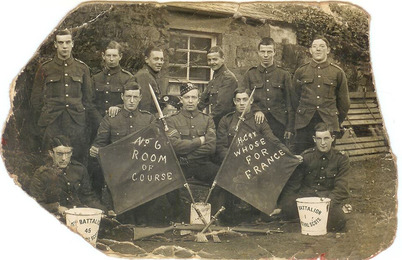 Kirkliston, some men of 2/10th Cyclist Battalion, Royal Scots. Although the names are unknown, it is possible Queensferry men are in this photo. If you recognise anyone, please contact us. We do know the front right is Pt.Gaffney. Photo is reproduced with kind permission of Katie Sainsbury, Great Granddaughter of Pt. Gaffney. Kirkliston, some men of 2/10th Cyclist Battalion, Royal Scots. Although the names are unknown, it is possible Queensferry men are in this photo. If you recognise anyone, please contact us. We do know the front right is Pt.Gaffney. Photo is reproduced with kind permission of Katie Sainsbury, Great Granddaughter of Pt. Gaffney. 1916 - Queensferry and Dalmeny Memorials 17 Queensferry Men The 2/10th (Cyclist) Battalion Territorial Force formed in Linlithgow, September 1914. The 2/10th was originally mobilised as bicycle infantry, but never served in this role. It was the only second-line battalion of the regiment to be sent overseas, attached to the 7/8th Kings Own Scottish Borderers, 46th Brigade, 15th (Scottish) Division. The 7th and 8th Battalions merged in May 1916 to become the 7/8th. The 15th Division was established by the Scottish Command in September 1914, as part of Kitchener's Second New Army. By the early summer of 1915, the Division was considered to be ready for France and embarkation orders were received on 3 July 1915. They landed in France, 7-13 July 1915. The Division served with distinction on the Western Front for the remainder of the war, taking part in most of the significant actions and winning regard by the enemy as one of the most formidable in the British army. Two Queensferry men, of this Battalion, died in 1916. Private Patrick Connolly, 2/10th Cyclist Battalion, Royal Scots, a Shale Miner, enlisted in Queensferry. He was killed in France on 21.8.1916 aged 21. He was born on 4.9.1895 in Smith's Land, Queensferry. His Parents were John Connolly, a Shale Miner and Anne Jane McPhillips who died of Pneumonia in 1900. In 1901 Patrick and his Sister Elizabeth were adopted by a Catherine Waddock, ms McPhillips and her Husband, living in Kirkliston. Catherine and Anne Jane were not sisters, having different parents, but may have been related. Patrick is buried in Grave Ref:111.A29, Daours Communal Cemetery Extension, Somme, France, and was awarded the Victory and British War Medals. Private Charles Sandercombe, 2/10th Cyclist Battalion, Royal Scots, died on 18.8.1916 in France. He was born on 23.2.1896 in West Terrace, Queensferry. His Parents were Charles, a Painter and Christina Sandercombe, ms Fraser and he had 3 Brothers and 3 Sisters. His Father died, in Edinburgh Royal Infirmary, in1900, of a type of Skin Cancer of his Jaw, usual address 13 Rosshill Terrace, Dalmeny. Charles' Brother James of 17th Royal Scots, died 25.9.1918, aged 36, in the Somme. Charles is buried in Grave Ref: VI. A. 19. – Caterpillar Valley Cemetery, Longueval, Somme, France and was awarded the Victory and British War Medals. ************ Private William Bain, 1st Battalion Gordon Highlanders, a Weaver, enlisted in Lochgelly, Fife. He was killed in action, in Belgium, on 2.3.1916 aged 20. He was born on 23.8.1896 in Catherine Terrace, Queensferry. His Parents were William Aidie Bain, a Master Baker and later an Insurance Agent, and Jane Henderson Bain MS Steven. He had 5 Sisters. William is remembered on Panel 38, Ypres -Menin Gate, Belgium and was awarded the 1914/15 Star, Victory and British War Medals. 2nd Corporal James Davidson, a Bricklayer, No:1451 of Reserve Works Company - 1/1st (City of Edinburgh) Field Company Royal Engineers, enlisted in Edinburgh on 24.11.1914. He died of wounds on 24.9.1916 aged 26. At the time of enlisting, his parents were living in 21 Clark Place, Queensferry. James was born on 14.7.1890 in Hillend, Muiravonside. His Parents were John and Isabella Davidson, ms Wardrop. They married on 9.11.1888 in Muiravonside. John, 26, a Crane Driver, usual address, Dalmeny, and Isabella, 21, a Domestic Servant. James grew up in Muiravonside with his siblings, Mary-c1889, born in Queensferry, John-c1895, born in Muiravonside. In 1891 aged 9 months, James is in Hillend Cottage with his Parents and sister Mary. Father an Engine Man. In 1901, aged 10, he is in Ballinbreigh, Muiravonside with Parents and siblings. Father a Stationary Colliery Winding Engine Man. His Company left Devonport on 19.1.1915 and arrived in Port Said, Egypt on 5.1.1916. Leaving Alexandria in April 1916, for France. He was wounded by shellfire in action on 20.9.1916 and died of wounds (compound Fracture of the skull) on 24.9.1916. His next of kin is Mother Isabella Davidson of 8 Forth Terrace, South Queensferry. Davis is buried in St Sever Cemetery, Rouen, Grave Ref: B. 18. 46, He was awarded the British War Medal and the Victory Medal. Private George Charles Earl, 11th Battalion Royal Scots, a Postman, then a Shale Miner, enlisted in kirkliston. He died of wounds, in France on 23.10.1916 aged 33. He was born on 26.3.1883 in Leith but by 1891 the Family were living in Queensferry. His Parents were Thomas William, a Ship's Rigger and Elizabeth Earl ms Cairney. He had 1 Sister and 2 Brothers. In 1903 George married Christina Rintoul and they were living in Hopetoun Road, Queensferry in 1911, with their 4 Children. He is buried in Grave Ref: 111.H. 31 -Dernacourt Communal Cemetery Extension, France. He is also commemorated on Kirkliston Memorial. George was awarded the 1914/15 Star, Victory and British War Medals. Private James Lapsley, 23rd Battalion Duke of Cambridge’s Own (Middlesex Regiment), a Slater, was killed in action in France on 15.9.1916 aged 36. He was born on 3.7.1880 in Bellstane, Queensferry. His Parents were William and Margaret Lapsley m.s. Garvie. James had 4 Sisters and 2 brothers. Brother William died of Whooping Cough aged 7 months in 1888 and Brother Robert died in Ypres on 28.10.1914. (see 1914 list). James is remembered on Pier and Face 12D and 13B, Theipval Memorial, Somme, France. He is also remembered on Queensferry Primary school and St Margaret's Church Memorials. James was awarded the Victory and British War Medals. Guardsman Ralph Lawson, 2nd Battalion Scots Guards, a Forester, died of wounds, in Somme, France, on 26.7.1916 aged 22. He was born on 29.3.1894 in High Street, Queensferry. His Parents were James, a Baker and Emma Lawson, ms Merker. He had 2 Brothers and 1 Sister. They all lived in bank Buildings, then 28 West Terrace, Queensferry. Ralph is remembered on Lijssenthoek Military Cemetery, Belgium. Grave Ref: V11. D. 7A. He is also remembered on Queensferry Primary School and Queensferry Parish Church Memorials. Ralph was awarded the 1914/15 Star, Victory and British War Medals. Private David Ley, Royal Scots Special Reserve, a Shale Miner, died an Army Pensioner, on 27.7.1916, age 22 at Royal Infirmary, Edinburgh. The cause was Emphysema and Septicemia. His Usual Address was- The Inn, Blackness. He was born on 15.8.1893 in Bellstane, Queensferry. His Parents were George, a Shale Miner, later a Baker, and Margaret Ley, ms Smith. He had 5 Brothers and 2 Sisters. His Mother died in 1904 from Heart Failure. David first enlisted in 1911 and was declared no longer fit for active service on 16.6.1915, aged 21. The reason was Chronic Mid Ear Suppuration –“ Left ear has discharged since childhood measles. He was in France for 8 months when the discharge increased and deafness was much aggravated, probably due to exposure of shell fire, as the nerve of hearing has been damaged he has only a mere trace of hearing in his left ear now” (from his service record). David is also Commemorated on Queensferry Primary School Memorial. He was awarded the 1914/15 Star, Victory and British War Medals. 2nd Lieutenant William Mackie, 3/6th Battalion Royal Scots, a Bank Clerk, died on 29.4.1916 aged 23, in Military Hospital, Craiglieth, Edinburgh. Cause- Sarcoma of Left Lung and Cardiac Respiratory Failure. He is also remembered on Dalmeny Memorial and Queensferry Parish Church and Queensferry Primary School Memorials. He was born on 22.5.1892 in Lillybank House, Queensferry. His Parents were William, a Manager of Distillery and Anne, previously Yule, Mackie, ms Bonar. He had 5 Sisters and 3 Brothers, and they all grew up in Woodburn, Dalmeny. His younger Sister Mary, died of Bronchitis aged 4 months. His Brother James started up a Vet Practice in Kirkliston which is still operating today- James Mackie (Grandfather of David Mackie one of the present owners) looked after two mounted sections during the First World War. He gained an excellent reputation in the equine world. On his return to Scotland he worked in a practice in Dunfermline, from there he moved to Kirkliston and bought the veterinary practice. Initially, the practice was based at Rose Cottage in lower Kirkliston. After a few years he moved the family home and business up to Manse Road in Kirkliston. -The Practice is now in Main Street, Kirkliston with an additional branch surgery in Linlithgow). William is buried in Commonwealth Grave No: 694, Queensferry Cemetery. He was awarded the Victory and British War Medals. Sergeant David Macintosh, 18th Battalion Canadian Infantry, Western Ontario Regiment, was killed in action in France on 15.9.1916. He was born on 2.6.1893 in Queensferry Arms Hotel, Queeensferry. His Parents were Hugh, a Hotel keeper, and Janet (Jessie) Macintosh, ms Fraser. He had 3 Brothers and 3 Sisters. His father died in 1910 of Peritonitis and his Mother died in 1930 in Cramond. David enlisted as a Canadian Citizen. It is possible he emigrated to Canada in 1913, on board S/S Scandinavia of the 'Allan' shipping Line. David’s name is remembered in the Vimy Memorial, Pas de Calais, France. He is also commemorated on Cramond Memorial, Queensferry Parish Church and Queensferry Primary School Memorials and 'Veterans Affairs' Canada. He was awarded the Victory and British War Medals. Private Cornelius McPhillips, 3rd Battalion Royal Scots, a Labourer, then a Miner, died on 2.12.1916 aged 40, an Army Pensioner, at Edinburgh Royal Infirmary, cause- Pneumonia. Usual Residence, Craws Close, South Queensferry. He was born on 6.2.1876 in Hill Square, Queensferry. His Parents were George, a Quarry Labourer and Anne McPhilips, from Ireland. He had 3 brothers. Cornelius first enlisted in 1895. He received a shrapnel wound to his heart and left lung on 28.5.1915, in France and was in hospital in London, then sent home, attending daily to the Military Convalescent Hospital, Hopetoun House, to have his wounds dressed. He was discharged from the Army on 27.1.1916 as no longer fit for War Service. He died of Pneumonia in Edinburgh Royal Infirmary on 2.12.1916 aged 40. Cornelius was awarded the King’s and Queen’s South African Medal and 1901 and 1902 Clasps for Paardeberg, Dreitfontein, Johanesberg, Diamond Hill, Belfast and Cape Colony. Also the 1914/15 Star, Victory and British War Medals. He was also awarded a Silver War Badge No: 5954, on 17.10.1916 for Services Rendered (for his wounds). He is also commemorated on Queensferry Primary School and St Margaret's Church Memorials. Private David Moig, 1st Battalion Gordon Highlanders, a Coal Miner, died in Belgium, on 31.1.1916 aged 29. He was born on 13.1.1887 in Edinburgh. His Parents were David, a Flour Miller and Mary Moig, ms Farquhar. His Father died on 12.6.1888 of Congestion of Lungs, Bronchitis and Pleurisy and Mother remarried James Kinnaird, a Market Gardener, on 15.7.1893 in Aberdeen. David had 1 Brother and 1 Sister,also 7 Stepsisters and 3 Step Brothers. David grew up in Aberdeen, married Susan Moig ms Burness in 1908 and they lived in Dalkeith with their 2 Children. His widow later moved to Montrose. David is buried in Grave Ref: 1. D.24, -La Clytte Cemetery, Belgium. He is also commemorated on Queensferry Parish Church Memorial, Montrose Memorial and Aberdeen Roll of Honour. He was awarded the 1914/15 Star, Victory and British War Medals. A link to Queensferry is still to be found, but by process of elimination we believe this to be the correct man. Private John Sanderson, 2nd Battalion Royal Scots, a Slate Miner, died on 22.7.1916 aged 30, in France. He was born on 25.8.1886 in Penicuik. His Parents were James, a Ploughman and Ann Sanderson, ms Murray. He had 2 Brothers and 2 Sisters. In 1901 John, aged 14, was an Agricultural Labourer in Charge of Horses, living in Dalmeny Village, with Parents and Siblings. His Father died in 1908 in Viewforth House, Queensferry, of Pneumonia. Records show his Father James was previously married to Agnes Aitken who is the mother of older Brother James. She died of Smallpox in 1872, aged 27. John is remembered on Panel Ref: Pier & Face 6D & 7D. -Thiepval Memorial, Somme, France, also Kirkliston Memorial and he was awarded the 1914/15 Star, Victory and British War Medals. Private Peter Smith, 8th Battalion, Royal Dublin Fussiliers, a Shale miner, enlisted in Inverkeithing. He died on 8.9.1916 aged 38, in France. He was born on 11.7.1878 in West End, Queensferry. His Parents were John, a Distillery Labourer, born in Ireland, and Ann Smith ms Heavy, a Washerwoman. He had 3 Sisters and 1 Brother, John, who was killed in Salonika, on 17.9.1916 aged 33, listed below. On 5.11.1910, aged 31, living in Covenanters Land, Queensferry, Peter married Mary Smith, aged 42, a Widow, of McArthurs Land, Queensferry. Peter is commemorated on Panel Ref: Pier & Face 16C. Thiepval Memorial, Somme, France. Also on the Kirkliston Memorial, St Margaret’s Church and Queensferry Primary School Memorials. He was awarded the Victory and British War Medals. Private John Smith, 11th Battalion Scottish Rifles (Cameronians), a Quarry Labourer, died on 17.9.1916 aged 32, in Salonika, Greece. He was born on 11.4.1884 in Craws Close, Queensferry. His Parents were John, a Retortman at this time, and Ann Smith ms Heavy, a Washerwoman. He had 3 Sisters and 1 Brother, Peter who is mentioned above, having died on 8.9.1916 in France. John is buried in Grave Ref: 417, Salonika (Lembet Road) Military Cemetery, Greece, and also Commemorated on Kirkliston Memorial, St Margaret’s Church and Queensferry Primary School Memorials. John was awarded the Victory and British war Medals. Corporal George Thomson Stewart, 3rd Special Battalion Royal Engineers, enlisted in Chatham, Kent. He was promoted to Corporal in Chemistry Section immediately and was involved in the development of the British response to the German use of Chlorine Gas. He died on 9.11.1916, aged 19, of wounds received when gassed, in France. George was born on 20.8.1887, in Glasgow. His Parents were George, a Grocer and later a Dairyman, and Agnes Stewart ms Thomson. He had 2 Brothers and they all grew up in Glasgow. Although on Queensferry memorial, no Queensferry link found so far. He is buried in Grave Ref: 1V.A.45. Cite Bonjean Military Cemetery, Armentieres, and was awarded the 1914/15 Star, Victory and British War Medals. Lance Sergeant George James Stewart, 16th Bat. Manitoba Canadian Infantry, Canadian Expeditionary Force, a Clerk, died on 7.8.1916 in France, aged 37. He was born on 9.5.1879 in West End, Queensferry. His Parents were John, a Gardener and later a Burgh Officer, and Agnes Stewart ms Barker. He had 3 Sisters and 1 Brother. George married Eveline Alice Wright in 1905 in Kent, and they emigrated to Canada between 1905 and 1914. At time of Enlisting (23.12.1914), in Canada, Next of Kin (Wife) Address is 116 Lydia St, Winnipeg, Canada. He is buried in Grave Ref: 1V. G. 10. - Larchwood Railway Cutting Cemetery, West- Vlaanderen, Belgium, and is also remembered on Kirkliston Memorial, Queensferry Parish Church and Queensferry Primary School Memorials. George was awarded the Victory and British War Medals. Private Charles Stewart Watson, 8th Battalion Royal Scots, died on 3.9.1916 aged 18. He was born in 1898 in Hampstead. His Mother was Mrs Christina Watson, later of the Liberal Club, Edinburgh. In 1911 He was living with the Thornton Family of New Quebec Street, Marlyebone, as a Boarder, aged 13 years. Charles then lived in the Forth Bridge Hotel,Queensferry, with his Aunt, Hilda Watson, a relative of Mrs Mackenzie, who was proprietor. Charles is buried in Grave Ref: V1.G.17, Abbeville Communal Cemetery, Somme, France, and is also commemorated on Kirkliston Memorial. He was awarded the Victory and British War Medals. 6 Dalmeny Men Lance Corporal James Beveridge, 1/3rd Battalion Royal Scots, a Miner, enlisted in Queensferry on 22.9.1903. He died on 18.7.1916, aged 29, in France. He was born on 22.11.1886 in Uphall, and his Parents were Peter, a Shale Miner and Agnes Beveridge ms Martin. he had 6 Brothers and 3 Sisters. On 5.7.1907 in South Queeensferry, James aged 21, a Shale Miner and Private of 3rd Royal Scots, of Bellstane, Queensferry, married Margaret Crane, a Widow, aged 20, an Upholsterer, of Dowies Hill, Cramond Bridge. They moved to 7 Back Row, Dalmeny. They had 3 children (one Margaret's from previous marriage). On 27.3.1917, Margaret, aged 27, now a widow, married Peter Miller, in Edinburgh. In 1911 census his brother Peter was living in The Rows, Dalmeny with his wife and 5 children. It would appear brother Robert was also living at the same address with his wife and 2 children. James is buried in Grave Ref I.E.2. Quarry Cemetery, Muntauban, France, and was awarded the 1914 Star, Victory and British War Medals. Private James Cameron, 6th Battalion Queens Own Cameron Highlanders, enlisted in Edinburgh. He died on 15.6.1916, aged 19, in France. He was born on 28.2.1897 in Long Green, Dalmeny (Long Green Cottages now a listed building in Dalmeny Estate). His Parents were McKenzie, a Mason, and Martha Cameron ms Connell. He had 2 Brothers and 6 Sisters. James is buried in V.C.22. Lillers Communal Cemetery, Pas de Calais, France, and is also commemorated on the Cramond Memorial. He was awarded the Victory and British War Medals. Private Hugh McDairmid, a Gamekeeper in Dalmeny Park, 1st Battalion Queens Own Cameron Highlanders, enlisted in Edinburgh. He died of wounds on 22.11.1916 aged 22. He was born in 1889 in Wicklow, Ireland. His Parents were Hugh, a Gamekeeper and Margaret McDairmid. He had 3 Brothers and 2 Sisters. Hugh is buried in Grave Ref: V11.H.49. Warlencourt British Cemetery, Pas de Calais, France and is also commemorated on the Cramond Memorial. He was awarded the 1914/15 Star, Victory and British War Medals. 2nd Leiutenant William Mackie, 3/6th Royal Scots, died on 29.4.1916. He is also on the Queensferry Memorial, see above. Private Robert Middleton, a Shale Miner, 13th Battalion Royal Scots, enlisted in Edinburgh. He died on 11.5.1916, aged 30, in France, 8 months after entering the Theatre of War. He was born on 8.2.1886 in Newton Village, and his Parents were William, a Shale Miner and Jane Middleton ms Souness. He had 3 Brothers and 2 Sisters. By 1901, the family were living in 13 Stone Rows, Dalmeny. His father died of Leukaemia on 4.9.1903 aged 61. Robert is commemorated on Panel ref: 10 -13, Loos Memorial, Pas de Calais, France and was awarded the 14/15th Star, Victory and British War Medals. Private James Scott, a Farm Hand, 12th Battalion Highland Light Infantry, enlisted in Kirkliston. He died on 16.9.1916, aged 22, in France. He was born on 4.7.1894 in Bankhead, Dalmeny and his Parents were Adam, a Farmer and Dairyman and Grace Scott ms Brown. He had 4 Brothers and 4 sisters. They all worked on Bankhead Farm, Dalmeny. James is commemorated on Panel Ref: Pier and Face 15C, Thiepval Memorial, Somme, France, and is also commemorated on Kirkliston Memorial. He was awarded the Victory and British War Medals. © Queensferry History Group 2015 Hover cursor over image for information. Other badges can be found in earlier entries.
(Please hover cursor over images to read). Queensferry Memorial -Alphabetical 11 men lost in 1915 Private Louis Anderson, Clerk for Wine Merchant, of 2nd Battalion Royal Scots, was killed in action on 28th April 1915, age 30, in Belgium. He was born on 31.12.1884 in Bellstane, Queensferry. His Parents were Robert Anderson, Master Grocer & Catherine Anderson, ms Marshall. He had 4 Brothers and 2 Sisters. His Father died in 1898 from Cirosis of Kidneys, Liver and Aneamia. In 1901 his Mother is a Licensed Grocer. Louis first enlisted in 1906 and served in India from 1907 until 1913, when he was transferred to Army Reserve. He applied for permission to emigrate to Australia, where his brother Peter was living but this was refused and he was mobilized in New South Wales in 1914, then posted to France. Louis is buried in Grave Ref: E. 19 – Kemmel Chateaux Military Cemetery, Belgium. He is also remembered on Queensferry Primary School and Parish Church Memorials. He was awarded the 1914/15 Star, and Victory and British War Medals. - Private Harold Crawford of 11th Battalion (Depot) Royal Scots, died of wounds on 23rd October 1915, aged 19, at Home, in Colchester. Born in Devonport in April 1895, his Parents were Charles, a Master of a Dredger and Esther Crawford, ms Pierce. He grew up in Devonport with his 3 Brothers and 4 Sisters. Aged 16, he was an Errand Boy for a Contracting Company. Harold enlisted in Edinburgh, and his Parents lived in Lilybank House, Queensferry. Harold is buried in Colchester Cemetery, Essex, Grave Ref: P.8.5, and was awarded the 1914/15 Star, and the Victory and British War Medals. - Private William Fisher Kerr, a Cooper, of 5th Battalion Royal Scots, died of wounds received, in Gallipoli on 24th September 1915 aged 22. He was born on 27.12.1892 in Leith. His Parents were Robert Kerr, a Warehouseman, and Jane Kerr ms Cooper. He had 2 Brothers and 3 Sisters. In 1911 census aged 18 he is living in Viewforth House, Queensferry, with Parents and 2 Brothers and 2 Sisters. Brother Robert died in 1918 in France, (see Memorials 1918). William is Commemorated on Panel 26-30, Helles Memorial- Gallipoli, and was awarded the 1914/15 Star, Victory and British War Medals. - Private William Marshall, a Coal Miner, of 12th Battalion Royal Scots was killed in action on 23rd November 1915 aged 24, in France. He was born on 22.10.1891 in Harbour Lane, Queensferry. His Parents were William, a Shale Miner and Agnes Marshall- ms Knox. He had 4 Brothers and 2 Sisters. His Father was unfortunate in his marriages. William's Mother died in 1891, 6 days after giving birth to him. This was his Fathers second Marriage. He married his first wife, Euphemia Reid in February 1880 and she died in March 1880, 6 days after giving birth to a daughter, Euphemia, who died 4 months later of Jaundice. In 1895 His Father married Elizabeth Ridley. She died in 1917 of Epithelioma, an abnormal growth of upper face and cheek. In 1901 William and Sister Catherine were living with their Uncle John Marshall in Nicol's Close, Queensferry. In 1910 William, a Coal Miner now living in Hill of Beath, married Marion Fyfe who was a Pithead Worker. William is buried in Grave Ref: Sp. Mem. H. 21 - Maple Cross Cemetery, Leper, Belgium. He is also remembered on the Queensferry Primary School Roll. He was awarded the 1914/15 Star, Victory and the British War Medals. - Private Alexander Fraser Peddie, a House Painter, of 1st Battalion Kings Own Scottish Borderers, was killed in action on 4th June 1915 in Dardenelles (Gallipoli) aged 42. Born in Edinburgh on 24.1.1873, he grew up in Edinburgh with his Brother Andrew and Sister Jessie. His Parents were Andrew McKay Peddie, a House Painter and Margaret Peddie ms Fraser. His Mother died in 1877 of Acute Laryngitis with complications. Alexander married Elizabeth Metcalf ms McPherson, a widow, in 1903, both were living in Viewforth House, Queensferry. Elizabeth already had 3 children and they had 3 children together. In 1911 he was a house Painter at Dalmeny Estate. His name is commemorated on Panel ref: 84-92, or 220-222, Helles Memorial, Turkey. Alexander was awarded the 1914/15 Star, The Victory and British War Medals. - Private William MacDonald Ronaldson of 2nd Battalion Cameron Highlanders, was killed in action on 23rd April 1915, aged 24, in France. He was born on 1.10.1890 in Edinburgh. His Parents were John Ronaldson, a Railway Plate Layer and Jessie Ronaldson, ms McDonald. He had 4 Brothers and 2 Sisters. His Father died in 1900, aged 42, from Cerebral Incompetence, usual address, Dalmeny. In 1901, aged 10, William is living in Little Brick Row, Dalmeny with his Mother who is a Shopkeeper and his Siblings. Williams younger Brother Peter, was a Chainrunner in Dalmeny Oil Works, and sadly he died in hospital, on 1911, aged 18, from crush injuries (Ruptured Kidney) sustained in an accident in Rosshill Shale Mine, Dalmeny. William is buried in Grave REF: I.H.12. - Larch Wood, (Railway Cutting) Cemetery, Leper, Begium. He is also remembered on the Dalmeny and Queensferry Parish Church Memorials. He was awarded the 1914/15 Star, Victory and British War Medals. - Private James Seller of 1st Scots Guards was killed in action on 1st January 1915, aged 34, in France. Born on 28.9.1880 in Smithsland, Queensferry. He grew up in Queensferry with his Sister Christina. His Parents were Alexander, A Foreman at Oil Works and later a Carter, and Agnes ms Scott. He is listed in the 1901 census as living in London as a Soldier. He married Kathleen Burke in London in 1897, and was a Surfaceman with R B Railway. They had 1 son. Kathleen remarried in 1925, to William Cox. James is commemorated on Panel Ref: 3&4 -Le Touret Memorial, Pas-de-Calais, France. He is also remembered on the Queensferry Primary School and Parish Church Memorials. James was awarded the 1914 Star, Victory and British War Medals. - Private James Shade, a Retortman in Dalmeny Oil Works, of 2nd Battalion Scots Guards, was killed in action on 16th May 1915, in France aged 29. He was born on 21.11.1885 in Liberton, Midlothian. His Parents were Henry Shade, a Colliery Fireman and Jane Shade ms Inglis. His Mother died in 1898 of a Strangulated Umbilical Hernia and Heart Failure. They were living in Stone Row, Dalmeny at the time. In 1900 his Father remarried, Henrietta Henderson of Edinburgh. In 1901 and 1911 James is living in Railway Row, then The Rows, Dalmeny with his Father and Stepmother. James is commemorated on Panel Ref: Panel 3&4 - Le Touret Memorial, Pas-de-Calais, France, and was awarded the 1914/15 Medal, the Victory and the British War Medals. ************************************* Troop Transport Ship Royal Edward (Queensferry lost 2 men when the Troop Ship Royal Edward was sunk). HMT Royal Edward was sunk during the First World War with a large loss of life while transporting Commonwealth troops. On 28 July 1915, Royal Edward embarked 1,367 officers and men at Avonmouth. The majority were reinforcements for the British 29th Infantry Division, but also included were members of the Royal Army Medical Corps. All of the men were destined for Gallipoli. Royal Edward arrived at Alexandria on 10 August, then departed Alexandria for the harbour of Moudros on the island of Lemnos, a staging point for the ships in the Dardanelles. On the morning of 13 August, the German submarine UB-14 launched one of UB-14's two torpedoes from about a mile away and hit Royal Edward in the stern. The ship sank within six minutes. Royal Edward's crew was able to get off an SOS before losing power. Soudan, arrived on the scene at 10:00 and was able to rescue 440 men over the next six hours. Two French destroyers and some trawlers that responded were able to rescue another 221. (Adapted from Wikipedia) * Private George Souter Kerr, a Shale Miner, of 1st Battalion, Kings Own Scottish Borderers, drowned in the Aegean Sea, with the sinking of the Troop Transport Ship, Royal Edward, on 13th August 1915, aged 25, on the way to Dardenelles (Gallipoli). Born in Leith on 7.11.1889, he was living in Queensferry by 1901, aged 11, with his Parents-Thomas, a Rigger on the Forth Bridge and Jemima Kerr ms White. George had 1 Brother and 3 Sisters. In 1909, George aged 19, of Clark Place, Queensferry, married Margaret Glass Marshall of Edinburgh. She remarried after his death, a Mr Bannister and was living in Leeds. George is commemorated on Panel 84-92 or220-222, - Helles Memorial, Gallipoli - In Memorial Book – Gallipoli, Part 12 - Soldiers Lost At Sea. He is also remembered on the Queensferry Primary school Memorial. He was awarded the 1914/15 Star, the Victory and British War Medals. Lance Corporal Charles Stevenson, Organist at Cramond Kirk, of 3rd/1st Lowland Field Ambulance, Royal Army Medical Corps, drowned in the Aegean Sea, with the sinking of the Troop Transport Ship, Royal Edward, on 13th August 1915, aged 42, on the way to Dardenelles (Gallipoli). Born in Milngavie on 14.5.1873, he was living in Springwell Terrace, Queensferry by the 1891 census, aged 17. Then East Terrace and back to Springwell Terrace by 1911. His Parents were Charles Stevenson, Papermaker at the time of his birth and Jeannie Stevenson, ms Gibb. He had 3 Brothers and 2 Sisters. His Father was Provost of South Queensferry from July 1902 until November 1906. He was also Proprieter of Prince of Wales Hotel (now the Ferry Tap), Queensferry. He is commemorated in Panel 199&200 or 236-239 &328. Helles Memorial, Turkey, and was awarded the 1914/15 Star, The Victory and British War Medals. - ************************************** Dalmeny Memorial – 7 Men 1915 Private Robert Phorson Brown (Polson on War records, Phorson on Birth Certificate) of 14th Field Ambulance, Royal Army Medical Corps, died on 19.5.1915, aged 20, in Ypres, Belgium. He was born on 9.4.1895 in Dalry, Edinburgh. His Parents were George, a Wood Sawyer and Margaret Brown ms Hewitt. He had 4 Brothers and 5 Sisters. In 1901, aged 5 he is living in Parkhead, Glasgow with his Parents and Siblings. In 1911 aged 15, and a Labourer in a Distillery, he is in Southfield Street, Gorgie, Edinburgh with his Parents and Siblings. He is Commemorated on Panel Ref: 11.L.35. Perth Cemetery, (China Wall) West Vlaanderen, Belgium and was awarded the Victory and British War Medals. No Dalmeny connection found as yet, but we believe this to be the correct man. - Corporal John Kennie of 8th Battalion Seaforth Highlanders, died on 25.9.1915 aged 24 in France. John is also commemorated on the Kirkliston Memorial. He was born on 1.7.1891 in Loanhead, Lasswade.His Parents were Michael, a Labourer and Rosanna Kennie ms Curran, who was born in Ireland. He had 2 Brothers and 1 Sister. In 1901, aged 10, John was living in Kirkliston with his Parents and siblings. His father died of Prostate Cancer in 1936 in East Terrace, South Queensferry. His Mother died in East Terrace, Queensferry in1954. He is remembered on Panel Ref: 112 -115, Loos Memorial, Pas de Calais, France, and was awarded the 1914/15 Star, Victory and British War Medals. - Corporal John McKinley of 8th Battalion Royal Highlanders (Black Watch) was killed in action on 27.9.1915, one month after his 19th birthday, in France. He was born on 23.8.1896 in Willowbrae Road, Edinburgh. There is a little confusion about John. His birth Certificate states his name as 'William', however there is a note at the side saying there is 'an amendment to the child's name'. Heading of certificate states 'Birth- John Stevenson Mckinlay', therefore we are confident this is correct. (He has a younger Brother, William). Also the 1911 Census says he was born in Dalkeith. It also says Sister Agnes was born in Edinburgh but her Birth certificate says Queensferry, as was Sister Jane. In Ancestry, his War information says he was born in Dalkeith, however looking at other information, we are still confident we have the correct person. (We cannot find a Dalmey link for any other John McKinlay). John's Parents were Andrew Stevenson McKinlay, a Confectioner and Margaret McKinlay, ms Bradford. John had 2 Brothers, William and Andrew and 2 sisters Agnes and Jane, both born on the Loan, Queensferry. His Brother Andrew, born 1902, died in 1906, aged 4, with Tubercular Disease of the Brain. In 1901, aged 4, John was living in Burdiehouse, Liberton, with Parents, Father a Plumbers' Van Man and Mother, a Confectioner from Home, also brother William-age 3. In 1911 aged 14, John was an Apprentice Blacksmith in Dalmeny Oil Works, living in The Rows, Dalmeny, with Parents, Father an Engineman in Dalmeny Oil Works, and Siblings William-13, Agnes-6, and Jane-4. In the 1915 Valuation Roll, an Andrew McKinlay is a Tenant in 8 Church Row, Dalmeny. He is commemorated on Panel 78 – 83, Loos Memorial, Pas de Calais, France, and was awarded the 1914/15 Star, Victory and British War Medals. - Private William Macdonald Ronaldson of 2nd Battalion Cameron Highlanders. Information in Queensferry list above as he is on both memorials. - Gunner John Smith of Royal Horse Artillery & 119th Battery, Royal Field Artillery, died on 31.1.1915 in France. He was born on 25.12.1893 in Gilmerton, Liberton. His Parents were John, a Coal Miner and Elizabeth Smith ms Williams. He had 2 Brothers and 4 Sisters. In 1901 they are living in Church Row, Dalmeny, and his Father is a Shale Miner. In 1911 he is 17 and also a Shale Miner, living with his Parents in The Vennel, Queensferry. His Sister Elizabeth, 15 is a Bottler in the Distillery. He is buried in Grave Ref: A. 4. 3. - St Sever Cemetery, Rouen, France, and was awarded the 1914 Star, Victory and British War Medals. - Private William Currie Turner of 1st Battalion Queens Own Cameron Highlanders, died on 13.10.1915 aged 26, in France. He was born on 12.1.1889 in Home Farm, Salton, Haddington. His Parents were James a Shepherd, and Mary Ann Turner ms Spence. He had 8 Brothers and 2 Sisters. In 1901 they are living on Chapel Farm, Dirleton, East Lothian. William enlisted in November 1914 and was employed as a Shepherd living in Dalmeny Park, Dalmeny Estate. William is commemorated on Panel Ref: 119-124, Loos Memorial, Pas de Calais, France, and was awarded the 1914/15 Star, Victory and British War Medals. Corporal William Russell of 9th Battalion Gordon Highlanders, died from wounds, on 29.9.1915 aged 27, in The Battle of Loos, France. He was born on 17.11.1887 in South Leith. His Parents were Peter, a Carter and Elizabeth Russell ms Hill. He had 3 Sisters and 3 Brothers. William married on 24.9.1909 in The Manse, Prestonpans- William Russell, 21, Vanman, of Leith, and Lizzie Hill, 17, Domestic Servant, of Prestonpans. His Father married 3 times. 1st – 27.4.1877, aged 22, a Labourer, and Margaret Mitchell aged 25, an Outdoor Worker, in Edinburgh. She died on 15.4.1881 in Leith of Consumption. 2nd marriage, aged 27, to Helen Purves – Williams Mother, on 31.12.1883, She died on 22.11.1891, in Leith, of a Coma occurring 1 hour after childbirth. 3rd aged 42, on 5.2.1897, to Isabella smith aged 32, a Housekeeper, in Leith. In 1901 aged 13, William is living in Leith with his Father, a Wool Carter, Step-Mother Isabella, and Siblings. In 1911, aged 23, he is a Carter and living in Springfield street, Leith, with Father, Step-Mother Isabella, and Siblings. William is marked on Census as married, but Wife is not listed. William is Commemorated on Panel Ref: 115 -119, Loos Memorial, Pas de Calais, France. He was awarded the 1914/15 Star, British War Medal and Victory Medal. (There is no link to Dalmeny found as yet but we are confident we have the correct person) © Queensferry History Group 2015
(hover or click on Cap Badge) Queensferry Lost Five Men in 1914 (listed by date) Queensferry's first casualty of the War, Lance Corporal Walter Pearson, a Plumber to trade, of 2nd Battalion Royal Scots, was killed in action, in France, on 26th August 1914, aged 27. Born 14.11.1886 in West Terrace, Queensferry, he and his younger step-brother Peter (who died by drowning, in 1892 aged 4), in West Terrace, Queensferry, lived with their Grandmother, Euphemia Marshall, who died in 1904. His Mother, Janet Pearson, married Peter's Father, Peter Callaghan Snr, in 1893. Sadly, she died in 1899. His Aunt Mary Wilson ms Pearson, in Rosshill, Dalmeny was then his next of kin. Walter's name is commemorated on Panel 5 of the La Ferte- Sous-Jouarre Memorial in Sienne, France. His name is also on the Dalmeny Memorial, and Queensferry Primary School Memorial. Walter was awarded the 1914 Star, Victory and British War Medals. - Private William Ritchie, a Shale Miner, of 2nd Battalion Royal Scots,was killed in action, in France on 15th October 1914, aged 28. Born 8.3.1886 in West End, Queensferry, Father unnamed, he lived in Gas Works Lane with his Mother, Cecelia Ritchie, and Brother Robert, then later in Harbour Head with Mother and Grandmother Mary Ritchie. He married Agnes Lynch in 1911 in Queensferry. He is buried in Grave Ref: V111. B. 3., Vieille-Chapelle Military Cemetery, Lacouture, Pas de Calais, France He is also remembered on Queensferry Primary School and St Margaret's Church Memorials. William was awarded the 1914 Star, Victory and British War Medals. - Guardsman Robert Lapsley, a Shale Miner, of 2nd Battalion Scots Guards, was killed in action, in France on 28th October 1914, aged 21. Born 29.11.1892, in West End, Queensferry he grew up in Harbour Lane with his Parents William and Margaret Lapsley ms Garvie. He had 2 Brothers and 4 Sisters. Sadly his brother William died at 7 months from Whooping Cough and his brother James of 23rd Battalion Middlesex Regiment was killed in action on 15th September 1916. He is Commemorated on Panel 8 of the Menin Gate Memorial, Ypres, Belgium. He is also remembered on the Queensferry Primary School and St Margaret's Church Memorials. Robert was awarded the 1914 Star, Victory and British War Medals. - Private Daniel Gibson of 2nd Battalion Royal Scots, died of wounds received in Battle, in France on 31st October 1914, aged 33. Born 19.9.1881 in Falkirk, his Father, Daniel Robertson Gibson, died in 1882 and his Mother, Margaret Robertson Wilson Gibson ms Sinton, a School Teacher, married Henry Ross in 1886. Daniel had 2 brothers and 1 sister. Daniel lodged at Viewforth House, Queensferry and he was employed as a Grocer in the Co-operative Society. Daniel first enlisted in 1899 and served in the Boer War. He is buried in Grave Ref: 1. A. 10. -Longuenesse (St Omer), Souviner Cemetery, Pas de Calais, France. Daniel is also remembered on the Queensferry Masonic Memorial. He was awarded the Queens and Kings South Africa Medals 1901 -1902 and Clasps, Belfast, Cape Colony and Orange Free State and the 1914 Star, Victory and British War Medals. - Private John Wilson, 1st Battalion Coldstream Guards, was killed in action, in France on 22nd December 1914, aged 27. Born 20.9.1887 in Rosebery Buildings, he grew up in Queensferry with his Parents, Alexander, a Joiner and Mary Wilson ms Pearson. John had 6 brothers and 2 sisters. He is commemorated on Panels 2 and 3, at Le Touret Memorial, Pas- de- Calais, in France. He is also remembered on the Dalmeny Memorial. John was awarded the 1914 Star, Victory and British War Medals - Dalmeny losses - Walter Pearson, above John Wilson, above and Private Angus Ramage, of 2nd Battalion Scots Guards. Angus enlisted at least in 1910, as he was in Caterham then and in Cairo in 1912. He left the Army in 1912 and joined Linlithgow Police Force. He was recalled to Scots Guards on the outbreak of WW1. Born 13.3.1888 in Dunbar, his Parents were Andrew, a Railway Gatekeeper and Isabella McBain Ramage ms Robertson. They married in Portobello on 7.6.1878. Angus had 8 Brothers and 1 Sister, 3 of them born in Portobello. In 1883 Father, Andrew lost his right arm in a work accident. They grew up in Dunbar, Father a Gatekeeper at Beil Crossing. At some time the family moved to Dalmeny as his father died in 1917, a Retired Railway Gatekeeper in Craigie, Dalmeny. Angus was killed in action on 26.10.1914 aged 26, in Ypres, Belgium. He is commemorated on Panel 11 of the Menin Gate Memorial, Ypres, Belgium, and was awarded the 1914 Star, Victory and British War Medals. - (hover or click on images for in formation)
As our space is limited here we can't print everything we would like. If you would like to know more about any of the men featured here, please contact us - see introduction page for contact information. © Queensferry History Group 2014 Queensferry Memorial was unveiled on Saturday 26th November 1927.
The Memorial consists of a bronze plaque bearing in bold lettering the names of the 66 fallen and is surmounted by stone scrolls with the burgh coat of arms and supported on a plinth of ornamental work, the whole design in keeping with the style of the municipal steeple (Rosebery Hall, in the north wall of which it is inserted. Mr Gamley, from Edinburgh was sculptor. During the ceremony, Mr Harry Waiklin, Town Clerk read out the 66 names of the men of Queensferry who had lost their lives. Provost Fairlie called upon ex Provost Morison to address the gathering and unveil the plaque. During his long and emotional speech he said -"To those whose feet have tread our highways and who went from our midst in the pride of their youth and manhood strong and in simple faith and inspired by a high ideal, they offered the supreme sacrifice in defence of the right, justice and the freedom of our land, the sanctity of our homes, and thrust aside the threat of an alien rule. Here today, in having recorded on that table the names of faces who were once so familiar, we pay homage to all who went forward and offered their all to frustrate the ambitious plotting of an unscrupulous enemy to civilization." He went on to say "With that Memorial ever before our eyes let it be a sacred vow so far as in us lies to devote every effort to assist the living suffering from the aftermath of war and we do not forget those who had to remain and keep the home fires burning, whose patience and endurance are but a reflection of that spirit in which they offered their all in their country's service. Our hero's fought for freedom and there can be no peace where there is no freedom". (Condensed from West Lothian Newspapers) ****************************************** Dalmeny Memorial was unveiled on 11th November 1922 The memorial stands on a site granted by Lord Rosebery. It is in the form of a Mercat Cross, and is of the finest Cullalo freestone. A shaft rises from steps and plinth, and is surmounted by a lion rampant, supporting four shields with appropriate heraldic devices. A bronze tablet on the plinth records the names of 33 inhabitants of the parish who fell in the war. The names of the fallen were read by Mr A. D. Walker. General Sir Francis Davies, K.C.B., K.C.M.G., Commander-in-Chief of the Forces in Scotland, addressed the large gathering on the village green. During his speech he said the people of Dalmeny did well to pay honour to the fallen, as they had brought great honour to those who remained. A little over 8 years ago, the men they now commemorated were living there amongst them, most of them educated in their school and worshiping in their church. When the call came they did not hesitate. They went forth and gave their lives. He asked them to remember these whom the fallen had left behind, and also these who had returned from the war and needed their help. He asked that the children should be taught how the call, when it was made, had been answered, and how they, if the call should come again, would have to do the same. If that was done their comrades would not have died in vain, and their sacrifice would be an inspiration to generations to come. (Condensed from Scotsman, 13th November 1922.) © Queensferry History Group 2014 |
